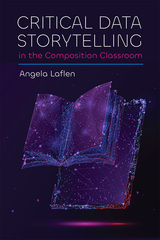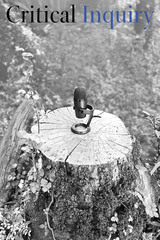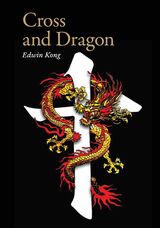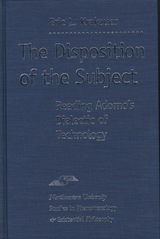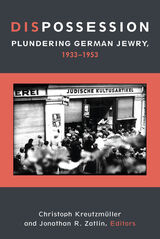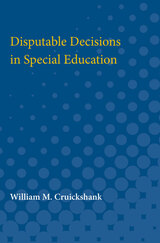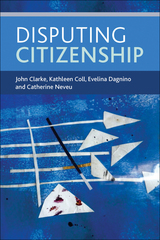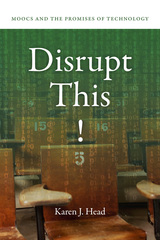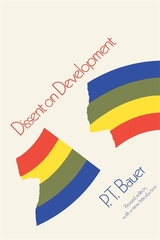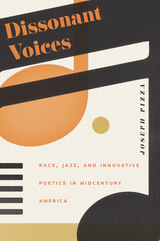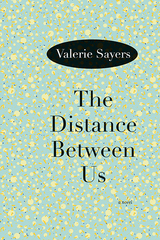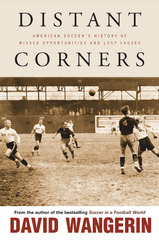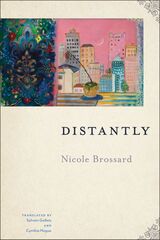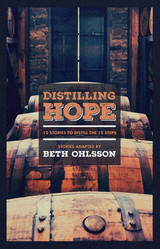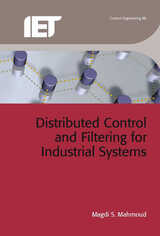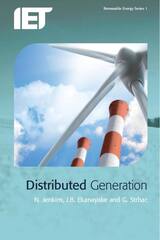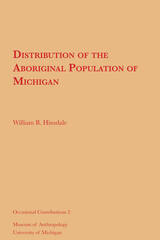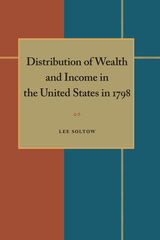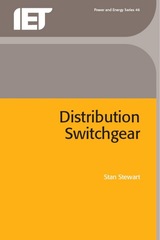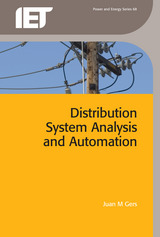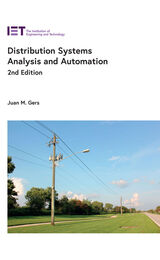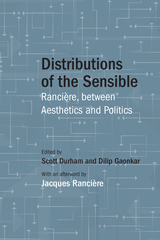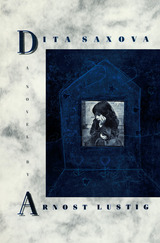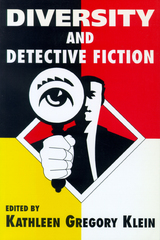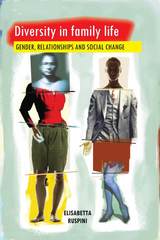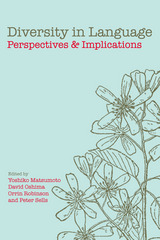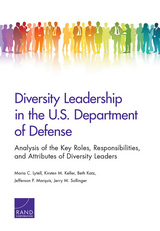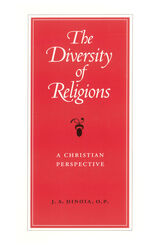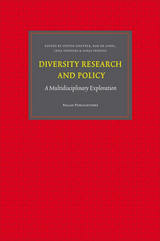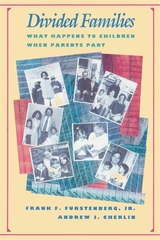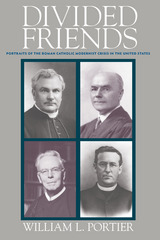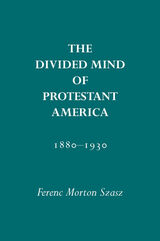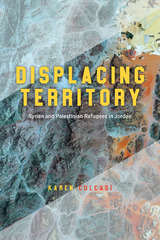 Displacing Territory: Syrian and Palestinian Refugees in Jordan
Karen Culcasi
University of Chicago Press, 2023 Displacing Territory explores the core concepts of territory and belonging—and humanizes refugees in the process.
Based on fieldwork with Palestinian and Syrian refugees in Jordan, Displacing Territory explores how the lived realities of refugees are deeply affected by their imaginings of what constitutes territory and their sense of belonging to different places and territories. Karen Culcasi shows how these individual conceptualizations about territory don’t always fit the Western-centric division of the world into states and territories, thus revealing alternative or subordinated forms and scales of territory. She also argues that disproportionate attention to “refugee crises” in the Global North has diverted focus from other parts of the world that bear the responsibility of protecting the majority of the world’s refugees. By focusing on Jordan, a Global South state that hosts the world’s second-largest number of refugees per capita, this book provides insights to consider alternate ways to handle the situation of refugees elsewhere. In the process, Culcasi brings the reader into refugees’ diverse realities through their own words, inherently arguing against the tendency of many people in the Global North to see refugees as aberrant, burdensome, or threatening.
 Displacing the State: Religion and Conflict in Neoliberal Africa
James Howard Smith
University of Notre Dame Press, 2012
In colonial Africa, Christianity has often supported, sustained, and legitimated a violent process of governance. More recently, however, following decades of violence and oppression, churches and religious organizations have mobilized African publics against corrupt and abusive regimes and facilitated new forms of reconciliation and cooperation. It is the purpose of Displacing the State: Religion and Conflict in Neoliberal Africato illustrate the nature of religion’s ambivalent power in Africa while suggesting new directions in the study of religion, conflict, and peace studies, with a specific focus on sub-Saharan Africa.
As the editors make clear, most of the literature on conflict and peacebuilding in Africa has been concerned with dramatic conflicts such as genocide and war. In these studies, “conflict” usually means a violent clash between parties with opposing interests, while “peace” implies reconciliation and cooperation between these parties, usually with a view to achieving a social order predicated on the idea of the sovereign national state whose hegemony is viewed as normative. The contributors argue that this perspective is inadequate for understanding the nature, depth, and persistence of conflict in Africa. In contrast, the chapters in this volume adopt an ethnographic approach, often focusing on mundane manifestations of both conflict and peace, and in so doing draw attention to the ambiguities and ambivalences of conflict and peace in everyday life. The volume therefore focuses our attention on the extent to which everyday conflict contributes to subsequently larger and more highly visible clashes.
Displacing the Statemakes two important contributions to the study of religion, conflict, and peacebuilding. First, it shows how peace is conceptualized and negotiated in daily life, often in ways that are counterintuitive and anything but peaceful. Second, the volume uses African case studies to confront assumptions about the nature of the relationships among religion, conflict, and peace.
“Seldom have recent studies of African culture and politics directly treated 'religion and conflict' as such; Displacing the State remedies that omission. The authors collectively explore the ways religions and religious movements employ media, gender roles, social organizations, and translocal cultural values to challenge, reform, and otherwise shape political culture and social structures. Their insightful contributions are sure to push the ongoing scholarly debate on the complex relationships among ethnicity, religion, governance, and conflict in Africa.”
—R. Scott Appleby, John M. Regan Jr. Director, Kroc Institute for International Peace Studies, University of Notre Dame
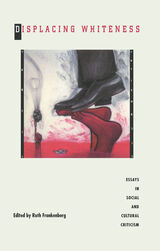 Displacing Whiteness: Essays in Social and Cultural Criticism
Ruth Frankenberg, ed.
Duke University Press, 1997 Displacing Whiteness makes a unique contribution to the study of race dominance. Its theoretical innovations in the analysis of whiteness are integrated with careful, substantive explorations of whiteness on an international, multiracial, cross-class, and gendered terrain. Contributors localize whiteness, as well as explore its sociological, anthropological, literary, and political dimensions. Approaching whiteness as a plural rather than singular concept, the essays describe, for instance, African American, Chicana/o, European American, and British experiences of whiteness. The contributors offer critical readings of theory, literature, film and popular culture; ethnographic analyses; explorations of identity formation; and examinations of racism and political process. Essays examine the alarming epidemic of angry white men on both sides of the Atlantic; far-right electoral politics in the UK; underclass white people in Detroit; whiteness in "brownface" in the film Gandhi; the engendering of whiteness in Chicana/o movement discourses; "whiteface" literature; Roland Barthes as a critic of white consciousness; whiteness in the black imagination; the inclusion and exclusion of suburban "brown-skinned white girls"; and the slippery relationships between culture, race, and nation in the history of whiteness. Displacing Whiteness breaks new ground by specifying how whiteness is lived, engaged, appropriated, and theorized in a range of geographical locations and historical moments, representing a necessary advance in analytical thinking surrounding the burgeoning study of race and culture. Contributors. Rebecca Aanerud, Angie Chabram-Dernersesian, Phil Cohen, Ruth Frankenberg, John Hartigan Jr., bell hooks, T. Muraleedharan, Chéla Sandoval, France Winddance Twine, Vron Ware, David Wellman
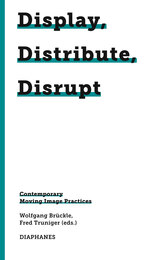 Display, Distribute, Disrupt: Contemporary Moving Image Practices
Edited by Wolfgang Brückle and Fred Truniger
Diaphanes, 2023 An exploration of the digital revolution in traditional audiovisual media.
Over the last two decades, the field of audiovisual media has changed dramatically. Until recently, there was only a small number of technologies, distribution channels were few, and moving images were largely limited to cinemas, televisions, galleries, or art museums. Also, both the producers and the audiences of such content clearly identified as human beings. Those days are over.
The digitization of image production and distribution ushered in a massive disruption to the traditional landscape of the moving image that had existed since the advent of the audiovisual industry. Touching on discussions such as child producers, the marketing interests of big corporations, and the origins of new media formats and practices, Display, Distribute, Disrupt maps the new conditions for creative work in the ever-widening sphere of audiovisual media.
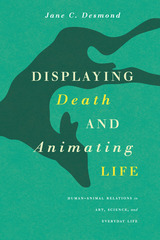 Displaying Death and Animating Life: Human-Animal Relations in Art, Science, and Everyday Life
Jane C. Desmond
University of Chicago Press, 2016 The number of ways in which humans interact with animals is almost incalculable. From beloved household pets to the steak on our dinner tables, the fur in our closets to the Babar books on our shelves, taxidermy exhibits to local zoos, humans have complex, deep, and dependent relationships with the animals in our ecosystems. In Displaying Death and Animating Life, Jane C. Desmond puts those human-animal relationships under a multidisciplinary lens, focusing on the less obvious, and revealing the individualities and subjectivities of the real animals in our everyday lives.
Desmond, a pioneer in the field of animal studies, builds the book on a number of case studies. She conducts research on-site at major museums, taxidermy conventions, pet cemeteries, and even at a professional conference for writers of obituaries. She goes behind the scenes at zoos, wildlife clinics, and meetings of pet cemetery professionals. We journey with her as she meets Kanzi, the bonobo artist, and a host of other animal-artists—all of whom are preparing their artwork for auction. Throughout, Desmond moves from a consideration of the visual display of unindividuated animals, to mourning for known animals, and finally to the marketing of artwork by individual animals. The first book in the new Animal Lives series, Displaying Death and Animating Life is a landmark study, bridging disciplines and reaching across divisions from the humanities and social sciences to chart new territories of investigation.
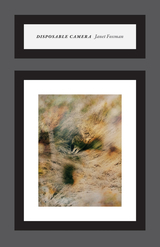 Disposable Camera
Janet Foxman
University of Chicago Press, 2012 Although Disposable Camera is Janet Foxman’s first book-length collection, one would not know it given the wry sophistication of the poems found within. The notion of the disposable camera permeates the entire book, where Foxman considers the instabilities in even our deepest attachments. Here gulfs expand, for instance, between twins, between the musician and his instrument, between the recluse and his inconsolable solitude. Whether a hermit; a twin; a filmgoer utterly taken with Triumph of the Will; or Masaccio, just after he’s painted the Expulsion—the poems’ speakers share a nagging anxiety that satisfaction may not exist outside the effort to imagine it, and that efforts at art and making, however compulsory to their executor, are probably regrettable from the start. A formally inventive and daring book, and one that displays a sophistication well beyond the poet’s years, Disposable Camera will be a valuable addition to American poetry.
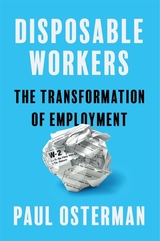 Disposable Workers: The Transformation of Employment
Paul Osterman
Harvard University Press A revealing look at the decline in formal employment in favor of hiring contractors, freelancers, temps, and marginal workers, who are excluded from traditional benefits and career ladders.
Companies cannot exist without workers, but they are increasingly reluctant to have employees. Instead of providing the benefits and protections that have traditionally come with employee status, businesses are turning to tactics that let them treat people as interchangeable parts, to be used and discarded as needed. Drawing on an original survey of over 6,000 workers, Disposable Workers reveals the striking extent of this transformation across the occupational hierarchy, affecting everyone from janitors to nurses.
Paul Osterman identifies three distinct categories of disposable workers: contractors, freelancers, and marginal employees. The marginal category, unique to Osterman’s analysis, describes workers who are employees from a narrow legal standpoint but are held at arm’s length by their firm—left without job security, skill training, or opportunities for promotion. Many low-wage service workers toil in marginal jobs, but so do white-collar professionals such as adjunct university faculty and staff attorneys at law firms. When the three categories are added up, they account for more than 35 percent of the American workforce.
Not all disposable workers object to their arrangements. But most contractors and marginal employees would prefer standard employment, and there is a significant cost to their current status. In response, Disposable Workers offers a range of policy recommendations, including mechanisms to prevent over-reliance on contracting and freelancing as well as reforms to improve job quality for part-timers and marginal employees. As the deconstruction of employment affects more and more workers, the importance of such measures will only grow.
The Disposition of the Subject: Reading Adorno's Dialectic of Technology
Eric L. Krakauer
Northwestern University Press, 1998 The unprecedented mass manipulation, mass death, and trauma of World War II created a heightened interest in technology and totalitarianism among European and American intellectuals. The Disposition of the Subject explores Theodor Adorno's attempt to hinder further atrocity through philosophical analysis of technology and of its contribution to totalitarianisms of various kinds: political, aesthetic, epistemological.
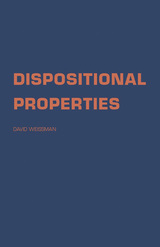 Dispositional Properties
David Weissman
Southern Illinois University Press, 1965 In Dispositional Properties, David Weissman attacks a problem central to the philosophy of mind and, by implication, to the theory of being: Are there potentialities, capabilities, which dispose the mind to think in one way rather than another? The volume is arranged in the form of four arguments that converge upon a single point. First, there is an intricate discussion of the shortcomings of Hume's account of mind as ideas and impressions. Next comes a brief treatment of the arguments of some of Weissman's contemporaries, including Carnap and Braithwaite. Third, Weissman discusses Wittgenstein's theories of learning and knowledge. Finally, there is a full discussion of Aristotle and his doctrine of potentialities. The question this book ultimately raises is how to steer between a doctrine of mind as no more than a series of acts, on the one hand, and a doctrine of mind as a kind of unitary object, on the other. The solution is to show first of all that there must be a potentiality in the universe, and then to show clearly and in detail that the mind is shot through with that potentiality.
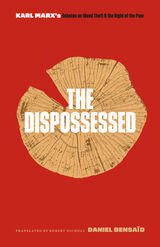 The Dispossessed: Karl Marx’s Debates on Wood Theft and the Right of the Poor
Daniel Bensaïd
University of Minnesota Press, 2021 Excavating Marx’s early writings to rethink the rights of the poor and the idea of the commons in an era of unprecedented privatization
The politics of dispossession are everywhere. Troubling developments in intellectual property, genomics, and biotechnology are undermining established concepts of property, while land appropriation and ecological crises reconfigure basic institutions of ownership. In The Dispossessed, Daniel Bensaïd examines Karl Marx’s early writings to establish a new framework for addressing the rights of the poor, the idea of the commons, and private property as a social institution. In his series of articles from 1842–43 about Rhineland parliamentary debates over the privatization of public lands and criminalization of poverty under the rubric of the “theft of wood,” Marx identified broader anxieties about customary law, property rights, and capitalist efforts to privatize the commons. Bensaïd studies these writings to interrogate how dispossession continues to function today as a key modality of power. Brilliantly tacking between past and present, The Dispossessed discloses continuity and rupture in our relationships to property and, through that, to one another. In addition to Bensaïd’s prescient work of political philosophy, The Dispossessed includes new translations of Marx’s original “theft of wood” articles and an introductory essay by Robert Nichols that lucidly contextualizes the essays.
Dispossession: Plundering German Jewry, 1933-1953
Christoph Kreutzmüller and Jonathan R. Zatlin, Editors
University of Michigan Press, 2020 This collection of essays by a range of international, multidisciplinary scholars explores the financial history, social significance, and cultural meanings of the theft, starting in 1933, of assets owned by German Jews. Despite the fraught topic and the ongoing legal discussions, the subject has not received much scholarly attention until now. This volume offers a much needed contribution to our understanding of the history of the period and the acts. The essays examine the confiscatory taxation of Jewish property, the looting of art and confiscation of gold, the role of German freight forwarders in property theft, salesmen and dispossession in the retail world, theft from the elderly, and the complicity of the banking industry, as well as the reach of the practice beyond German borders.
Disputable Decisions in Special Education
William M. Cruickshank
University of Michigan Press, 1986 Written by William M. Cruickshank, one of the pioneers in special education, this collection of thirteen separate essays approaches significant problems in the field from philosophical, administrative, and semiautobiographical points of view, provoking discussion of some seemingly irreconcilable issues and providing some hard-hitting solutions. Mainstreaming and noncategorical education are particular concerns of Cruickshank, as are such separate issues as human sexuality for the disabled, self-contained classes for the mentally retarded and for gifted children, and the role of the disciplines in special education, as well as the fears, the guilt feelings, and the rejection of the handicapped by "normal" society. The book is filled with issues that should form the basis of much discussion and argument and, hopefully, solutions.
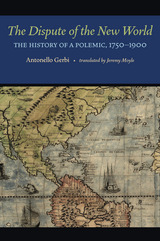 The Dispute of the New World: The History of a Polemic, 1750–1900
Antonello Gerbi
University of Pittsburgh Press, 1973 When Hegel described the Americas as an inferior continent, he was repeating a contention that inspired one of the most passionate debates of modern times. Originally formulated by the eminent natural scientist Georges-Louis Leclerc, Comte de Buffon and expanded by the Prussian encyclopedist Cornelius de Pauw, this provocative thesis drew heated responses from politicians, philosophers, publicists, and patriots on both sides of the Atlantic. The ensuing polemic reached its apex in the latter decades of the eighteenth century and is far from extinct today.
Translated in 1973, The Dispute of the New World is the definitive study of this debate. Antonello Gerbi scrutinizes each contribution to the debate, unravels the complex arguments, and reveals their inner motivations. As the story of the polemic unfolds, moving through many disciplines that include biology, economics, anthropology, theology, geophysics, and poetry, it becomes clear that the subject at issue is nothing less than the totality of the Old World versus the New, and how each viewed the other at a vital turning point in history.
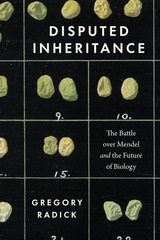 Disputed Inheritance: The Battle over Mendel and the Future of Biology
Gregory Radick
University of Chicago Press, 2023 A root-and-branch rethinking of how history has shaped the science of genetics.
In 1900, almost no one had heard of Gregor Mendel. Ten years later, he was famous as the father of a new science of heredity—genetics. Even today, Mendelian ideas serve as a standard point of entry for learning about genes. The message students receive is plain: the twenty-first century owes an enlightened understanding of how biological inheritance really works to the persistence of an intellectual inheritance that traces back to Mendel’s garden.
Disputed Inheritance turns that message on its head. As Gregory Radick shows, Mendelian ideas became foundational not because they match reality—little in nature behaves like Mendel’s peas—but because, in England in the early years of the twentieth century, a ferocious debate ended as it did. On one side was the Cambridge biologist William Bateson, who, in Mendel’s name, wanted biology and society reorganized around the recognition that heredity is destiny. On the other side was the Oxford biologist W. F. R. Weldon, who, admiring Mendel's discoveries in a limited way, thought Bateson's "Mendelism" represented a backward step, since it pushed growing knowledge of the modifying role of environments, internal and external, to the margins. Weldon's untimely death in 1906, before he could finish a book setting out his alternative vision, is, Radick suggests, what sealed the Mendelian victory.
Bringing together extensive archival research with searching analyses of the nature of science and history, Disputed Inheritance challenges the way we think about genetics and its possibilities, past, present, and future.
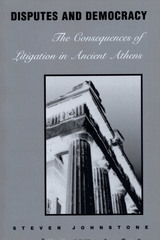 Disputes and Democracy: The Consequences of Litigation in Ancient Athens
By Steven Johnstone
University of Texas Press, 1999 Athenians performed democracy daily in their law courts. Without lawyers or judges, private citizens, acting as accusers and defendants, argued their own cases directly to juries composed typically of 201 to 501 jurors, who voted on a verdict without deliberation. This legal system strengthened and perpetuated democracy as Athenians understood it, for it emphasized the ideological equality of all (male) citizens and the hierarchy that placed them above women, children, and slaves. This study uses Athenian court speeches to trace the consequences for both disputants and society of individuals' decisions to turn their quarrels into legal cases. Steven Johnstone describes the rhetorical strategies that prosecutors and defendants used to persuade juries and shows how these strategies reveal both the problems and the possibilities of language in the Athenian courts. He argues that Athenian "law" had no objective existence outside the courts and was, therefore, itself inherently rhetorical. This daring new interpretation advances an understanding of Athenian democracy that is not narrowly political, but rather links power to the practices of a particular institution.
Disputing Citizenship
John Clarke, Kathleen Coll, Evelina Dagnino, and Catherine Neveu
Bristol University Press, 2014 Many people take citizenship for granted, but throughout history it has been an embattled notion. This unique book presents a new perspective on citizenship, treating it as a continuous focal point of dispute. Written by scholars from Brazil, France, Britain, and the United States, it offers an international and interdisciplinary exploration of the ways different forms and practices of citizenship embody contesting entanglements of politics, culture, and power. In doing so, it offers a provocative challenge to the ways citizenship is normally conceived of and analyzed by the social sciences and develops an innovative view of citizenship as something always emerging from struggle.
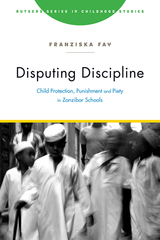 Disputing Discipline: Child Protection, Punishment, and Piety in Zanzibar Schools
Franziska Fay
Rutgers University Press, 2021 Disputing Discipline explores how global and local children’s rights activists’ efforts within the school systems of Zanzibar to eradicate corporal punishment are changing the archipelago’s moral and political landscape. Through an equal consideration of child and adult perspectives, Fay explores what child protection means for Zanzibari children who have to negotiate their lives at the intersections of universalized and local "child protection" aspirations while growing up to be pious and responsible adults. Through a visual and participatory ethnographic approach that foregrounds young people’s voices through their poetry, photographs, and drawings, paired with in-depth Swahili language analysis, Fay shows how children’s views and experiences can transform our understanding of child protection. This book demonstrates that to improve interventions, policy makers and practitioners need to understand child protection beyond a policy sense of the term and respond to the reality of children’s lives to avoid unintentionally compromising, rather than improving, young people’s well-being.
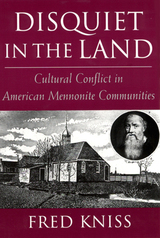 Disquiet in the Land: Cultural Conflict in American Mennonite Communities
Kniss, Fred
Rutgers University Press, 1997 Mennonites have long referred to themselves as "The Quiet in the Land," but their actual historical experience has been marked by internal disquiet and contention over religious values and cultural practice. As Fred Kniss argues in his impressive study of Mennonite history, the story of this sectarian pacifist group is a story of conflict. How can we understand the ironic phenomenon of Mennonite conflict? How do ideas and symbols-both those of the American mainstream and those that are specifically Mennonite-influence the emergence and course of this conflict? What is the relationship betweenintra-Mennonite conflict and the changing historical context in which Mennonites are situated? Through a rigorous analysis of a century of disputes over dress codes, congregational authority, and religious practice, Kniss offers the tools both to understand conflict within a specific religious group and to answer larger questions about culture, ideology, and social and historical change.
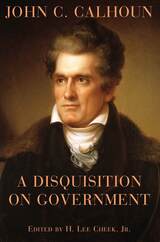 A Disquisition on Government
John C. Calhoun
St. Augustine's Press, 2007 This volume provides the most economical and textually accurate version of Calhoun’s Disquisition available today. As a treatise, the Disquisition is one of the greatest and most enduring works of American politial thought, and a text of seminal importance to all students of American politics, history, philosophy, and law. In the Disquisition, Calhoun believed he had laid a “solid foundation for political science” through revitalizing popular rule. To complete his theoretical and practical mission, Calhoun attempts to explain the best example of the diffusion of authority and cultivation of liberty: the American Constitution. The fundamental law of the American republic provided, after all, the “interior structure” for regulating the shape and scope of government. As a guide for the states and the general government, the Constitution was also part of the “organism” that limited the centralization of authority and allowed for genuine popular rule; and it was Calhoun’s exposition of the connection between the moral demands of a properly constituted concept of popular rule and the need for practical ordering principles that is articulated in this book. Calhoun presents a theory of politics that is both original and in accord with the mainstream of the American political tradition. More than any other thinker of his period, Calhoun sought to explain the enduring qualities of American political thought in light of the troubled world of the mid-nineteenth century. Unlike other theorists who had preceded and would follow Calhoun, both American and European, he did not seek to invent a new mode of philosophical speculation or a “grand theory” for the human sciences. Instead, he attempted to offer a refinement of classical, medieval, and modern notions regarding the relationship between government and the social order. As an effort in philosophical retrenchment, the Disquisition strengthened many pre-existing conceptions regarding political liberty and popular rule within the American regime, while offering such insight with a view toward the future that awaited America. Calhoun’s attempt in the Disquisition to reconcile the good of popular rule with ethical requirements have singular relevance to the many nations in the twenty-first century now engaged, despite the ethnic animosities threatening their destruction, in building post-ideological, civilized political and social orders, especially the peoples of Central and Eastern Europe, Russia, and Africa.
Disrupt This!: MOOCs and the Promises of Technology
Karen J. Head
University Press of New England, 2017 In this smart and incisive work, Karen J. Head describes her experience teaching a Massive Open Online Course (MOOC) and the attendant pressure on professors, especially those in the humanities, to embrace new technologies in the STEM era. And yet, as she argues, MOOCs are just the latest example of the near-religious faith that some universities have in the promise of technological advances. As a teacher of rhetoric, Head is well versed at sniffing out the sophistry embedded in the tech jargon increasingly rife in the academy. Disrupt This! is a broader-based critique of the promises of technological “disruption” and the impact of Silicon Valley thinking on an unsuspecting, ill-prepared, and often gullible university community grasping for relevance, while remaining in thrall to the technologists.
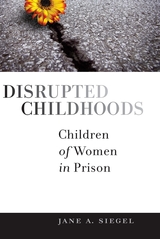 Disrupted Childhoods: Children of Women in Prison
Siegel, Jane A
Rutgers University Press, 2011 Millions of children in the United States have a parent who is incarcerated and a growing number of these nurturers are mothers. Disrupted Childhoods explores the issues that arise from a mother's confinement and provides first-person accounts of the experiences of children with moms behind bars. Jane A. Siegel offers a perspective that recognizes differences over the long course of a family's interaction with the criminal justice system. Presenting an unparalleled view into the children's lives both before and after their mothers are imprisoned, this book reveals the many challenges they face from the moment such a critical caregiver is arrested to the time she returns home from prison. Based on interviews with nearly seventy youngsters and their mothers conducted at different points of their parent's involvement in the process, the rich qualitative data of Disrupted Childhoods vividly reveals the lived experiences of prisoners' children, telling their stories in their own words. Siegel places the mother's incarceration in context with other aspects of the youths' experiences, including their family life and social worlds, and provides a unique opportunity to hear the voices of a group that has been largely silent until now.
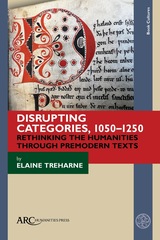 Disrupting Categories, 1050–1250: Rethinking the Humanities through Premodern Texts
Elaine Treharne
Arc Humanities Press, 2024 This study uses a series of medieval texts to address a set of urgent critical issues in Humanities centring on categories of L/literature, history, periodization, languages, and descriptions of script. These categories are inherited from the foundation of modern disciplines and fields of study, superimposed on what could be more flexible modes of scholarship. They are reinforced by modern academics in ways that hinder nuance, intellectual nimbleness, and new interpretative possibilities. Readers and researchers of English Language, Literature, Book Historical/Media Studies, and History are obliged by delimiting labels to navigate problematic foundational approaches and sources that confine and frustrate scholarly investigation. Through a series of cogent case studies, all situated from 1050 to 1250, the book highlights how restrictive and hierarchical modern scholarly categories can sometimes be.
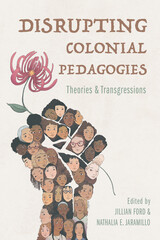 Disrupting Colonial Pedagogies: Theories and Transgressions
Edited by Jillian Ford and Nathalia Jaramillo
University of Illinois Press, 2023 The impact of conquest and colonialism on identity and the construction of knowledge Jillian Ford and Nathalia E. Jaramillo edit a collection of writings by women that examine womanist worldviews in philosophy, theory, curriculum, public health, and education. Drawing on thinkers like bell hooks and Cynthia Dillard, the essayists challenge the colonizing hegemonies that raise and sustain patriarchal and male-centered systems of teaching and learning. Part One examines how womanist theorizing and creative activity offer a space to study the impact of conquest and colonization on the Black female body and spirit. In Part Two, the contributors look at ways of using text, philosophy, and research methodologies to challenge colonizing and colonial definitions of womanhood, enlightenment, and well-being. The essays in Part Three undo the colonial pedagogical project and share the insights they have gained by freeing themselves from its chokehold. Powerful and interdisciplinary, Disrupting Colonial Pedagogies challenges colonialism and its influence on education to advance freer and more just forms of knowledge making. Contributors: Silvia García Aguilár, Khalilah Ali, Angela Malone Cartwright, Adriana Diego, LeConté Dill, Sameena Eidoo, Genevieve Flores-Haro, Jillian Ford, Leena Her, Nathalia E. Jaramillo, Patricia Krueger-Henney, Claudia Lozáno, Liliana Manriquez, Alberta Salazár, León Salazár, and Lorri Santamaría
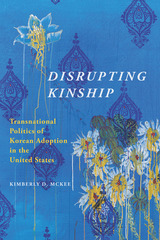 Disrupting Kinship: Transnational Politics of Korean Adoption in the United States
Kimberly D. McKee
University of Illinois Press, 2019 Since the Korean War began, Western families have adopted more than 200,000 Korean children. Two-thirds of these adoptees found homes in the United States. The majority joined white families and in the process forged a new kind of transnational and transracial kinship. Kimberly D. McKee examines the growth of the neocolonial, multi-million-dollar global industry that shaped these families—a system she identifies as the transnational adoption industrial complex. As she shows, an alliance of the South Korean welfare state, orphanages, adoption agencies, and American immigration laws powered transnational adoption between the two countries. Adoption became a tool to supplement an inadequate social safety net for South Korea's unwed mothers and low-income families. At the same time, it commodified children, building a market that allowed Americans to create families at the expense of loving, biological ties between Koreans. McKee also looks at how Christian Americanism, South Korean welfare policy, and other facets of adoption interact with and disrupt American perceptions of nation, citizenship, belonging, family, and ethnic identity.
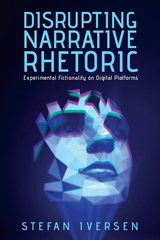 Disrupting Narrative Rhetoric: Experimental Fictionality on Digital Platforms
Stefan Iversen
Ohio State University Press, 2026 Disrupting Narrative Rhetoric investigates how experimental uses of fictionality on digital platforms transform public storytelling, with political and ethical consequences. Focusing on communication that initially misleads only to provoke reflection, Stefan Iversen explores how narrative rhetoric—stories used to persuade within public discourse—can be strategically disrupted to produce what he terms “metanoic reflexivity”: a distinctive mode of afterthought triggered when audiences realize they have read wrong. Drawing from narrative theory, fictionality studies, rhetorical criticism, and digital platform studies, Iversen develops a model for analyzing narratives that play with the boundaries between fiction and nonfiction to motivate action or reconsideration on urgent public issues. These narrative practices—found in humanitarian campaigns, presidential rhetoric, political trolling, and synthetic media—use the digital affordances of platforms like Instagram, X, Reddit, and YouTube to reorient audience expectations and provoke social engagement. Combining theory and close reading, Disrupting Narrative Rhetoric offers a compelling interdisciplinary framework for understanding how narrative experiments can either deepen democratic discourse or contribute to its fragmentation in today’s platformed public spheres.
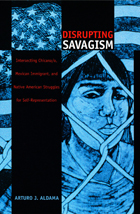 Disrupting Savagism: Intersecting Chicana/o, Mexican Immigrant, and Native American Struggles for Self-Representation
Arturo J. Aldama
Duke University Press, 2001 Colonial discourse in the United States has tended to criminalize, pathologize, and depict as savage not only Native Americans but Mexican immigrants, indigenous peoples in Mexico, and Chicanas/os as well. While postcolonial studies of the past few decades have focused on how these ethnicities have been constructed by others, Disrupting Savagism reveals how each group, in turn, has actively attempted to create for itself a social and textual space in which certain negative prevailing discourses are neutralized and rendered ineffective.
Arturo J. Aldama begins by presenting a genealogy of the term “savage,” looking in particular at the work of American ethnologist Lewis Henry Morgan and a sixteenth-century debate between Juan Ginés de Sepúlveda and Bartolomé de las Casas. Aldama then turns to more contemporary narratives, examining ethnography, fiction, autobiography, and film to illuminate the historical ideologies and ethnic perspectives that contributed to identity formation over the centuries. These works include anthropologist Manuel Gamio’s The Mexican Immigrant: His Life Story, Leslie Marmon Silko’s Ceremony, Gloria Anzaldúa’s Borderlands/La Frontera, and Miguel Arteta’s film Star Maps. By using these varied genres to investigate the complex politics of racialized, subaltern, feminist, and diasporic identities, Aldama reveals the unique epistemic logic of hybrid and mestiza/o cultural productions.
The transcultural perspective of Disrupting Savagism will interest scholars of feminist postcolonial processes in the United States, as well as students of Latin American, Native American, and literary studies.
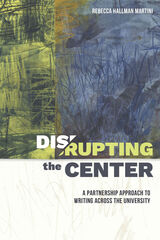 Disrupting the Center: A Partnership Approach to Writing Across the University
Rebecca Hallman Martini
Utah State University Press, 2021 Strategic partnership offers writing centers a framework for responding to disruptive innovations in higher education. Through partnership, writing centers can simultaneously secure resources and support the practice of tutoring writing in ways that enable moments of resistance, where writing consultants and students can tactically challenge the corporate university through their methods of practice. Disrupting the Center explicates, analyzes, and critiques one particular writing center’s partnership approach to collaboration with disciplinary faculty and upper administrators across the curriculum.
Using on-site research and critical ethnographic study from one university writing center, Rebecca Hallman Martini establishes an innovative, cross-disciplinary partnership approach to writing instruction in which peer tutoring plays an integral curricular role. Case studies detail three partnerships that respond directly to existing or potential disruptive innovations in higher education and showcase important concepts: mapping mutual benefit and stakeholder engagement in an online studio/hybrid first-year writing program partnership in response to online education, creating negotiated space to work through ethical issues involved when working with a public-private partnership to develop a required extracurricular portfolio project in a business school, and building transformational partnerships through establishing a writing-in-the-professions curriculum in the College of Engineering in response to career readiness initiatives.
Disrupting the Center uses interviews, observations, focus groups, analysis of consultations, meetings, and shared documents such as annual reports, budgets, assessment data, assignments, and syllabi to generate a wide view of how systems work. Writing centers are flexible university-wide service spaces where students go for one-on-one and group writing support that can become dynamic spaces for writing pedagogy by disrupting, revitalizing, and reinventing the epistemic foundations of current rhetoric and composition landscapes and traditional approaches to writing.
Disrupting the Speculative City: Property, Power and Community Resistance in London
Amy Horton and Joe Penny
University College London, 2024 Analyzes urban land value extraction and the resulting community displacement in London.
Disrupting the Speculative City tells the story of how the Haringey Development Vehicle community coalition, defeated one of the most ambitious programs of state-led gentrification in London. Drawing on the accounts of those at the heart of local statecraft and grassroots organizations, and analyzing crucial developments in property investment, this book explores a significant and inspirational success for campaigners in London, where social cleansing has become the default outcome of redevelopment.
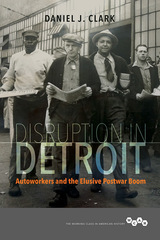 Disruption in Detroit: Autoworkers and the Elusive Postwar Boom
Daniel J. Clark
University of Illinois Press, 2018 It is a bedrock American belief: the 1950s were a golden age of prosperity for autoworkers. Flush with high wages and enjoying the benefits of generous union contracts, these workers became the backbone of a thriving blue-collar middle class. It is also a myth. Daniel J. Clark began by interviewing dozens of former autoworkers in the Detroit area and found a different story--one of economic insecurity caused by frequent layoffs, unrealized contract provisions, and indispensable second jobs. Disruption in Detroit is a vivid portrait of workers and an industry that experienced anything but stable prosperity. As Clark reveals, the myths--whether of rising incomes or hard-nosed union bargaining success--came later. In the 1950s, ordinary autoworkers, union leaders, and auto company executives recognized that although jobs in their industry paid high wages, they were far from steady and often impossible to find.
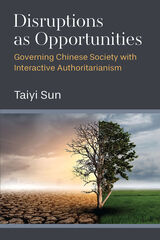 Disruptions as Opportunities: Governing Chinese Society with Interactive Authoritarianism
Taiyi Sun
University of Michigan Press, 2023 Disruptions as Opportunities: Governing Chinese Society with Interactive Authoritarianism addresses the long-standing puzzle of why China outlived other one-party authoritarian regimes with particular attention to how the state manages an emerging civil society. Drawing upon over 1,200 survey responses conducted in 126 villages in the Sichuan province, as well as 70 interviews conducted with Civil Society Organization (CSO) leaders and government officials, participant observation, and online research, the book proposes a new theory of interactive authoritarianism to explain how an adaptive authoritarian state manages nascent civil society. Sun argues that when new phenomena and forces are introduced into Chinese society, the Chinese state adopts a three-stage interactive approach toward societal actors: toleration, differentiation, and legalization without institutionalization. Sun looks to three disruptions—earthquakes, internet censorship, and social-media-based guerrilla resistance to the ride-sharing industry—to test his theory about the three-stage interactive authoritarian approach and argues that the Chinese government evolves and consolidates its power in moments of crisis.
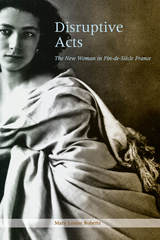 Disruptive Acts: The New Woman in Fin-de-Siecle France
Mary Louise Roberts
University of Chicago Press, 2002 In fin-de-siècle France, politics were in an uproar, and gender roles blurred as never before. Into this maelstrom stepped the "new women," a group of primarily urban, middle-class French women who became the objects of intense public scrutiny. Some remained single, some entered nontraditional marriages, and some took up the professions of medicine and law, journalism and teaching. All of them challenged traditional notions of womanhood by living unconventional lives and doing supposedly "masculine" work outside the home.
Mary Louise Roberts examines a constellation of famous new women active in journalism and the theater, including Marguerite Durand, founder of the women's newspaper La Fronde; the journalists Séverine and Gyp; and the actress Sarah Bernhardt. Roberts demonstrates how the tolerance for playacting in both these arenas allowed new women to stage acts that profoundly disrupted accepted gender roles. The existence of La Fronde itself was such an act, because it demonstrated that women could write just as well about the same subjects as men—even about the volatile Dreyfus Affair. When female reporters for La Fronde put on disguises to get a scoop or wrote under a pseudonym, and when actresses played men on stage, they demonstrated that gender identities were not fixed or natural, but inherently unstable. Thanks to the adventures of new women like these, conventional domestic femininity was exposed as a choice, not a destiny.
Lively, sophisticated, and persuasive, Disruptive Acts will be a major work not just for historians, but also for scholars of cultural studies, gender studies, and the theater.
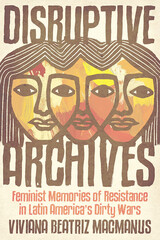 Disruptive Archives: Feminist Memories of Resistance in Latin America's Dirty Wars
Viviana Beatriz MacManus
University of Illinois Press, 2020 The histories of the Dirty Wars in Mexico and Argentina (1960s–1980s) have largely erased how women experienced and remember the gendered violence during this traumatic time. Viviana Beatriz MacManus restores women to the revolutionary struggle at the heart of the era by rejecting both state projects and the leftist accounts focused on men. Using a compelling archival blend of oral histories, interviews, human rights reports, literature, and film, MacManus illuminates complex narratives of loss, violence, and trauma. The accounts upend dominant histories by creating a feminist-centered body of knowledge that challenges the twinned legacies of oblivion for the victims and state-sanctioned immunity for the perpetrators. A new Latin American feminist theory of justice emerges—one that acknowledges women's strength, resistance, and survival during and after a horrific time in their nations' histories. Haunting and methodologically innovative, Disruptive Archives attests to the power of women's storytelling and memory in the struggle to reclaim history.
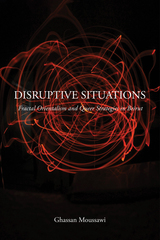 Disruptive Situations: Fractal Orientalism and Queer Strategies in Beirut
Ghassan Moussawi
Temple University Press, 2020 Disruptive Situations challenges representations of contemporary Beirut as an exceptional space for LGBTQ people by highlighting everyday life in a city where violence is the norm. Ghassan Moussawi, a Beirut native, seeks to uncover the underlying processes of what he calls “fractal orientalism,” a relational understanding of modernity and cosmopolitanism that illustrates how transnational discourses of national and sexual exceptionalism operate on multiple scales in the Arab world. Moussawi’s intrepid ethnography features the voices of women, gay men and genderqueers in Beirut to examine how queer individuals negotiate life in this uncertain region. He examines “al-wad’,” or “the situation,” to understand the practices that form these strategies and to raise questions about queer-friendly spaces in and beyond Beirut. Disruptive Situations alsoshows how LGBTQ Beirutis resist reconciliation narratives and position their identities and visibility at different times as ways of simultaneously managing their multiple positionalities and al-wad’. Moussawi argues that the daily survival strategies in Beirut are queer—and not only enacted by LGBTQ people—since Beirutis are living amidst an already queer situation of ongoing precarity.
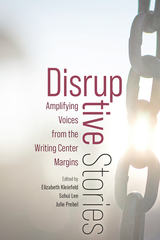 Disruptive Stories: Amplifying Voices from the Writing Center Margins
Elizabeth Kleinfeld
Utah State University Press, 2024 Disruptive Stories uses an activist editing method to select and publish authors that have been marginalized in scholarly conversations and enrich the understanding of lived writing center experiences that have been underrepresented in writing center scholarship. These chapters explore how marginality affects writing centers, the people who work in them, and the scholarship generated from them by examining the consequences—both positive and negative—of marginalization through a mix of narratives and research. Contributors provide unique perspectives ranging across status, role, nationality, race, and ability.
While US tenure-track writing center administrators (WCAs) do not make up the majority of those who hold WCA positions in writing centers, they are more likely to be the storytellers of the writing center grand narrative. They publish more, present more conference papers, edit more journals, and participate more in organizational leadership. This collection complicates that narrative by adding marginalized voices and experiences in three thematic categories: structural marginalization, globalization and marginalization, and embodied marginalization.
Disruptive Stories spurs further conversations about ways to improve the review process in writing center scholarship so that it more accurately reflects the growing diversity of its administrators and practitioners.
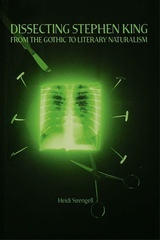 Dissecting Stephen King: From the Gothic to Literary Naturalism
Heidi Strengell
University of Wisconsin Press, 2005 In a thoughtful, well-informed study exploring fiction from throughout Stephen King's immense oeuvre, Heidi Strengell shows how this popular writer enriches his unique brand of horror by building on the traditions of his literary heritage. Tapping into the wellsprings of the gothic to reveal contemporary phobias, King invokes the abnormal and repressed sexuality of the vampire, the hubris of Frankenstein, the split identity of the werewolf, the domestic melodrama of the ghost tale. Drawing on myths and fairy tales, he creates characters who, like the heroic Roland the Gunslinger and the villainous Randall Flagg, may either reinforce or subvert the reader's childlike faith in society. And in the manner of the naturalist tradition, he reinforces a tension between the free will of the individual and the daunting hand of fate.
Ultimately, Strengell shows how King shatters our illusions of safety and control: "King places his decent and basically good characters at the mercy of indifferent forces, survival depending on their moral strength and the responsibility they may take for their fellow men."
 Disseminal Chaucer: Rereading THE NUN'S PRIEST'S TALE
Peter W. Travis
University of Notre Dame Press, 2009
Chaucer's The Nun's Priest's Tale is one of the most popular of The Canterbury Tales. It is only 646 lines long, yet it contains elements of a beast fable, an exemplum, a satire, and other genres. There have been countless attempts to articulate the "real" meaning of the tale, but it has confounded the critics. Peter Travis contends that part of the fund and part of the frustration of trying to interpret the tale has to do with Chaucer's use of the tale to demonstrate the resistance of all literature to traditional critical practices. But the world of The Nun's Priest's Tale is so creative and so quintessentially Chaucerian that critics persist in writing about it.
No one has followed the critical fortunes of Chauntecleer and his companions more closely over time than Peter Travis. One of the most important contributions of this book is his assessment of the tale's reception. Travis also provides an admirable discussion of genre: his analysis of parody and Menippean satire clarify how to approach works such as this tale that take pleasure in resisting traditional generic classifications. Travis also demonstrates that the tale deliberately invoked its readers' memories of specific grammar school literary assignments, and the tale thus becomes a miniaturized synopticon of western learning. Building on these analyses and insights, Travis's final argument is that The Nun's Priest's Tale is Chaucer's premier work of self-parody, an ironic apologia pro sua arte. The most profound matters foregrounded in the tale are not advertisements of the poet's achievements. Rather, they are poetic problems that Chaucer wrestled with from the beginning of his career and, at the end of that career, wanted to address in a concentrated, experimental, and parapoetic way.
"Peter Travis opens the Pandora's box that is Chaucer's The Nun's Priest's Tale by asking a disarmingly simple question about its genre. He proceeds to detail, brilliantly, the narrative's status as a multiplex parody, a medieval Ulysses. By refusing to reduce the tale to a singular meaning, and by maintaining that its proliferative ardors are part of its formal structure, Travis provides a tour de force analysis not only of the work but of Chaucer's ambitions throughout The Canterbury Tales. Lucid, engaging, and great fun to read, Disseminal Chaucerprovides a compelling model for doing theory-savvy work that is scrupulously attentive to medieval textuality." --Jeffrey J. Cohen, George Washington University
"Travis performs the difficult feat of remaining continually aware of Chaucer's comedy, while taking seriously the pedagogical system Chaucer is parodying. His rich book provides a genuine and valuable introduction to medieval practices of reading and writing, and at the same time takes us deep into Chaucer's thinking about poetry." --Winthrop Wetherbee, Cornell University
"Peter Travis's long-awaited study of The Nun's Priest's Tale is without a doubt the most comprehensive and thorough treatment of the tale that we have or are ever likely to have. It is a bravura performance, an extremely well argued study that marks it as a significant contribution to Chaucer studies, one that will be closely read and consulted by both students and scholars of Chaucer alike." --Jim Rhodes, Southern Connecticut State University
"Disseminal Chaucer is an original work of criticism that breaks new ground in its treatment of The Nun's Priest's Tale, both in its approach to the tale and in its perspective on Chaucer's poetry as a whole. It is historicist based, which places it in the mainstream of current medieval practices, but its background material and authoritative reading will make it fresh and current for a very long time." --Larry Scanlon, Rutgers University
 Disseminating Whitman: Revision and Corporeality in Leaves of Grass
Michael Moon
Harvard University Press, 1991 Within twelve years of the first appearance of Leaves of Grass in 1855, Walt Whitman produced three other editions of what he insisted were the “same” work; two more followed later in his life. Rather than asking which of these editions is best, Michael Moon, in Disseminating Whitman, argues that the very existence of distinct versions of the text raises essential questions about it. Interpreting “revision” more profoundly than earlier Whitman critics have done, while treating the poet’s homosexuality as a cultural and political fact rather than merely as a biographical datum, Moon shows how Whitman’s continual modifications of his work intersect with the representations of male-male desire throughout his writing. What is subjected to endless revision throughout the first four editions of Leaves of Grass, Moon argues, is a historically specific set of political principles governing how the human body—Whitman’s avowed subject—was conceptualized and controlled in mid-nineteenth-century America.
Moon interprets Whitman’s project as one that continually engages in such divergent contemporaneous discourse of the body as the anti-onanist ones of the “male-purity” movement, anti-slaver writing, “temperance” tracts, and guides to conduct for the aspiring “self-made man.” Critically applying various interpretive models from psychoanalysis, literary and cultural theory, and gender studies, and heeding recurring patterns of language and figure, Moon provides rigorous intertextual readings of Whitman’s canon. Ingeniously employing “The Child’s Champion” as a paradigm, Moon scrutinizes such celebrated poems as “Song of Myself” and the great Civil War elegies, as well as such commonly overlooked poems as “Song of the Broad-Axe” and “Song of the Banner at Daybreak.”
Disseminating Whitman reveals as no previous study has done the poet’s fervent engagement with the most highly charged political questions of his day—questions of defining and regulating whole ranges of experiences and desires that remain the subject of intense political conflict in our own time. This radical reassessment of the “good gray” poet makes a definitive contribution to critical work in American history and literature, poetry, and gender studies.
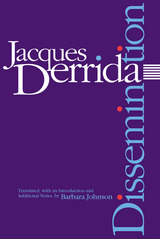 Dissemination
Jacques Derrida
University of Chicago Press, 1981 "The English version of Dissemination [is] an able translation by Barbara Johnson . . . . Derrida's central contention is that language is haunted by dispersal, absence, loss, the risk of unmeaning, a risk which is starkly embodied in all writing. The distinction between philosophy and literature therefore becomes of secondary importance. Philosophy vainly attempts to control the irrecoverable dissemination of its own meaning, it strives—against the grain of language—to offer a sober revelation of truth. Literature—on the other hand—flaunts its own meretriciousness, abandons itself to the Dionysiac play of language. In Dissemination—more than any previous work—Derrida joins in the revelry, weaving a complex pattern of puns, verbal echoes and allusions, intended to 'deconstruct' both the pretension of criticism to tell the truth about literature, and the pretension of philosophy to the literature of truth."—Peter Dews, New Statesman
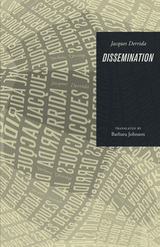 Dissemination
Jacques Derrida
University of Chicago Press, 1981 "The English version of Dissemination [is] an able translation by Barbara Johnson . . . . Derrida's central contention is that language is haunted by dispersal, absence, loss, the risk of unmeaning, a risk which is starkly embodied in all writing. The distinction between philosophy and literature therefore becomes of secondary importance. Philosophy vainly attempts to control the irrecoverable dissemination of its own meaning, it strives—against the grain of language—to offer a sober revelation of truth. Literature—on the other hand—flaunts its own meretriciousness, abandons itself to the Dionysiac play of language. In Dissemination—more than any previous work—Derrida joins in the revelry, weaving a complex pattern of puns, verbal echoes and allusions, intended to 'deconstruct' both the pretension of criticism to tell the truth about literature, and the pretension of philosophy to the literature of truth."—Peter Dews, New Statesman
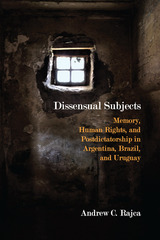 Dissensual Subjects: Memory, Human Rights, and Postdictatorship in Argentina, Brazil, and Uruguay
Andrew C. Rajca
Northwestern University Press, 2018 In Dissensual Subjects, Andrew C. Rajca combines cultural studies and critical theory to explore how the aftereffects of dictatorship have been used to formulate dominant notions of human rights in the present. In so doing, he critiques the exclusionary nature of these processes and highlights who and what count (and do not count) as subjects of human rights as a result.
Through an engaging exploration of the concept of “never again” (nunca más/nunca mais) and close analysis of photography exhibits, audiovisual installations, and other art forms in spaces of cultural memory, the book explores how aesthetic interventions can suggest alternative ways of framing human rights subjectivity beyond the rhetoric of liberal humanitarianism. The book visits sites of memory, two of which functioned as detention and torture centers during dictatorships, to highlight the tensions between the testimonial tenor of permanent exhibits and the aesthetic interventions of temporary installations there. Rajca thus introduces perspectives that both undo common understandings of authoritarian violence and its effects as well as reconfigure who or what are made visible as subjects of memory and human rights in postdictatorship countries.
Dissensual Subjects offers much to those concerned with numerous interlocking fields: memory, human rights, political subjectivity, aesthetics, cultural studies, visual culture, Southern Cone studies, postdictatorship studies, and sites of memory.
Dissent and Affirmation: Essays in Honor of Mulford Q. Sibley
Arthur L. Kalleberg
University of Wisconsin Press Mulford Sibley, for many years a professor of political science at the University of Minnesota, used to frequently quote Plato's complaint in the Laws "that man never legislates but accidents of all sorts . . . legislate for us in all sorts of ways. The violence of war and the hard necessity of poverty are constantly overturning governments and changing laws." But even if most legislation is a result of accident, Mulford Sibley holds out to us the idea that politics is a sphere of human freedom, in which men and women can collectively determine the conditions of their common life.
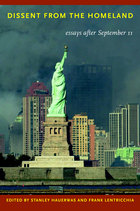 Dissent from the Homeland: Essays after September 11
Stanley Hauerwas and Frank Lentricchia, eds.
Duke University Press, 2003 Dissent from the Homeland is a book about patriotism, justice, revenge, American history and symbology, art and terror, and pacifism. In this deliberately and urgently provocative collection, noted writers, philosophers, literary critics, and theologians speak out against the war on terrorism and the government of George W. Bush as a response to the events of September 11, 2001. Critiquing government policy, citizen apathy, and societal justifications following the attacks, these writers present a wide range of opinions on such issues as contemporary American foreign policy and displays of patriotism in the wake of the disaster. Whether illuminating the narratives that have been used to legitimate the war on terror, reflecting on the power of American consumer culture to transform the attack sites into patriotic tourist attractions, or insisting that to be a Christian is to be a pacifist, these essays refuse easy answers. They consider why the Middle East harbors a deep-seated hatred for the United States. They argue that the U.S. drive to win the cold war made the nation more like its enemies, leading the government to support ruthless anti-Communist tyrants such as Mobutu, Suharto, and Pinochet. They urge Americans away from the pitfall of national self-righteousness toward an active peaceableness—an alert, informed, practiced state of being—deeply contrary to both passivity and war. Above all, the essays assembled in Dissent from the Homeland are a powerful entreaty for thought, analysis, and understanding. Originally published as a special issue of the journal South Atlantic Quarterly, Dissent from the Homeland has been expanded to include new essays as well as a new introduction and postscript. Contributors. Srinivas Aravamudan, Michael J. Baxter, Jean Baudrillard, Robert N. Bellah, Daniel Berrigan, Wendell Berry, Vincent J. Cornell, David James Duncan, Stanley Hauerwas, Fredric Jameson, Frank Lentricchia, Catherine Lutz, Jody McAuliffe, John Milbank, Peter Ochs, Donald E. Pease, Anne R. Slifkin, Rowan Williams, Susan Willis, Slavoj Zizek
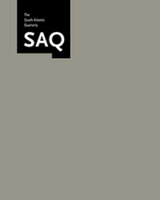 Dissent from the Homeland: Essays After September 11, Volume 101
Stanley Hauerwas and Frank Lentricchia, eds.
Duke University Press Dissent from the Homeland begins a new evaluation of how Americans think about September 11, 2001 and its aftermath. In this special issue well-known writers and scholars from across the humanities and social sciences take a critical look at U.S. domestic and foreign policies—past and present—as well as the recent surge of patriotism. These dissenting voices provide a thought-provoking alternative to the apparently overwhelming public approval of the U.S. military response to the September 11 attacks. Addressing such questions as why the Middle East harbors a deep-seated hatred for the U.S., the contributors refuse to settle for the easy answers preferred by the mass media. "Thoughts in the Presence of Fear" urges Americans away from the pitfall of national self-righteousness toward an active peaceableness—an alert, informed, practiced state of being—deeply contrary to both passivity and war. Another essay argues that the U.S. drive to win the Cold War made the nation more like its enemies, leading the government to support ruthless anti-Communist tyrants such as Mobutu, Suharto, and Pinochet. "Groundzeroland" offers a sharp commentary on the power of American consumer culture to absorb the devastation and loss of life by transforming the attack sites into patriotic tourist attractions. James Nachtwey’s photo essay provides a visual document of the devastation of the attacks. Contributors. Michael Baxter, Jean Baudrillard, Robert Bellah, Daniel Berrigan, Wendell Berry, Vincent Cornell, Stanley Hauerwas, Fredric Jameson, Frank Lentricchia, Catherine Lutz, Jody McAuliffe, John Milbank, James Nachtwey, Peter Ochs, Anne Rosalind Slifkin, Rowan Williams, Susan Willis, Slavoj Zizek For more information about SAQ, please visit http://www.dukeupress.edu/saq/
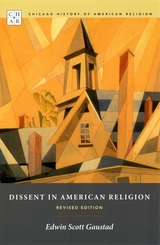 Dissent in American Religion: Revised Edition
Edwin Scott Gaustad
University of Chicago Press, 2006 Dissent in American Religion, originally published in 1973, was the first book to present religious dissent in the United States as a pervasive but hidden and often-ignored stream in American life. The first volume in the Chicago History of American Religion series, it reviewed the history of our nation’s longest dissenting tradition—a tradition older and richer in the realm of religion than in any other facet of national life. Indeed, Edwin Scott Gaustad argued that religious dissent was essential to the character of the American religious experience and stood in profound disagreement with society’s orthodox values and beliefs.
This new edition, which reinaugurates the Chicago History of American Religion series under the new editorship of John Corrigan, features new commentary by Gaustad and Corrigan on the past thirty years of American religious history and the importance of understanding dissent in American religion today.
“This is an important and erudite work which shows the originality and scope which scholarship can bring to human experience.” —Los Angeles Times
“We shall understand the religious past and present better for reading Gaustad’s brief, well-written, helpful book.” —Commonweal
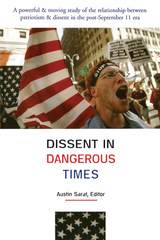 Dissent in Dangerous Times
Austin Sarat, Editor
University of Michigan Press, 2004 Dissent in Dangerous Times presents essays by six distinguished scholars, who provide their own unique views on the interplay of loyalty, patriotism, and dissent.
While dissent has played a central role in our national history and in the American cultural imagination, it is usually dangerous to those who practice it, and always unpalatable to its targets. War does not encourage the tolerance of opposition at home any more than it does on the front: if the War on Terror is to be a permanent war, then the consequences for American political freedoms cannot be overestimated.
"Dissent in Dangerous Times examines the nature of political repression in liberal societies, and the political and legal implications of living in an environment of fear. This profound, incisive, at times even moving volume calls upon readers to think about, and beyond, September 11, reminding us of both the fragility and enduring power of freedom."
--Nadine Strossen, President, American Civil Liberties Union, and Professor of Law, New York Law School.
Contributors to this volume
Lauren Berlant
Wendy Brown
David Cole
Hugh Gusterson
Nancy L. Rosenblum
Austin Sarat
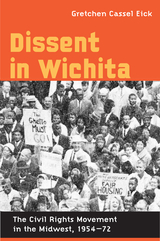 Dissent in Wichita: The Civil Rights Movement in the Midwest, 1954-72
Gretchen Cassel Eick
University of Illinois Press, 2001 Winner of the Richard L. Wentworth Prize in American History, Byron Caldwell Smith Book Prize, and the William Rockhill Nelson Award
On a hot summer evening in 1958, a group of African American students in Wichita, Kansas, quietly entered Dockum's Drug Store and sat down at the whites-only lunch counter. This was the beginning of the first sustained, successful student sit-in of the modern civil rights movement, instigated in violation of the national NAACP's instructions. Dissent in Wichita traces the contours of race relations and black activism in this unexpected locus of the civil rights movement. Based on interviews with more than eighty participants in and observers of Wichita's civil rights struggles, this powerful study hones in on the work of black and white local activists, setting their efforts in the context of anticommunism, FBI operations against black nationalists, and the civil rights policies of administrations from Eisenhower through Nixon. Through her close study of events in Wichita, Eick reveals the civil rights movement as a national, not a southern, phenomenon. She focuses particularly on Chester I. Lewis, Jr., a key figure in the local as well as the national NAACP. Lewis initiated one of the earliest investigations of de facto school desegregation by the Department of Health, Education, and Welfare and successfully challenged employment discrimination in the nation's largest aircraft industries. Dissent in Wichita offers a moving account of the efforts of Lewis, Vivian Parks, Anna Jane Michener, and other courageous individuals to fight segregation and discrimination in employment, public accommodations, housing, and schools. This volume also offers the first extended examination of the Young Turks, a radical movement to democratize and broaden the agenda of the NAACP for which Lewis provided critical leadership. Through a close study of personalities and local politics in Wichita over two decades, Eick demonstrates how the tenor of black activism and white response changed as economic disparities increased and divisions within the black community intensified. Her analysis, enriched by the words and experiences of men and women who were there, offers new insights into the civil rights movement as a whole and into the complex interplay between local and national events.
 The Dissent of the Governed: A Meditation on Law, Religion, and Loyalty
Stephen L. Carter
Harvard University Press, 1999 Between loyalty and disobedience; between recognition of the law’s authority and realization that the law is not always right: In America, this conflict is historic, with results as glorious as the mass protests of the civil rights movement and as inglorious as the armed violence of the militia movement. In an impassioned defense of dissent, Stephen L. Carter argues for the dialogue that negotiates this conflict and keeps democracy alive. His book portrays an America dying from a refusal to engage in such a dialogue, a polity where everybody speaks, but nobody listens.
The Dissent of the Governed is an eloquent diagnosis of what ails the American body politic—the unwillingness of people in power to hear disagreement unless forced to—and a prescription for a new process of response. Carter examines the divided American political character on dissent, with special reference to religion, identifying it in unexpected places, with an eye toward amending it before it destroys our democracy.
At the heart of this work is a rereading of the Declaration of Independence that puts dissent, not consent, at the center of the question of the legitimacy of democratic government. Carter warns that our liberal constitutional ethos—the tendency to assume that the nation must everywhere be morally the same—pressures citizens to be other than themselves when being themselves would lead to disobedience. This tendency, he argues, is particularly hard on religious citizens, whose notion of community may be quite different from that of the sovereign majority of citizens. His book makes a powerful case for the autonomy of communities—especially but not exclusively religious—into which democratic citizens organize themselves as a condition for dissent, dialogue, and independence. With reference to a number of cases, Carter shows how disobedience is sometimes necessary to the heartbeat of our democracy—and how the distinction between challenging accepted norms and challenging the sovereign itself, a distinction crucial to the Declaration of Independence, must be kept alive if Americans are to progress and prosper as a nation.
Dissent on Development: Studies and Debates in Development Economics, Revised Edition
P. T. Bauer
Harvard University Press, 1976 With style and imagination, this iconoclastic work covers the major issues in development economics. In eight carefully reasoned essays, P. T. Bauer challenges most of the accepted notions and supports his views with evidence drawn from a wide range of primary sources and direct experience.
The essays were selected on the basis of their interest to students and general readers from Bauer's book, Dissent on Development: Studies and Debates in Development Economics. Reviewing the previous work, the Wall Street Journal wrote: "It could have a profound impact on our thinking about the entire development question... Quite simply, it is no longer possible to discuss development economics intelligently without coming to grips with the many arguments P. T. Bauer marshalled in this extraordinary work."
 Dissenter in Zion: From the Writings of Judah L. Magnes
Arthur A. Goren
Harvard University Press, 1982 For nearly half a century, until his death in October 1948, Judah Magnes occupied a singular place in Jewish public life. He won fame early as a preacher and communal leader, but abandoned these pursuits at the height of his influence for the roles of political dissenter and moral gadfly. During World War I he became an outspoken pacifist and supporter of radical causes. Settling permanently in Palestine in 1922, he was a founder and the first president of the Hebrew University.
Increasingly, he viewed rapprochement with the Arabs as the practical and moral test of Zionism, and the formation of a bi-national state of Arabs and Jews became his chief political goal. His life interests thus focused on the core issues that confronted and still confront the Jewish people: group survival in democratic America, the direction and character of the return to Zion, and thereconciliation of universal ideals with Jewish aspirations and needs.
Dissenter in Zion draws upon a rich corpus of private letters, personal journals, and diaries to offer a moving account of an eloquent and sensitive person grappling with the great questions of the day and of an activist striving to translate private moral feelings into public deeds through politics and diplomacy. We see Magnes disagreeing with Brandeis over the leadership and direction of American Zionism and with Weizmann and Ben-Gurion over ways to achieve peaceful relations with the Arabs; defending himself against charges by Einstein that he was mismanaging the affairs of the Hebrew University; and persistently negotiating with Arab leaders, trying to reach a compromise on the eve of the establishment of the State of Israel.
Dissenter in Zion also contains a biographical essay on Magnes by Arthur Goren, assessing his ideas and motives and placing him in the context of his times. It shows Magnes's profundity without covering up his weaknesses, his lifelong tactic for courting repeated defeat in favor of long-term goals that could not come to pass in his lifetime.
 Dissenting through Dance
Sevi Bayraktar
University of Michigan Press, 2026 Dissenting through Dance examines how femme activists in contemporary Turkey deploy folk dance as a powerful tool of political resistance and collective solidarity. Drawing on extensive ethnographic fieldwork, choreographic analysis, and archival research, the book examines how traditional dances, particularly those rooted in marginalized cultures such as Kurdish, Roma, Alevi, Laz, and Hemşin communities, are reimagined to contest misogyny, cultural erasure, and oppressive gender politics. Sevi Bayraktar brings to life the stories of feminist, LGBTQ+, and grassroots activists occupying public spaces with dance as a form of protest when conventional forms of assembly are suppressed or criminalized in Turkey.
Working outward from these femmes’ stories, protests, and dances, Bayraktar argues that by reconfiguring Turkey’s folk-dance heritage for their contemporary political aims, dissenting femmes rechoreograph national space in opposition to the state as a way to reclaim the public sphere for pluralist democracy and to subvert hegemonic discourses about Turkish national identity, neoliberal economic development, and female and ethnic bodies. By moving together, activists subvert patriarchal norms, embody new visions of community, and create moments of hope, joy, and resistance even under conditions of surveillance and fear.
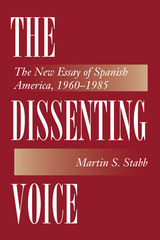 The Dissenting Voice: The New Essay of Spanish America, 1960-1985
By Martin S. Stabb
University of Texas Press, 1995 Political, social, and aesthetic change marked Latin American society in the years between 1960 and 1985. In this book, Martin Stabb explores how these changes made their way into the essayistic writings of twenty-six Spanish American intellectuals. Stabb posits that dissent—against ideology, against simplistic notions of technological progress, against urban values, and even against the direct linear expository style of the essay itself—characterizes the work of these contemporary essayists. He draws his examples from major canonical figures, including Paz, Vargas Llosa, Fuentes, and Cortázar, and from lesser-known writers who merit a wider readership, such as Monterroso, Zaid, Edwards, and Ibargüengoitia. This exploration overturns many conventional assumptions about Latin American intellectuals and also highlights some of the other achievements of authors famous primarily for novels or short stories.
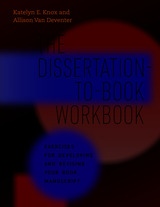 The Dissertation-to-Book Workbook: Exercises for Developing and Revising Your Book Manuscript
Katelyn E. Knox and Allison Van Deventer
University of Chicago Press, 2023 Writing an academic book is a daunting task. Where to start? This workbook.
So, you’ve written a dissertation. Congratulations! But how do you turn it into a book? Even if you know what to do when revising your dissertation, do you know how to do those things? This workbook by Katelyn E. Knox and Allison Van Deventer, creators of the successful online Dissertation-to-Book Boot Camp, offers a series of manageable, concrete steps with exercises to help you revise your academic manuscript into publishable book form.
The Dissertation-to-Book Workbook uses targeted exercises and prompts to take the guesswork out of writing a book. You’ll clarify your book’s core priorities, pinpoint your organizing principle, polish your narrative arc, evaluate your evidence, and much more. Using what this workbook calls “book questions and chapter answers,” you’ll figure out how to thread your book’s main ideas through its chapters. Then, you’ll assemble an argument, and finally, you’ll draft any remaining material and revise the manuscript. And most important, by the time you complete the workbook, you’ll have confidence that your book works as a book—that it’s a cohesive, focused manuscript that tells the story you want to tell.
Indispensible to anyone with an academic manuscript in progress, the prompts, examples, checklists, and activities will give you confidence about all aspects of your project—that it is structurally sound, coherent, free of the hallmarks of “dissertationese," and ready for submission to an academic publisher.
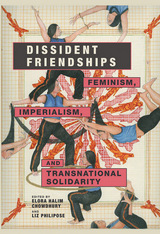 Dissident Friendships: Feminism, Imperialism, and Transnational Solidarity
Edited by Elora Halim Chowdhury and Liz Philipose
University of Illinois Press, 2016 Often perceived as unbridgeable, the boundaries that divide humanity from itself--whether national, gender, racial, political, or imperial--are rearticulated through friendship. Elora Halim Chowdhury and Liz Philipose edit a collection of essays that express the different ways women forge hospitality in deference to or defiance of the structures meant to keep them apart. Emerging out of postcolonial theory, the works discuss instances when the authors have negotiated friendship's complicated, conflicted, and contradictory terrain; offer fresh perspectives on feminists' invested, reluctant, and selective uses of the nation; reflect on how the arts contribute to conversations about feminism, dissent, resistance, and solidarity; and unpack the details of transnational dissident friendships. Contributors: Lori E. Amy, Azza Basarudin, Himika Bhattacharya, Kabita Chakma, Elora Halim Chowdhury, Laurie R. Cohen, Esha Niyogi De, Eglantina Gjermeni, Glen Hill, Alka Kurian, Meredith Madden, Angie Mejia, Chandra T. Mohanty, A. Wendy Nastasi, Nicole Nguyen, Liz Philipose, Anya Stanger, Shreerekha Subramanian, and Yuanfang Dai.
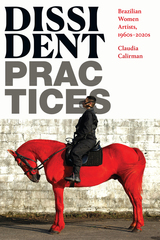 Dissident Practices: Brazilian Women Artists, 1960s–2020s
Claudia Calirman
Duke University Press, 2023 In Dissident Practices, Claudia Calirman examines sixty years of visual art by prominent and emerging Brazilian women artists from the 1960s to the present, covering the period from the military dictatorship to the return to democracy in the mid-1980s, the social changes of the 2000s, the rise of the Right in the late-2010s, and the recent development of an overtly feminist art practice. Though they were lauded as key figures in Brazilian art, these artists still faced adversity and constraints because of their gender. Although many of them in the 1960s and 1970s disavowed the term feminism, Calirman gives a nuanced account of how they responded to authoritarianism, engaged with trauma in the aftermath of the military dictatorship, interrogated social gender norms, and fought against women’s objectification. By battling social inequalities, structures of power, and state violence, these artists create political agency in a society in which women remain targets of brutality and discrimination.
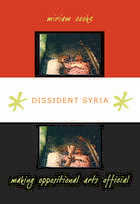 Dissident Syria: Making Oppositional Arts Official
miriam cooke
Duke University Press, 2007 From 1970 until his death in 2000, Hafiz Asad ruled Syria with an iron fist. His regime controlled every aspect of daily life. Seeking to preempt popular unrest, Asad sometimes facilitated the expression of anti-government sentiment by appropriating the work of artists and writers, turning works of protest into official agitprop. Syrian dissidents were forced to negotiate between the desire to genuinely criticize the authoritarian regime, the risk to their own safety and security that such criticism would invite, and the fear that their work would be co-opted as government propaganda, as what miriam cooke calls “commissioned criticism.” In this intimate account of dissidence in Asad’s Syria, cooke describes how intellectuals attempted to navigate between charges of complicity with the state and treason against it. A renowned scholar of Arab cultures, cooke spent six months in Syria during the mid-1990s familiarizing herself with the country’s literary scene, particularly its women writers. While she was in Damascus, dissidents told her that to really understand life under Hafiz Asad, she had to speak with playwrights, filmmakers, and, above all, the authors of “prison literature.” She shares what she learned in Dissident Syria. She describes touring a sculptor’s studio, looking at the artist’s subversive work as well as at pieces commissioned by the government. She relates a playwright’s view that theater is unique in its ability to stage protest through innuendo and gesture. Turning to film, she shares filmmakers’ experiences of making movies that are praised abroad but rarely if ever screened at home. Filled with the voices of writers and artists, Dissident Syria reveals a community of conscience within Syria to those beyond its borders.
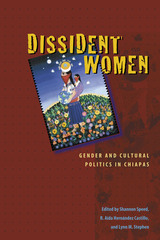 Dissident Women: Gender and Cultural Politics in Chiapas
Edited by Shannon Speed, R. Aída Hernández Castillo, and Lynn M. Stephen
University of Texas Press, 2006 Yielding pivotal new perspectives on the indigenous women of Mexico, Dissident Women: Gender and Cultural Politics in Chiapas presents a diverse collection of voices exploring the human rights and gender issues that gained international attention after the first public appearance of the Zapatista National Liberation Army (EZLN) in 1994. Drawing from studies on topics ranging from the daily life of Zapatista women to the effect of transnational indigenous women in tipping geopolitical scales, the contributors explore both the personal and global implications of indigenous women's activism. The Zapatista movement and the Women's Revolutionary Law, a charter that came to have tremendous symbolic importance for thousands of indigenous women, created the potential for renegotiating gender roles in Zapatista communities. Drawing on the original research of scholars with long-term field experience in a range of Mayan communities in Chiapas and featuring several key documents written by indigenous women articulating their vision, Dissident Women brings fresh insight to the revolutionary crossroads at which Chiapas stands—and to the worldwide implications of this economic and political microcosm.
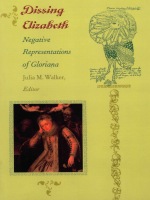 Dissing Elizabeth: Negative Representations of Gloriana
Julia M. Walker, ed.
Duke University Press, 1998 Dissing Elizabeth focuses on the criticism that cast a shadow on the otherwise celebrated reign of Elizabeth I. The essays in this politically and historically revealing book demonstrate the sheer pervasiveness and range of rhetoric against the queen, illuminating the provocative discourse of disrespect and dissent that existed over an eighty-year period, from her troubled days as a princess to the decades after her death in 1603.
As editor Julia M. Walker suggests, the breadth of dissent considered in this collection points to a dark side of the Cult of Elizabeth. Reevaluating neglected texts that had not previously been perceived as critical of the queen or worthy of critical appraisal, contributors consider dissent in a variety of forms, including artwork representing (and mocking) the queen, erotic and pornographic metaphors for Elizabeth in the popular press, sermons subtly critiquing her actions, and even the hostility encoded in her epitaph and in the placement of her tomb. Other chapters discuss gossip about Elizabeth, effigies of the queen, polemics against her marriage to the Duke of Alençon, common verbal slander, violence against emblems of her authority, and the criticism embedded in the riddles, satires, and literature of the period.
 Dissonance
Kristin Dykstra
University of Chicago Press, 2025 A collection of poems and photographs that take the foothills of Vermont’s Green Mountains as a microcosm for considering climate change, borders, and community life.
In Dissonance, translator Kristin Dykstra’s first book of original poetry, the author leads us to inner worlds shaped partly by the New England countryside, tracking shifts in the region’s nature, infrastructure, and people, while sharing observations on borders and climate catastrophe that reverberate globally. Dykstra condenses signs of urban expansion, economic division, and battles over democracy into an innovative meditation. With a dynamic approach to form, musicality, and scope, Dissonance explores ways of experiencing regional landscapes and imagined communities in the twenty-first century.
Through her extended sequence of prose poems, photographs, and lyric fragments, Dykstra merges clips from documents and dialogues with observations drawn from two local libraries and her daily walks down a dirt road through Vermont’s foothills. As she moves down this public road, which lies within the nation’s federally designated hundred-mile border zone, she finds a daily convergence of tensions. Dissonance asks how poetry can unsettle impressions of a place, and how that process, in turn, disturbs impressions of self, of others, and of time itself.
Dissonance is the recipient of the third annual Phoenix Emerging Poet Book Prize.
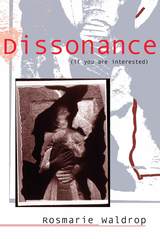 Dissonance (if you are interested)
Rosmarie Waldrop
University of Alabama Press, 2005 Incisive essays on modern poetry and translation by a noted poet, translator, and critic. As an immigrant to the United States from Germany, Rosmarie Waldrop has wrestled with the problems of language posed by the discrepancies between her native and adopted tongues, and the problems of translating from one to the other. Those discrepancies and disjunctions, instead of posing problems to be overcome, have become for Waldrop a generative force and the very foundation of her interests as a critic and poet.
In this comprehensive collection of her essays, Waldrop addresses considerations central to her life’s work: typical genres and ways of countering the conventions of genre; how concrete poets have made syntax spatial rather than grammatical; and the move away from metaphor in poetry toward contiguity and metonymy. Three essays on translation struggle with the sources and targets of translation, of the degree of strangeness or foreignness a translator should allow into any English translation. Finally, other essays examine the two-way traffic between reading and writing, and Waldrop’s notion of reading as experience.
 Dissonances: Democratic Critiques of Democracy
Guillermo O'Donnell
University of Notre Dame Press, 2007
Guillermo O'Donnell here brings together a collection of significant recent essays in which he considers both the method for and substance of critiques of democracies. While progress has been made in democratization, the authoritarian legacy hangs as a shadow over that advancement. O'Donnell engages in his analysis while keeping a firm gaze on that dangerous past.
O'Donnell's work has influenced a generation of political scientists. The essays in this volume bring forward and develop many of the ideas presented in his earlier collection, Counterpoints: Selected Essays on Authoritarianism and Democracy. This work will be of interest to scholars working in justice reform, democratization, and comparative politics.
"For many years, O'Donnell has explored the various ways in which the democracies of Latin America–-many of them new–-failed to meet expectations held out for them by citizens, analysts, and political actors. The articles collected here represent some of the very best thinking by an author who remains one of the most creative and insightful political theorists, whose work is deeply grounded in empirical observation, whose ideas are consistently robust, and whose reflections can be both provocative and of great practical use." –-Charles D. Kenney, University of Oklahoma
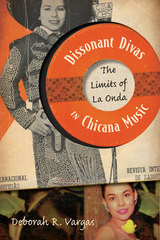 Dissonant Divas in Chicana Music: The Limits of La Onda
Deborah R. Vargas
University of Minnesota Press, 2012 Musical sound has been central to heteromasculinist productions of nation and homeland, whether Chicano, Tejano, Texan, Mexican, or American. If this assertion holds true, as Deborah R. Vargas suggests, then what are we to make of those singers and musicians whose representations of gender and sexuality are irreconcilable with canonical Chicano/Tejano music or what Vargas refers to as “la onda”? These are the “dissonant divas” Vargas discusses, performers who stimulate our listening for alternative borderlands imaginaries that are inaudible within the limits of “la onda.” Dissonant Divas in Chicana Music focuses on the Texan monument of the Alamo and its association with Rosita Fernandez; Tejano corrido folklore and its musical antithesis in Chelo Silva; the female accordion-playing bodies of Ventura Alonza and Eva Ybarra as incompatible with the instrumental labor of conjunto music; geography as national border, explored through the multiple national music scales negotiated by Eva Garza; and racialized gender, viewed through Selena’s integration of black diasporic musical sound. Vargas offers a feminist analysis of these figures’ contributions by advancing a notion of musical dissonance—a dissonance that recognizes the complexity of gender, sexuality, and power within Chicana/o culture. Incorporating ethnographic fieldwork, oral history, and archival research, Vargas’s study demonstrates how these singers work together to explode the limits of Texan, Chicano, Tejano, Mexican, and American identities.
Dissonant Voices: Race, Jazz, and Innovative Poetics in Midcentury America
Joseph Pizza
University of Iowa Press, 2023 Dissonant Voices uncovers the interracial collaboration at the heart of the postwar avant-garde. While previous studies have explored the writings of individual authors and groups, this work is among the first to trace the cross-cultural debate that inspired and energized midcentury literature in America and beyond. By reading a range of poets in the full context of the friendships and romantic relationships that animated their writing, this study offers new perspectives on key textual moments in the foundation and development of postmodern literature in the U.S. Ultimately, these readings aim to integrate our understanding of New American Poetry, the Black Arts Movement, and the various contemporary approaches to poetry and poetics that have been inspired by their examples.
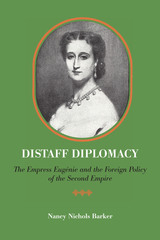 Distaff Diplomacy: The Empress Eugénie and the Foreign Policy of the Second Empire
By Nancy Nichols Barker
University of Texas Press, 1967 The Empress Eugénie, wife of Napoleon III and one of the most beautiful women ever to grace a throne, was the victim of her own inconstant mind. A daughter of an aristocratic Spanish family, she had a natural reverence for legitimate monarchy; yet her high-spirited temperament and chivalric outlook made her admire instinctively the boldness and aura of glory that she associated with the Napoleonic empire. The incongruous principles of Legitimism and Bonapartism battling within the Empress produced in her a double-mindedness that had tragic consequences. The Empress has always been a controversial figure. Her enemies have blamed her the fall of the Second Empire and the defeat of France; her admirers have disclaimed for her any part in the mistakes that led to the disastrous Franco-Prussian War of 1870. To determine the actual role that Eugénie played, Barker, using material from public and private European archives and a wide range of published works, examines in Distaff Diplomacy the development of the Empress' views on foreign affairs and ascertains their effect on the formation of the policies of the Second Empire. Eugénie's influence fluctuated widely over the years. As a bride she was neither interested in nor knowledgable about foreign matters; as a middle-aged woman, in the late years of the Empire, she was discredited by her past errors, but she continued to pull strings outside of normal diplomatic channels. Her most sustained and effective work, from 1861 to 1863, was largely the inspiration for a grand design to remake the map to assure French hegemony in Europe and to establish an empire in Mexico. The success of this design rested on an Austro-French alliance; but the design itself, reflecting the Empress' incoherent thinking, contained the fatal inconsistencies that made Austrian rejection of it inevitable. Since the Mexican expedition and the diplomatic muddle of 1863 were the watershed from which the subsequent troubles of the Empire flowed, the Empress must be held responsible for seriously undermining the foreign policy of the Empire. Despite Eugénie's many fine qualities—her generosity of spirit, her splendid courage, and her moral integrity—her diplomatic efforts, affected as they were by her background, temperament, state of health, and changing moods, did not amount to statesmanship. This first systematic examination of the Empress' influence on foreign policy delves deeply and carefully into the subject.
The Distance Between Us: A Novel
Valerie Sayers
Northwestern University Press, 2013 Franny Starkey has been breaking men’s hears since she was a teenager in Due East, South Carolina. Now a married mother of three, she no longer turns heads the way she used to. Michael, her drug-dependent playwright husband, cannot forget the excitement of their gun-running honeymoon in Ireland. Sayers creates an engaging novel that follows Franny’s path from her early, poverty-ridden days to her hedonistic college life to her longings for an artistic career while changing diapers in a Brooklyn apartment. The constant in her life is Steward Morehouse, a well-to-do nerd from Due East, who loves Franny. When Stewart and Michael collaborate on a play, the lives of these three become more complicated than Franny could have imagined. Sayers gracefully weaves all of this into a cohesive and compelling tale.
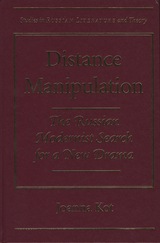 Distance Manipulation: The Russian Modernist Search for a New Drama
Joanna Kot
Northwestern University Press, 1999 At the turn of the century, there appeared in the Western world a stream of literary and dramatic works that confused their audiences to an unprecedented degree. Many of these works continue to confuse to this day and are avoided by theatre managers wishing to fill seats. Choosing for analysis a selection of five early-twentieth-century Russian plays, this book examines in detail the techniques, devices, and elements that the playwrights applied in order to undercut the traditional dramatic and theatrical expectations of their audiences.
Kot studies experimental dramas by Gippius, Sologub, Blok, and Ivanov, but the centerpiece of the book is Chekhov's Cherry Orchard his last and greatest play. Kot argues that it presents a subtle balance of distancing and emotive techniques.
An invaluable guide to the often bewildering nature of so-called "innovative" twentieth-century works, this book will appeal to anyone interested in modern theater.
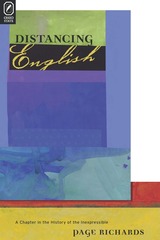 Distancing English: A Chapter in the History of the Inexpressible
Page Richards
Ohio State University Press, 2009 How did fears of cultural inadequacy play out in the English language after American independence and the War of 1812? Like many of his nineteenth-century contemporaries, essayist Walter Channing suggests that the country’s perceived deficiency in literature is due to a crucial overlap with England, that is, having “the same language with a nation, totally unlike it in almost every relation.” In Distancing English, Page Richards shows how these concerns of language are historically interwoven with the inexpressible. Often overlooked, the topos of the inexpressible redirects the ventriloquism of the English language. From its beginning, this topos combines the hyperbole of high expectations with the failure of inadequate words. In Charles Brockden Brown or George Tucker, it can register deficiency of “character” on and off the page, establishing important strategies of decenteredness also associated with modernism. In writers such as Nathaniel Hawthorne, Wallace Stevens, and John Berryman, the inexpressible seizes advantage from disadvantage. It runs through literary framing strategies and flexible shaggy dog humor. An opening to the 1855 Leaves of Grass, Walt Whitman’s Preface remaps the topos andemerges as a distinguished moment in the articulation of the inexpressible.
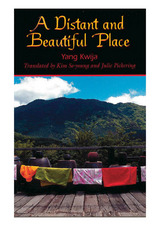 A Distant and Beautiful Place
Yang Kwija and translated by Kim So-young and Julie Pickering
University of Hawaii Press, 2003 Somewhere on the periphery of Seoul, between the modern metropolis and the traditional farming communities, lies a "distant and beautiful place," the neighborhood of Wonmi-dong. Here, a young couple from the city struggles to make a home for themselves; a hapless "salary man" is forced into door-to-door sales after losing his job; a precocious seven-year-old questions the meaning of friendship and community. Everyone seems to be chasing the intangible dream of a better life. Set against the backdrop of South Korea's breakneck drive for industrialization and economic development in the 1980s, these compassionate and often humorous stories capture the essence of modern South Korean life-including the ubiquitous atmosphere of violence and fear that clouded the country prior to democratization in 1987. They also depict the Korean people's unfailing optimism and love of life.
A Distant and Beautiful Place first appeared as a series of linked stories in literary journals between 1985 and 1987. It was published as the collection Wonmi-dong saramdul in 1987 and quickly became a best seller. Yang Kwija, one of South Korea's most respected and popular authors, has since published dozens of novels and shorter pieces.
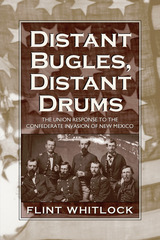 Distant Bugles, Distant Drums: The Union Response to the Confederate Invasion of New Mexico
Flint Whitlock
University Press of Colorado, 2006 Although most accounts of the Civil War's New Mexico campaign have focused on the Confederate effort, Distant Bugles, Distant Drums brings to life the epic march of 1,000 men recruited from Colorado's towns, farms, and mining camps to fight 3,000 Confederate soldiers in New Mexico. Drawing on previously overlooked diaries, letters, and contemporary newspaper accounts, military historian Flint Whitlock brings the Civil War in the West to life. Distant Bugles, Distant Drums details the battles of 1,000 Coloradans against 3,000 Confederate soldiers in New Mexico and offers vivid portraits of the leaders and soldiers involved - men whose strengths and flaws would shape the fate of the nation. On their way to Colorado in search of gold and silver for the Confederacy's dwindling coffers, Texan Confederates won a series of engagements along the Rio Grande. Hastily assembled troops that had marched to meet them from Colorado finally turned them back in an epic conflict at Gloriéta Pass. Miners, farmers, and peacetime officers turned themselves overnight into soldiers to keep the Confederacy from capturing the West's mines, shaping the outcome of the Civil War. Distant Bugles, Distant Drums tells their story. Southwest Book Award Winner from the Border Regional Library Association
Distant Corners: American Soccer's History of Missed Opportunities and Lost Causes
David Wangerin
Temple University Press, 2014 In Distant Corners, his follow-up to Soccer in a Football World, David Wangerin details several of the people, places, and events that shaped American soccer history. Despite its struggle for popular acceptance, soccer in the United States has a rich history. Wangerin profiles Tom Cahill, the almost-forgotten "father of American soccer," and writes passionately about the 1979 North American Soccer League season, the high-water mark of the game in the twentieth century.
Wangerin shows how the American appetite for soccer has ebbed and grown over the years, chronicling the game at the college and professional levels and describing the city of St. Louis's unique historic attachment to the sport. Wangerin believes that the time is ripe for American fans to look into their own history and recognize the surprisingly deep connection their country has to soccer.
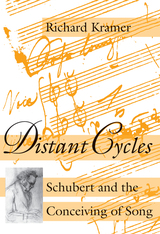 Distant Cycles: Schubert and the Conceiving of Song
Richard Kramer
University of Chicago Press, 1994 Franz Schubert's song cycles Schone Mullerin and Winterreise are cornerstones of the genre. But as Richard Kramer argues in this book, Schubert envisioned many other songs as components of cyclical arrangements that were never published as such. By carefully studying Schubert's original manuscripts, Kramer recovers some of these "distant cycles" and accounts for idiosyncrasies in the songs which other analyses have failed to explain.
Returning the songs to their original keys, Kramer reveals linkages among songs which were often obscured as Schubert readied his compositions for publication. His analysis thus conveys even familiar songs in fresh contexts that will affect performance, interpretation, and criticism. After addressing problems of multiple settings and revisions, Kramer presents a series of briefs for the reconfiguring of sets of songs to poems by Goethe, Rellstab, and Heine. He deconstructs Winterreise, using its convoluted origins to illuminate its textual contradictions. Finally, Kramer scrutinizes settings from the Abendrote cycle (on poems by Friedrich Schlegel) for signs of cyclic process. Probing the farthest reaches of Schubert's engagement with the poetics of lieder, Distant Cycles exposes tensions between Schubert the composer and Schubert the merchant-entrepreneur.
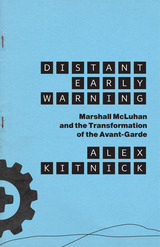 Distant Early Warning: Marshall McLuhan and the Transformation of the Avant-Garde
Alex Kitnick
University of Chicago Press, 2021 Marshall McLuhan (1911–1980) is best known as a media theorist—many consider him the founder of media studies—but he was also an important theorist of art. Though a near-household name for decades due to magazine interviews and TV specials, McLuhan remains an underappreciated yet fascinating figure in art history. His connections with the art of his own time were largely unexplored, until now. In Distant Early Warning, art historian Alex Kitnick delves into these rich connections and argues both that McLuhan was influenced by art and artists and, more surprisingly, that McLuhan’s work directly influenced the art and artists of his time.
Kitnick builds the story of McLuhan’s entanglement with artists by carefully drawing out the connections among McLuhan, his theories, and the artists themselves. The story is packed with big names: Marcel Duchamp, Niki de Saint Phalle, Jasper Johns, Andy Warhol, Nam June Paik, and others. Kitnick masterfully weaves this history with McLuhan’s own words and his provocative ideas about what art is and what artists should do, revealing McLuhan’s influence on the avant-garde through the confluence of art and theory. The illuminating result sheds light on new aspects of McLuhan, showing him not just as a theorist, or an influencer, but as a richly multifaceted figure who, among his many other accolades, affected multiple generations of artists and their works. The book finishes with Kitnick overlaying McLuhan’s ethos onto the state of contemporary and post-internet art. This final channeling of McLuhan is a swift and beautiful analysis, with a personal touch, of art’s recent transgressions and what its future may hold.
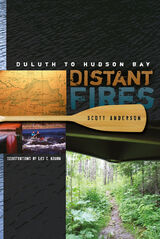 Distant Fires: Duluth to Hudson Bay
Scott Anderson
University of Minnesota Press, 2008 "The waves on Lake Superior nearly splattered them all over the cliffs, and mosquitoes almost ate them alive in the Boundary Waters. Halfway through the three-month trip, they buried their underwear. But who needs underwear when you’re 22 years old and living out the adventure of a boyhood dream?" —St. Paul Pioneer Press
"Distant Fires, a true-life adventure, describes a 1,700-mile canoe trip from Duluth to York Factory on Hudson Bay. Anderson and a companion retraced the paddles taken by Eric Sevareid and a companion almost sixty years earlier. Their trials and tribulations, plus Anderson’s sense of humor, make the trip fun in book form. Pen-and-ink illustrations are by noted Minnesota wildlife artist Les Kouba." —Minneapolis Star Tribune
"Distant Fires is a voyage of discovery. Scott Anderson is an inquisitive traveler, and when he sees something that piques his interest, he stops for a chat. He also has a marvelous eye for the natural world that surrounds him in his summerlong journey. He is a natural-born writer." —Duluth News Tribune
"Some of [Anderson’s] phrasing is very happy indeed: ‘the resting place of the rivers.’ I wish I had written that." —Eric Sevareid
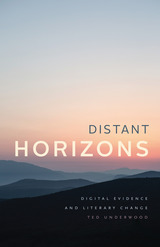 Distant Horizons: Digital Evidence and Literary Change
Ted Underwood
University of Chicago Press, 2019 Just as a traveler crossing a continent won’t sense the curvature of the earth, one lifetime of reading can’t grasp the largest patterns organizing literary history. This is the guiding premise behind Distant Horizons, which uses the scope of data newly available to us through digital libraries to tackle previously elusive questions about literature. Ted Underwood shows how digital archives and statistical tools, rather than reducing words to numbers (as is often feared), can deepen our understanding of issues that have always been central to humanistic inquiry. Without denying the usefulness of time-honored approaches like close reading, narratology, or genre studies, Underwood argues that we also need to read the larger arcs of literary change that have remained hidden from us by their sheer scale. Using both close and distant reading to trace the differentiation of genres, transformation of gender roles, and surprising persistence of aesthetic judgment, Underwood shows how digital methods can bring into focus the larger landscape of literary history and add to the beauty and complexity we value in literature.
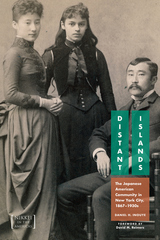 Distant Islands: The Japanese American Community in New York City, 1876-1930s
Daniel H. Inouye
University Press of Colorado, 2018 Distant Islands is a modern narrative history of the Japanese American community in New York City between America's centennial year and the Great Depression of the 1930s. Often overshadowed in historical literature by the Japanese diaspora on the West Coast, this community, which dates back to the 1870s, has its own fascinating history.
The New York Japanese American community was a composite of several micro communities divided along status, class, geographic, and religious lines. Using a wealth of primary sources—oral histories, memoirs, newspapers, government documents, photographs, and more—Daniel H. Inouye tells the stories of the business and professional elites, mid-sized merchants, small business owners, working-class families, menial laborers, and students that made up these communities. The book presents new knowledge about the history of Japanese immigrants in the United States and makes a novel and persuasive argument about the primacy of class and status stratification and relatively weak ethnic cohesion and solidarity in New York City, compared to the pervading understanding of nikkei on the West Coast. While a few prior studies have identified social stratification in other nikkei communities, this book presents the first full exploration of the subject and additionally draws parallels to divisions in German American communities.
Distant Islands is a unique and nuanced historical account of an American ethnic community that reveals the common humanity of pioneering Japanese New Yorkers despite diverse socioeconomic backgrounds and life stories. It will be of interest to general readers, students, and scholars interested in Asian American studies, immigration and ethnic studies, sociology, and history.
Winner- Honorable Mention, 2018 Immigration and Ethnic History Society First Book Award
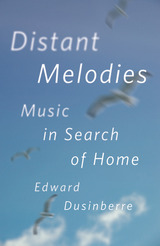 Distant Melodies: Music in Search of Home
Edward Dusinberre
University of Chicago Press, 2022 An engaging blend of memoir and music history, Distant Melodies explores the changing ideas of home, displacement, and return through the lives and chamber music of four composers.
How does music played and heard over many years inform one’s sense of home? Writing during the COVID-19 pandemic, when travel is forbidden and distance felt anew, Edward Dusinberre, first violinist of the world-renowned Takács Quartet, searches for answers in the music of composers whose relationships to home shaped the pursuit of their craft—Antonín Dvořák, Edward Elgar, Béla Bartók, and Benjamin Britten.
Dusinberre has lived abroad for three decades. At the age of 21, he left his native England to pursue music studies at the Juilliard School in New York. Three years later he moved to Boulder, Colorado. Drawn to the stories of Dvořák’s, Bartók’s, and Britten’s American sojourns as they tried to reconcile their new surroundings with nostalgia for their homelands, Dusinberre reflects on his own evolving relationship to England and the idea of home. As he visits and imagines some of the places crucial to these composers’ creative inspiration, Dusinberre also reflects on Elgar’s unusual Piano Quintet and the landscapes that inspired it.
Combining travel writing with revealing insights into the working lives of string quartet musicians, Distant Melodies is a moving and humorous meditation on the relationship between music and home.
 Distant Parents
Climo, Jacob
Rutgers University Press, 1992 Jacob Climo writes about the relationship between adult children and their parents, when they live at a distance from each other. In the United States today, twenty million adult children live too far from their parents for frequent face-to-face contacts. Despite geographical separation, most of these children and their parents maintain intense family feelings and make great efforts to keep in touch. Until now, gerontologists and social scientists have ignored distant parent-child relationships. Climo focuses attention on the special problems of distant relationships by looking at the efforts of forty university professors, men and women, to maintain bonds with their parents, to provide assistance, and to communicate through visits and phone calls. The adult children he interviewed live at least 200 miles from their parents. In most ways they are similar to the millions of other professionals whose careers have led them to move away from their parents. We hear their voices, as they speak frankly about the advantages, pains, and challenges of separation. Climo considers distant relationships to be different from other relationships and to be a growing social problem. Distant living complicates communications by shaping and restricting both phone calls and visits. His description of the typical phone call and typical seasonal visit, with their patterns and limitations, will sound familiar to many of us. In addition to affecting communications, distance affects memories of past parent-child relationships in ways that influence present relationships. Memories, which take on great weight, tend to determine current behavior. Most seriously, distance limits the kinds of assistance children can provide when their parents become ill, resulting in frustration, anger, guilt, and a sense of powerlessness. Climo urges us to be more aware of distant living as a growing social problem. The percentage of children who move away from their parents will continue to increase. Once adult children acknowledge the challenges distance creates, they can learn to develop better communications and to deal with their feelings of ambivalence.
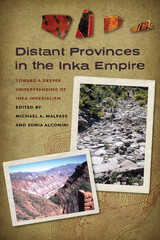 Distant Provinces in the Inka Empire: Toward a Deeper Understanding of Inka Imperialism
Michael A. Malpass
University of Iowa Press, 2010 Who was in charge of the widespread provinces of the great Inka Empire of the fifteenth and sixteenth centuries: Inka from the imperial heartland or local leaders who took on the trappings of their conquerors, either by coercion or acceptance? By focusing on provinces far from the capital of Cuzco, the essays in this multidisciplinary volume provide up-to-date information on the strategies of domination asserted by the Inka across the provinces far from their capital and the equally broad range of responses adopted by their conquered peoples. Contributors to this cutting-edge volume incorporate the interaction of archaeological and ethnohistorical research with archaeobotany, biometrics, architecture, and mining engineering, among other fields. The geographical scope of the chapters—which cover the Inka provinces in Bolivia, in southeast Argentina, in southern Chile, along the central and north coast of Peru, and in Ecuador—build upon the many different ways in which conqueror and conquered interacted. Competing factors such as the kinds of resources available in the provinces, the degree of cooperation or resistance manifested by local leaders, the existing levels of political organization convenient to the imperial administration, and how recently a region had been conquered provide a wealth of information on regions previously understudied. Using detailed contextual analyses of Inka and elite residences and settlements in the distant provinces, the essayists evaluate the impact of the empire on the leadership strategies of conquered populations, whether they were Inka by privilege, local leaders acculturated to Inka norms, or foreign mid-level administrators from trusted ethnicities. By exploring the critical interface between local elites and their Inka overlords, Distant Provinces in the Inka Empire builds upon Malpass’s 1993 Provincial Inca: Archaeological and Ethnohistorical Assessment of the Impact of the Inca State to support the conclusions that Inka strategies of control were tailored to the particular situations faced in different regions. By contributing to our understanding of what it means to be marginal in the Inka Empire, this book details how the Inka attended to their political and economic goals in their interactions with their conquered peoples and how their subjects responded, producing a richly textured view of the reality that was the Inka Empire.
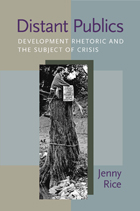 Distant Publics: Development Rhetoric and the Subject of Crisis
Jenny Rice
University of Pittsburgh Press, 2012 Urban sprawl is omnipresent in America and has left many citizens questioning their ability to stop it. In Distant Publics, Jenny Rice examines patterns of public discourse that have evolved in response to development in urban and suburban environments. Centering her study on Austin, Texas, Rice finds a city that has simultaneously celebrated and despised development.
Rice outlines three distinct ways that the rhetoric of publics counteracts development: through injury claims, memory claims, and equivalence claims. In injury claims, rhetors frame themselves as victims in a dispute. Memory claims allow rhetors to anchor themselves to an older, deliberative space, rather than to a newly evolving one. Equivalence claims see the benefits on both sides of an issue, and here rhetors effectively become nonactors.
Rice provides case studies of development disputes that place the reader in the middle of real-life controversies and evidence her theories of claims-based public rhetorics. She finds that these methods comprise the most common (though not exclusive) vernacular surrounding development and shows how each is often counterproductive to its own goals. Rice further demonstrates that these claims create a particular role or public subjectivity grounded in one’s own feelings, which serves to distance publics from each other and the issues at hand.
Rice argues that rhetoricians have a duty to transform current patterns of public development discourse so that all individuals may engage in matters of crisis. She articulates its sustainability as both a goal and future disciplinary challenge of rhetorical studies and offers tools and methodologies toward that end.
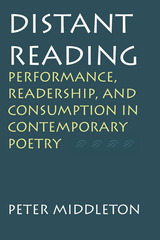 Distant Reading: Performance, Readership, and Consumption in Contemporary Poetry
Peter Middleton
University of Alabama Press, 2005 A dynamic account of the history, practice, and theory of poetry as performance. Distant Reading considers poetry as performance, offers new insights into its popularity, and proposes a new history of its origins. It also explores related issues concerning the reception of poetry, the impact of the computer on how we read poetry, the persistence of the letter "I" in poems by avant-garde poets, the strangeness of the line-break as a demand on the reader's attention, and the idea of the reader as consumer. These themes are connected by a historically contextualized and theoretically sophisticated discussion of contemporary American and British poets continuing to work in the modernist tradition. The introductory essay establishes a new methodology that transforms close reading into what Middleton calls "distant reading," interpretive reading that acknowledges the distances that texts travel from their point of composition to readers in other geographical and historical locations. It indicates that poetic innovation is often driven by a desire on the part of the poet to make this distance do cultural work in the meanings that the poem generates. Ultimately, Distant Reading treats poetry as a cultural practice that is always situated within specific sites of performance—recited on stage, displayed in magazines, laid out on a page, scrolled on the computer screen—rather than as a transcendent cloud of meaning tethered only to its words.
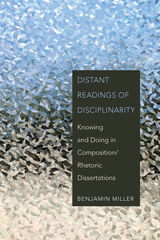 Distant Readings of Disciplinarity: Knowing and Doing in Composition/Rhetoric Dissertations
by Benjamin Miller
Utah State University Press, 2022 In Distant Readings of Disciplinarity, Benjamin Miller brings a big data approach to the study of disciplinarity in rhetoric, composition, and writing studies (RCWS) by developing scalable maps of the methods and topics of several thousand RCWS dissertations from 2001 to 2015. Combining charts and figures with engaging and even playful prose, Miller offers an accessible model of how large-scale data-driven research can advance disciplinary understanding—both answering and amplifying the call to add replicable data analysis and visualization to the mix of methods regularly employed in the field.
Writing studies has long been marked by a multitude of methods and interlocking purposes, partaking of not just humanities approaches but also social scientific ones, with data drawn from interviews and surveys alongside historical and philosophical arguments and with corpus analytics in large-scale collections jostling against small-scale case studies of individuals. These areas of study aren’t always cleanly separable; shifting modes mark the discipline as open and welcoming to many different angles of research. The field needs to embrace that vantage point and generate new degrees of familiarity with methods beyond those of any individual scholar.
Not only a training genre and not only a knowledge-making genre, the dissertation is also a discipline-producing genre. Illustrating what the field has been studying, and how, Distant Readings of Disciplinarity supports more fruitful collaborations within and across research areas and methods.
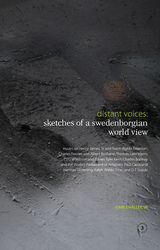 Distant Voices: Sketches of a Swedenborgian World View
John S. Haller
Swedenborg Foundation Publishers, 2017 The legacy of the Enlightenment philosopher, scientist, and mystic Emanuel Swedenborg (1688-1772) permeated widely throughout nineteenth-century literature, art, and social reform movements. In Distant Voices: Sketches of a Swedenborgian World View, John S. Haller takes us from the mid-nineteenth-century worlds of Henry James Sr., Ralph Waldo Emerson, and Charles Fourier through to the 1960s era of counterculture shaped by D. T. Suzuki. Each chapter can be read as a self-contained essay: biographical and critical appraisals (and reappraisals) in which the subjects are linked together by their use of Swedenborg, their interest in Eastern culture, and their desire for the betterment of society. The complete list of essays includes Henry James Sr., Ralph Waldo Emerson, Charles Fourier, Albert Brisbane, Thomas Lake Harris, J. J. G. Wilkinson, James Tyler Kent, Charles Bonney, The World's Parliament of Religions, Paul Carus, Herman Vetterling, Ralph Waldo Trine, and D. T. Suzuki.
Distantly
Nicole Brossard
Omnidawn, 2022 A bilingual collection of poems that offers a surreal perspective of urban experience.
This bilingual edition of Nicole Brossard’s lyrical poetry is a sequence of lush, taut cityscapes. Known for her elliptical and materially grounded poetics, Brossard creates an intimate series of poems drawn loosely from urban experience. The poems comprise an evocative distillation of postmodern urban life with a sharp sense of cultural and gendered histories of violence and beauty and struggles for survival and intimacy. The poems capture the emotional and ecological surroundings of each city and its people. The cities in Brossard’s poems feel surreal and in them dwell survivors of “misfortunes,” living in urban landscapes with their “gleaming debris” and “bridges, ghats, / rivers in a time of peace and torture.” These poems gesture toward a transmuted social context and toward a quest “to meet the horizon the day after the horizon.”
 Distillation of Sound: Dub and the Creation of Culture
Eric Abbey
Intellect Books, 2022 How dub reggae expanded and shifted Jamaican culture.
Jamaican music has always been about creating with what is at hand. Taking what is around you and making it into something great is the key to dub and Jamaican culture. Dub music in Jamaica started in the early 1970s and by the end of the decade had influenced an entire population. The music began to use the rhythm track of a song as a song itself and spread quickly throughout the sound systems of the island. This book reflects on the importance of dub music and its influence on the music world with the rise and spread of dub in New York, England, and Japan. Eric Abbey discusses the separation between dub as a product and dub as an act of the engineer. Distillation of Sound focuses on the original music of Jamaica and how dub reggae expanded and shifted Jamaican culture. It will further the discussion on dub music, its importance to Jamaican culture, and its creative influence on the music world.
Distilling Hope: 12 Stories to Distill the 12 Steps
Beth Ohlsson
Parkhurst Brothers, Inc., 2017
“Old stories are universal and want to be told. To bring those stories out into the world as a vehicle for navigating sobriety and recovery is a glorious thing.
I was hired to be an addictions counselor for the therapeutic community at the Frederick County Adult Detention Center. Susan Gordon encouraged me to tell them stories. I thought she was crazy, but I trusted her judgment and told them stories. The impact those stories had on those men changed my life. I worked in addictions for 15 years, taking those stories with me to very agency in which I worked. The women at the Center 4 Clean Start in Salisbury, MD were every bit as receptive to story as the men who were in jail.”
--Beth Ohlsson
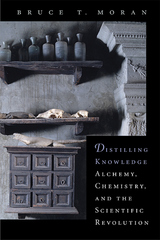 Distilling Knowledge: Alchemy, Chemistry, and the Scientific Revolution
Bruce T. Moran
Harvard University Press, 2006 Alchemy can't be science--common sense tells us as much. But perhaps common sense is not the best measure of what science is, or was. In this book, Bruce Moran looks past contemporary assumptions and prejudices to determine what alchemists were actually doing in the context of early modern science. Examining the ways alchemy and chemistry were studied and practiced between 1400 and 1700, he shows how these approaches influenced their respective practitioners' ideas about nature and shaped their inquiries into the workings of the natural world. His work sets up a dialogue between what historians have usually presented as separate spheres; here we see how alchemists and early chemists exchanged ideas and methods and in fact shared a territory between their two disciplines.
Distilling Knowledge suggests that scientific revolution may wear a different appearance in different cultural contexts. The metaphor of the Scientific Revolution, Moran argues, can be expanded to make sense of alchemy and other so-called pseudo-sciences--by including a new framework in which "process can count as an object, in which making leads to learning, and in which the messiness of conflict leads to discernment." Seen on its own terms, alchemy can stand within the bounds of demonstrative science.
 Distinction: A Social Critique of the Judgement of Taste
Pierre Bourdieu
Harvard University Press, 1984 No judgment of taste is innocent. In a word, we are all snobs. Pierre Bourdieu brilliantly illuminates this situation of the middle class in the modern world. France’s leading sociologist focuses here on the French bourgeoisie, its tastes and preferences. Distinction is at once a vast ethnography of contemporary France and a dissection of the bourgeois mind.
In the course of everyday life people constantly choose between what they find aesthetically pleasing and what they consider tacky, merely trendy, or ugly. Bourdieu bases his study on surveys that took into account the multitude of social factors that play a part in a French person’s choice of clothing, furniture, leisure activities, dinner menus for guests, and many other matters of taste. What emerges from his analysis is that social snobbery is everywhere in the bourgeois world. The different aesthetic choices people make are all distinctions—that is, choices made in opposition to those made by other classes. Taste is not pure. Bourdieu finds a world of social meaning in the decision to order bouillabaisse, in our contemporary cult of thinness, in the “California sports” such as jogging and cross-country skiing. The social world, he argues, functions simultaneously as a system of power relations and as a symbolic system in which minute distinctions of taste become the basis for social judgment.
The topic of Bourdieu’s book is a fascinating one: the strategies of social pretension are always curiously engaging. But the book is more than fascinating. It is a major contribution to current debates on the theory of culture and a challenge to the major theoretical schools in contemporary sociology.
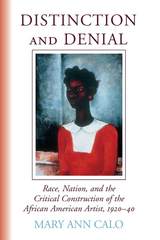 Distinction and Denial: Race, Nation, and the Critical Construction of the African American Artist, 1920-40
Mary Ann Calo
University of Michigan Press, 2007 Distinctionand Denial challenges conventional theories of race and art by examining the role early twentieth-century art critics played in marginalizing African American artists. Mary Ann Calo dispels the myth of a unified African American artistic tradition through an engaging study of the germinal writing of Alain Locke and other significant critics of the era, who argued that African American artists were both a diverse group and a constituent element of America’s cultural center. By documenting the effects of the “Negro aesthetic” on African American artists working in the interwar years, Distinctionand Denial shows that black artistic production existed between the claims of a distinctly African American tradition and full inclusion into American modernist culture—never fully inside or outside the mainstream. “A major contribution to the scholarship of African American artists in the inter-war period. With scrupulous research and probing analyses, Calo’s study enables scholars, students, and those interested in the Harlem Renaissance to grasp the intellectual debates, institutional support, and art world promotion that advanced an emerging cohort of African American artists.” —Patricia Hills, Boston University “A careful, thorough, historically grounded study that builds a new and significant argument challenging conventional histories of African American art. Sure to become indispensable to any scholarly discussion of American art or African American cultural studies.” —Helen Langa, American University Mary Ann Calo is Professor of Art History and Director of the Institute for the Creative and Performing Arts at Colgate University. She is author of Bernard Berenson and the Twentieth Century and editor of Critical Issues in American Art: A Book of Readings.
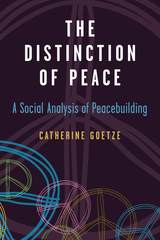 The Distinction of Peace: A Social Analysis of Peacebuilding
Catherine Goetze
University of Michigan Press, 2017 “Peacebuilding” serves as a catch-all term to describe efforts by an array of international organizations, nongovernmental organizations, and agencies of foreign states to restore or construct a peaceful society in the wake—or even in the midst—of conflict. Despite this variety, practitioners consider themselves members of a global profession. In The Distinction of Peace, Catherine Goetze investigates the genesis of peacebuilding as a professional field of expertise since the 1960s, its increasing influence, and the ways it reflects global power structures.
Goetze describes how the peacebuilding field came into being, how it defines who belongs to it and who does not, and what kind of group culture it has generated. Using an innovative methodology, she investigates the motivations of individuals who become peacebuilders, their professional trajectories and networks, and the “good peacebuilder” as an ideal. For many, working in peacebuilding in various ways—as an aid worker on the ground, as a lawyer at the United Nations, or as an academic in a think tank—has become not merely a livelihood, but also a form of participation in world politics. As a field, peacebuilding has developed techniques for incorporating and training new members, yet its internal politics also create the conditions of exclusion that often result in practical failures of the peacebuilding enterprise.
By providing a critical account of the social mechanisms that make up the peacebuilding field, Goetze offers deep insights into the workings of Western domination and global inequalities.
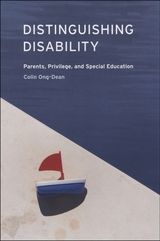 Distinguishing Disability: Parents, Privilege, and Special Education
Colin Ong-Dean
University of Chicago Press, 2009 Students in special education programs can have widely divergent experiences. For some, special education amounts to a dumping ground where schools unload their problem students, while for others, it provides access to services and accommodations that drastically improve chances of succeeding in school and beyond. Distinguishing Disability argues that this inequity in treatment is directly linked to the disparity in resources possessed by the students’ parents.
Since the mid-1970s, federal law has empowered parents of public school children to intervene in virtually every aspect of the decision making involved in special education. However, Colin Ong-Dean reveals that this power is generally available only to those parents with the money, educational background, and confidence needed to make effective claims about their children’s disabilities and related needs. Ong-Dean documents this class divide by examining a wealth of evidence, including historic rates of learning disability diagnosis, court decisions, and advice literature for parents of disabled children. In an era of expanding special education enrollment, Distinguishing Disability is a timely analysis of the way this expansion has created new kinds of inequality.
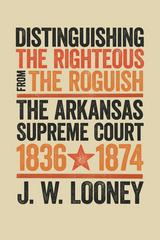 Distinguishing the Righteous from the Roguish: The Arkansas Supreme Court, 1836–1874
J.W. Looney
University of Arkansas Press, 2016 During the period from 1836 to 1874, the legal system in the new state of Arkansas developed amid huge social change. While the legislature could, and did, determine what issues were considered of importance to the populace, the Arkansas Supreme Court determined the efficacy of legislation in cases involving land titles, banks, transportation, slavery, family law, property, debt, contract, criminal law, and procedure. Distinguishing the Righteous from the Roguish examines the court’s decisions in this era and shows how Arkansas, as a rural slave-holding state, did not follow the transformational patterns typical of some other states during the nineteenth century. Rather than using the law to promote broad economic growth and encourage social change, the Arkansas court attempted to accommodate the interests of the elite class by preserving the institution of slavery. The ideology of paternalism is reflected in the decisions of the court, and Looney shows how social and political stability—an emphasis on preserving the status quo of the so-called “righteous”—came at the expense of broader economic development.
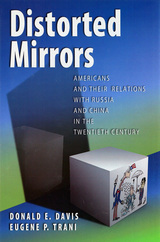 Distorted Mirrors: Americans and Their Relations with Russia and China in the Twentieth Century
Donald E. Davis & Eugene P. Trani
University of Missouri Press, 2009 As the United States enters the twenty-first century, it confronts two powers that loomed less large on the world stage a century before. Yet American policies toward Russia and China have been shaped by attitudes going back even further, as this new book relates. Distorted Mirrors traces American prejudices toward the two countries by focusing on the views of influential writers and politicians over the course of the twentieth century. Donald Davis and Eugene Trani show where American images of Russia and China originated, how they evolved, and how they have often helped sustain foreign policies generally negative toward the former and positive toward the latter. This wide-ranging survey draws on memoirs, archives, and interviews, much the material appearing in print for the first time, to show how influential individuals shaped these perceptions and policies based on what they saw—or thought they saw—in those two countries. Through a series of tableaux that traces America’s relations with Russia and China through the twentieth century, the authors show how personalities of certain players impacted interpretation of key situations and conflicts and how cultural attitudes toward Russia and China became ingrained and difficult to dislodge. The book traces formative attitudes back to two late-nineteenth-century books, with George Kennan’s Siberia and the Exile System painting a grim picture of tsarist penal colonies and William Rockhill’s Land of the Lamas depicting China as an exotic Shangri-la. Davis and Trani show how these images were sustained over the years: for Russia, by Slavic expert Samuel Harper, State Department official Robert Kelley, journalist Eugene Lyons, ambassador William Bullitt, President Franklin D. Roosevelt, and policymakers George F. Kennan and Paul Nitze; and for China, by President Woodrow Wilson, philosopher John Dewey, journalist Edgar Snow, novelist Pearl S. Buck, ambassador Nelson T. Johnson, FDR, journalist Theodore White, and statesman Henry Kissinger. They also relate how Ronald Reagan and George H. W. Bush tried to replace these misconceptions with a policy of accommodation, and they assess the state of current U.S. attitudes and policies. Distorted Mirrors marks a fresh approach to U.S. relations with these countries, emphasizing long-term attitudes that influenced policies rather than the reverse. It shows us that perceptions shaped over the course of the twentieth century are crucial for their bearing on the twenty-first, particularly if those unrestrained prejudices reemerge.
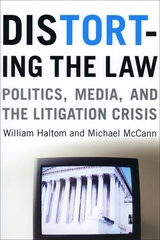 Distorting the Law: Politics, Media, and the Litigation Crisis
William Haltom and Michael McCann
University of Chicago Press, 2004 In recent years, stories of reckless lawyers and greedy citizens have given the legal system, and victims in general, a bad name. Many Americans have come to believe that we live in the land of the litigious, where frivolous lawsuits and absurdly high settlements reign.
Scholars have argued for years that this common view of the depraved ruin of our civil legal system is a myth, but their research and statistics rarely make the news. William Haltom and Michael McCann here persuasively show how popularized distorted understandings of tort litigation (or tort tales) have been perpetuated by the mass media and reform proponents. Distorting the Law lays bare how media coverage has sensationalized lawsuits and sympathetically portrayed corporate interests, supporting big business and reinforcing negative stereotypes of law practices.
Based on extensive interviews, nearly two decades of newspaper coverage, and in-depth studies of the McDonald's coffee case and tobacco litigation, Distorting the Law offers a compelling analysis of the presumed litigation crisis, the campaign for tort law reform, and the crucial role the media play in this process.
 Distorture
Rob Hardin
University of Alabama Press, 1997 It is the end of the century again: the stories in Distorture are elegiac, exquisite panels written in memory of certain decayed angels.
A woman is buried by a musician who has sworn to protect her. A narcoleptic is found, still dreaming, with cryptic symbols engraved into her back. In an elegant loft, a silver-haired man studies the torso of a comatose surfer, and the bodies of the two men are transformed into an intricate work of art. These are only a few of the tortous stories of Rob Hardin, a veteran studio musician and stylist whose work has been called "impeccable" by Dennis Cooper.
Distorture is a fiercely modern book full of jeweled descriptions of violent eroticism. In Distorture, his first book of stories, Rob Hardin subverts nineteenth century romanticism and redefines the aesthetics of excess. Distorture splices the digital and the autumnal with the drive of the dark ambient music and the elegance of a late Liszt Sonata.
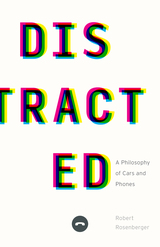 Distracted: A Philosophy of Cars and Phones
Robert Rosenberger
University of Minnesota Press, 2024 Applying insights from philosophy and cognitive science to address the urgent issue of smartphone-induced distracted driving
Although the dangers of texting while driving are widely known, many people resist the idea that phone usage will impair their driving. And connectivity features in new cars have only made using technology behind the wheel more tempting. What will it take to change people’s minds and behavior? Robert Rosenberger contends that a better understanding of why this combination of technologies is so dangerous could effectively adjust both habits and laws. Rosenberger brings together ideas from philosophy and cognitive science to leverage a postphenomenological perspective that reveals how our smartphones make us such bad drivers. Reviewing decades of empirical studies in cognitive science, he shows that we have developed habits of perception regarding our compulsive technology use—habits that may wrest our attention away from the road. Distracted develops innovative concepts for understanding technology-related habits and the ways that our relationships to our devices influence how we perceive the world. In turn, these ideas can help drivers be more cognizant of the effect that smartphone usage has on their perceptions, better inform efforts to enact stricter regulations, and help us all to be more reflective about the technologies that shape our lives.
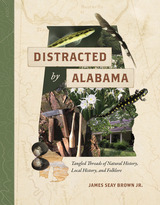 Distracted by Alabama: Tangled Threads of Natural History, Local History, and Folklore
James Seay Brown Jr.
University of Alabama Press, 2022 A gateway to Alabama for the omnivorous mind, Distracted by Alabama is a collection of twelve captivating essays about Alabama and the South by Samford University writer and scholar Jim Brown, a former president of the Alabama Folklife Association.
During his decades living and teaching in Alabama, Brown followed his curiosity down myriad pathways about Alabama and the region, including the state’s majestic landscape, plants and animals found nowhere else, history, and rich folkways. In the tapestry of Alabama culture, Brown traces the threads of Native American, African slave, and European settler influences, woven over the centuries into novel patterns that surprise and fascinate.
Writing in the voice of a learned companion, Brown reveals insights and stories about unforgettable facets of Alabama culture, such as Sacred Harp singers and African American railroad callers, the use of handmade snares and stationary fishtraps to catch river redhorse and freshwater drum, white oak basketmaking and herbal medicine traditions, the evolution of the single-pen log cabin into the impressive two-story I-house, and a wealth of other engrossing stories.
An instant classic, Distracted by Alabama is a keepsake that readers who love, visit, or are curious about Alabama and Southern culture will return to again and again.
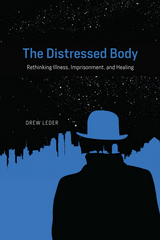 The Distressed Body: Rethinking Illness, Imprisonment, and Healing
Drew Leder
University of Chicago Press, 2016 Bodily pain and distress come in many forms. They can well up from within at times of serious illness, but the body can also be subjected to harsh treatment from outside. The medical system is often cold and depersonalized, and much worse are conditions experienced by prisoners in our age of mass incarceration, and by animals trapped in our factory farms. In this pioneering book, Drew Leder offers bold new ways to rethink how we create and treat distress, clearing the way for more humane social practices.
Leder draws on literary examples, clinical and philosophical sources, his medical training, and his own struggle with chronic pain. He levies a challenge to the capitalist and Cartesian models that rule modern medicine. Similarly, he looks at the root paradigms of our penitentiary and factory farm systems and the way these produce distressed bodies, asking how such institutions can be reformed. Writing with coauthors ranging from a prominent cardiologist to long-term inmates, he explores alternative environments that can better humanize—even spiritualize—the way we treat one another, offering a very different vision of medical, criminal justice, and food systems. Ultimately Leder proposes not just new answers to important bioethical questions but new ways of questioning accepted concepts and practices.
Distributed Control and Filtering for Industrial Systems
Magdi S. Mahmoud
The Institution of Engineering and Technology, 2012 In recent years technological advancements in the design and fabrication of integrated circuits have led to the development of cost effective, low power, thumb-size devices that can be used for sensing/actuating, communication and computing. This trend is enabling a surge of new applications for which pervasive network architectures are being developed. A key feature of these systems is that they are decentralized and communication among different subsystems may be unreliable. From an engineering viewpoint, to ensure correct operation, the theoretical analysis requires a fundamental paradigm shift, as many of the typical assumptions of systems and control theory cease to hold.
Distributed Energy Storage in Urban Smart Grids
Paulo F. Ribeiro
The Institution of Engineering and Technology, 2023 Renewable energy is key to stopping climate change, however, the intermittent nature of most forms of renewable energy generation poses a challenge. Energy storage is therefore a focus of research and development, particularly for urban areas with their limited space and high population density, which results in massive demand for both small distributed and utility-scale generation. Such locations require thorough integration of storage, with the urban energy system treated as a whole, and sufficient planning, sizing and siting, and upgrades to the existing power grid hardware.
Distributed Feedback Semiconductor Lasers
John Carroll
The Institution of Engineering and Technology, 1998 Distributed feedback (DFB) semiconductor lasers emit light in a single mode which is essential to providing the carrier in long haul high bit-rate optical communication systems. This comprehensive research monograph provides:
Distributed Generation
Nick Jenkins
The Institution of Engineering and Technology, 2010 Throughout the world there is concern over the impact of energy use on the environment (particularly CO2 emissions) and also over the security of fossil fuel supplies. Consequently, governments and energy planners are actively encouraging alternative and cleaner forms of energy production such as renewables (e.g. wind, solar, biomass) and combined heat and power (CHP).
Distributed Small Wind Turbines
Mark Runacres
The Institution of Engineering and Technology, 2025 Small wind turbines can contribute substantially to both a low-carbon energy system, as well as to the autarky and resilience of rural or remote communities and facilities. They can be deployed on building roofs as well as on the ground, and are a useful complement to photovoltaic systems, because they can generate power overnight or in cloudy weather. A range of technologies and designs are available, and suitability depends on the situation, so systematic modelling combined with collection of experience are necessary in making successful, efficient and cost-effective selection decisions.
Distribution of Illinois Vascular Plants
Robert H. Mohlenbrock and Douglas M. Ladd
Southern Illinois University Press, 1978
This new distribution list— the first since Winterringer and Evers (1960)— brings up-to-date every vascular plant known to occur in Illinois as a native, naturalized, or escaped species, some 3,001 taxa of vascular plants within the boundaries of the state.
There are 251 pages of distribution maps included in this book. The plants are arranged alphabetically by genus, and under each genus alphabetically by species. The nomenclature follows Mohlenbrock, Guide to the Vascular Flora of Illinois (1975).
In addition, a list of synonyms applied to Illinois taxa by Fernald (1950), Gleason (1952), and Jones (1963) follows the distribution maps.
Finally, in order to gain an understanding of relationships of the plants in the Illinois flora, all 3,001 taxa are arranged in a phylogenetic sequence at the end of the book.
Distribution of the Aboriginal Population of Michigan
William B. Hinsdale
University of Michigan Press, 1932 The second book in the Museum’s Occasional Contributions series is W. B. Hinsdale’s work on the Native population of Michigan before and during the period of European contact. Hinsdale describes how the location of food sources (animal and plant) influenced Native settlement patterns.
Distribution of Wealth and Income in the United States in 1798
Lee Soltow
University of Pittsburgh Press, 1989 Lee Soltow examines wealth and income in the United States during the Federal period, at a time when state constitutions were formed, national tax laws written, and policies for banking, credit, and debt first formulated. Soltow bases his study on the national census of 1798, which catalogued nearly every piece of property in the United States -land, dwellings, mills, and wharfs-in order to levy the First Direct Tax. He complements this with information from the 1790 and 1800 United States censuses, and with data gathered fifty years before and after this time, to offer an exhaustive survey of the distribution of wealth in early America. He then compares these findings to conditions in Europe during the same period, and discovers that, while wealth in America was not evenly dispersed, it was far more equal than European nations.
Distribution Switchgear
Stan Stewart
The Institution of Engineering and Technology, 2004 Switchgear plays a fundamental role within the power supply industry. It is required to isolate faulty equipment, divide large networks into sections for repair purposes and reconfigure networks in order to restore power supplies and control other equipment.
Distribution System Analysis and Automation
Juan M. Gers
The Institution of Engineering and Technology, 2013 Distribution systems analysis employs a set of techniques that allow engineers to simulate, analyse, and optimise power distribution systems. Combined with automation, these techniques underpin the emerging concept of the 'smart grid', a digitally-enabled electrical supply grid that can monitor and respond to the behaviour of all its components in real time.
Distribution Systems Analysis and Automation
Juan Manuel Gers
The Institution of Engineering and Technology, 2020 Distribution systems analysis employs a set of techniques to simulate, analyse, and optimise power distribution systems. Combined with automation, these techniques underpin the concept of the smart grid. In recent years, distribution systems have been facing growing challenges, due to increasing demand as well as the rising shares of distributed and volatile renewable energy sources.
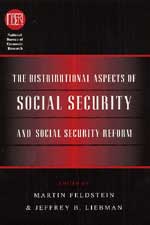 The Distributional Aspects of Social Security and Social Security Reform
Edited by Martin Feldstein and Jeffrey B. Liebman
University of Chicago Press, 2002 Social security is the largest and perhaps the most popular program run by the federal government. Given the projected increase in both individual life expectancy and sheer number of retirees, however, the current system faces an eventual overload. Alternative proposals have emerged, ranging from reductions in future benefits to a rise in taxrevenue to various forms of investment-based personal retirement accounts.
As this volume suggests, the distributional consequences of these proposals are substantially different and may disproportionately affect those groups who depend on social security to avoid poverty in old age. Together, these studies persuasively show that appropriately designed investment-based social security reforms can effectively reduce the long-term burden of an aging society on future taxpayers, increase the expected future income of retirees, and mitigate poverty rates among the elderly.
Distributions of the Sensible: Rancière, between Aesthetics and Politics
Edited by Scott Durham and Dilip Gaonkar With an afterword by Jacques Rancière
Northwestern University Press, 2019 Jacques Rancière’s work is increasingly central to several debates across the humanities. Distributions of the Sensible confronts a question at the heart of his thought: How should we conceive the relationship between the “politics of aesthetics” and the “aesthetics of politics”? Specifically, the book explores the implications of Rancière’s rethinking of the relationship of aesthetic to political democracy from a wide range of critical perspectives. Distributions of the Sensible contains original essays by leading scholars on topics such as Rancière’s relation to political theory, critical theory, philosophical aesthetics, and film. The book concludes with a new essay by Rancière himself that reconsiders the practice of theory between aesthetics and politics.
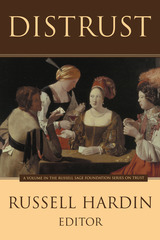 Distrust
Russell Hardin
Russell Sage Foundation, 2004 If trust is sometimes the rational response in interpersonal relations, then it can also be rational to distrust. Indeed, distrust is the preferred response when it protects against harm—as when parents do not entrust the safety of their child to a disreputable caretaker. Liberal political theory was largely founded on distrust of government, and the assumption that government cannot and should not be trusted led the framers of the U.S. constitution to establish a set of institutions explicitly designed to limit government power. With contributions from political science, anthropology, economics, psychology, and philosophy, Distrust examines the complex workings of trust and distrust in personal relationships, groups, and international settings. Edna Ullman-Margalit succinctly defines distrust as the negation of trust, and examines the neutral state between the two responses in interpersonal relations. As Margalit points out, people typically defer judgment—while remaining mildly wary of another's intentions—until specific grounds for trust or distrust become evident. In relations between nations, misplaced trust can lead to grievous harm, so nations may be inclined to act as though they distrust other nations more than they actually do. Editor Russell Hardin observes that the United States and the former Soviet Union secured a kind of institutionalized distrust—through the development of the nuclear deterrent system—that stabilized the relationship between the two countries for four decades. In another realm where distrust plays a prominent role, Margaret Levi, Matthew Moe, and Theresa Buckley show that since the National Labor Relations Board has not been able to overcome distrust between labor unions and employers, it strives to equalize the power held by each group in negotiations. Recapitulating liberal concerns about state power, Patrick Troy argues that citizen distrust keeps government regulation under scrutiny and is more beneficial to the public than unconditional trust. Despite the diversity of contexts examined, the contributors reach remarkably similar conclusions about the important role of trust and distrust in relations between individuals, nations, and citizens and their governments. Distrust makes a significant contribution to the growing field of trust studies and provides a useful guide for further research. A Volume in the Russell Sage Foundation Series on Trust
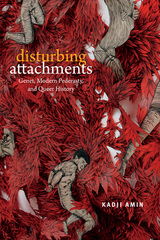 Disturbing Attachments: Genet, Modern Pederasty, and Queer History
Kadji Amin
Duke University Press, 2017 Jean Genet (1910–1986) resonates, perhaps more than any other canonical queer figure from the pre-Stonewall past, with contemporary queer sensibilities attuned to a defiant non-normativity. Not only sexually queer, Genet was also a criminal and a social pariah, a bitter opponent of the police state, and an ally of revolutionary anticolonial movements. In Disturbing Attachments, Kadji Amin challenges the idealization of Genet as a paradigmatic figure within queer studies to illuminate the methodological dilemmas at the heart of queer theory. Pederasty, which was central to Genet's sexuality and to his passionate cross-racial and transnational political activism late in life, is among a series of problematic and outmoded queer attachments that Amin uses to deidealize and historicize queer theory. He brings the genealogy of Genet's imaginaries of attachment to bear on pressing issues within contemporary queer politics and scholarship, including prison abolition, homonationalism, and pinkwashing. Disturbing Attachments productively and provocatively unsettles queer studies by excavating the history of its affective tendencies to reveal and ultimately expand the contexts that inform the use and connotations of the term queer.
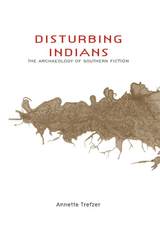 Disturbing Indians: The Archaeology of Southern Fiction
Annette Trefzer
University of Alabama Press, 2007 How Faulkner, Welty, Lytle, and Gordon reimagined and reconstructed the Native American past in their work. In this book, Annette Trefzer argues that not only have Native Americans played an active role in the construction of the South’s cultural landscape—despite a history of colonization, dispossession, and removal aimed at rendering them invisible—but that their under-examined presence in southern literature also provides a crucial avenue for a post-regional understanding of the American South. William Faulkner, Eudora Welty, Andrew Lytle, and Caroline Gordon created works about the Spanish conquest of the New World, the Cherokee frontier during the Revolution, the expansion into the Mississippi Territory, and the slaveholding societies of the American southeast. They wrote 100 years after the forceful removal of Native Americans from the southeast but consistently returned to the idea of an "Indian frontier," each articulating a different vision and discourse about Native Americans—wholesome and pure in the vision of some, symptomatic of hybridity and universality for others. Trefzer contends that these writers engage in a double discourse about the region and nation: fabricating regional identity by invoking the South’s "native" heritage and pointing to issues of national guilt, colonization, westward expansion, and imperialism in a period that saw the US sphere of influence widen dramatically. In both cases, the "Indian" signifies regional and national self-definitions and contributes to the shaping of cultural, racial, and national "others." Trefzer employs the idea of archeology in two senses: quite literally the excavation of artifacts in the South during the New Deal administration of the 1930s (a surfacing of material culture to which each writer responded) and archeology as a method for exploring texts she addresses (literary digs into the textual strata of America’s literature and its cultural history).
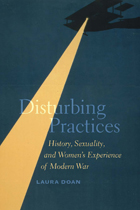 Disturbing Practices: History, Sexuality, and Women's Experience of Modern War
Laura Doan
University of Chicago Press, 2013 For decades, the history of sexuality has been a multidisciplinary project serving competing agendas. Lesbian, gay, and queer scholars have produced powerful narratives by tracing the homosexual or queer subject as continuous or discontinuous. Yet organizing historical work around categories of identity as normal or abnormal often obscures how sexual matters were known or talked about in the past. Set against the backdrop of women’s work experiences, friendships, and communities during World War I, Disturbing Practices draws on a substantial body of new archival material to expose the roadblocks still present in current practices and imagine new alternatives.
In this landmark book, Laura Doan clarifies the ethical value and political purpose of identity history—and indeed its very capacity to give rise to innovative practices borne of sustained exchange between queer studies and critical history. Disturbing Practices insists on taking seriously the imperative to step outside the logic of identity to address questions as yet unasked about the modern sexual past.
 The Disturbing Profane: Hip Hop, Blackness, and the Sacred
Joseph R. Winters
Duke University Press, 2025 In The Disturbing Profane, Joseph R. Winters explores how hip hop’s religiosity is found in qualities associated with the dark sacred. Rather than purity and wholeness, this expression of the sacred signifies death and pleasure, opacity and contamination, exorbitance and anguish. Winters brings religious studies, black studies, black feminist thought, and critical theory to bear on hip hop to trouble distinctions between the sacred and the profane. He shows how artists like Notorious B.I.G., Lauryn Hill, Kendrick Lamar, Lupe Fiasco, and Nicki Manaj undermine stable meanings of the sacred to reveal listeners’ investments in unpleasant realities. Hip hop opens its audience to a volatile notion of the sacred and the unruly qualities of blackness. Moreover, Winters demonstrates that hip hop’s dark sacrality makes it inseparable from its expression of, participation in, and resistance to the antiblack and black gendered violence that organizes the social world.
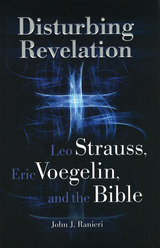 Disturbing Revelation: Leo Strauss, Eric Voegelin, and the Bible
John J. Ranieri
University of Missouri Press, 2009 Political philosophers Leo Strauss and Eric Voegelin share an abiding interest in the Judeo-Christian tradition. In Disturbing Revelation, the first book to focus on their treatment of the Bible, John Ranieri explores how they draw on its texts in their philosophies and shows what these considerations say about whether the combination of religion and politics leads to violence or can prevent it. In addressing fundamental questions of reason and revelation, Ranieri focuses not on Strauss’s treatment of Judaism or Voegelin’s of Christianity, but rather on the place of the Bible in their thought. He first examines the differences between their methodological approaches and attitudes toward the Bible and biblical criticism—rather than their attitudes toward religion or questions of faith—and then explores in depth their interpretations of the biblical message and its contribution to the modern world. Ranieri shows how both men recognized that biblical texts must be seriously engaged in order for us to understand our contemporary situation—but that their appreciation of the Bible is marked by deep ambivalence concerning its vision of life and its influence on the political sphere. He brings their thought into conversation with that of René Girard, whose writings on violence and religion shed light on the problems that arise when biblical insights take root in a culture, and also offers fresh insight into Strauss’s elusive writings, such as his indebtedness to Nietzsche. Disturbing Revelation reveals how Strauss and Voegelin viewed the applicability of biblical texts to what they considered the crisis of modernity without belaboring questions of their own personal faith. It is a clearly written exposition that reflects a rich understanding of the work of these thinkers and is as provocative as it is informative, not only for students of the two men but also for anyone interested in the relationship between philosophy and religious belief.
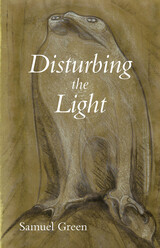 Disturbing the Light
Samuel Green
Carnegie Mellon University Press, 2020 Through the course of numerous books, Samuel Green has established his primary poetic preoccupations, and in Disturbing the Light, he continues to mine them, addressing rituals and work in a small, isolated, rural community; the influence of the past on the present, especially in families; and the nature and evolution of a love that has spanned five decades. Added to these themes is something new: Poems written in response to symptoms of late onset PTSD. Though Green’s Coast Guard service in Vietnam ended in the fall of 1969, memories have returned recently in vivid, disturbing details, amplified by the haunting knowledge that civilians in Southeast Asia are still, today, suffering death and injury from unexploded ordnance left over from that war. A powerful collection that reminds us that our past is always with us, even as we attend carefully to the present, Disturbing the Light is a masterwork from a poet at the height of his powers.
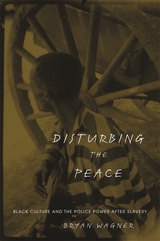 Disturbing the Peace: Black Culture and the Police Power after Slavery
Bryan Wagner
Harvard University Press, 2009 W. C. Handy waking up to the blues on a train platform, Buddy Bolden eavesdropping on the drums at Congo Square, John Lomax taking his phonograph recorder into a southern penitentiary—some foundational myths of the black vernacular remain inescapable, even as they come under increasing pressure from skeptics.
In Disturbing the Peace, Bryan Wagner revises the history of the black vernacular tradition and gives a new account of black culture by reading these myths in the context of the tradition’s ongoing engagement with the law. Returning to some familiar examples (trickster tales, outlaw legends, blues lyrics) central to previous studies of the black vernacular expression, Wagner uses an analytic framework he has developed from the historical language of the law to give new and surprising analyses.
Wagner’s work draws both on his deep understanding of history and on a wealth of primary sources that range from novels to cartoons to popular ballads and early blues songs to newspapers and court reports. Through his innovative engagement with them, Wagner gives us a new and deeper understanding of black cultural expression, revealing its basis in the relational workings of African Americans in the social world.
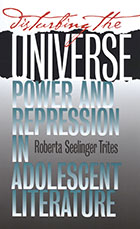 Disturbing the Universe: Power and Repression in Adolescent Literature
Roberta S. Trites
University of Iowa Press, 2004 The Young Adult novel is ordinarily characterized as a coming-of-age story, in which the narrative revolves around the individual growth and maturation of a character, but Roberta Trites expands this notion by chronicling the dynamics of power and repression that weave their way through YA books. Characters in these novels must learn to negotiate the levels of power that exist in the myriad social institutions within which they function, including family, church, government, and school. Trites argues that the development of the genre over the past thirty years is an outgrowth of postmodernism, since YA novels are, by definition, texts that interrogate the social construction of individuals. Drawing on such nineteenth-century precursors as Little Women and Adventures of Huckleberry Finn, Disturbing the Universe demonstrates how important it is to employ poststructuralist methodologies in analyzing adolescent literature, both in critical studies and in the classroom. Among the twentieth-century authors discussed are Blume, Hamilton, Hinton, Le Guin, L'Engle, and Zindel. Trites' work has applications for a broad range of readers, including scholars of children's literature and theorists of post-modernity as well as librarians and secondary-school teachers. Disturbing the Universe: Power and Repression in Adolescent Literature by Roberta Seelinger Trites is the winner of the 2002 Children's Literature Association's Book Award. The award is given annually in order to promote and recognize outstanding contributions to children's literature, history, scholarship, and criticisim; it is one of the highest academic honors that can accrue to an author of children's literary criticism.
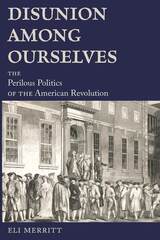 Disunion Among Ourselves: The Perilous Politics of the American Revolution
Eli Merritt
University of Missouri Press, 2025 Winner of the 2024 Society of the Cincinnati Prize from the American Revolution Institute
In this eye-opening account, Eli Merritt reveals the deep political divisions that almost tore the Union apart during the American Revolution. So fractious were the founders’ political fights that they feared the War of Independence might end in disunion and civil war.
Instead of disbanding into separate regional confederacies, the founders managed to unite for the sake of liberty and self-preservation. In so doing, they succeeded in holding the young nation together. To achieve this, they forged grueling compromises, including Declaration of Independence in 1776, the Mississippi-Fisheries Compromise of 1779, and the ratification of the Articles of Confederation in 1781.
In addition to bringing new insights to the history of the American Revolution, Disunion Among Ourselves has inevitable resonances with our present era of political hyperpolarization and serves as a touchstone for contemporary politics, reminding us that the founders overcame far tougher times than our own through commitment to ethical constitutional democracy and compromise.
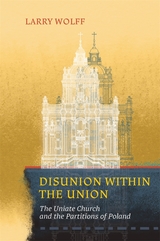 Disunion within the Union: The Uniate Church and the Partitions of Poland
Larry Wolff
Harvard University Press, 2020 Between 1772 and 1795, Russia, Prussia, and Austria concluded agreements to annex and eradicate the Commonwealth of Poland-Lithuania. With the partitioning of Poland, the dioceses of the Uniate Church (later known as the Greek Catholic Church) were fractured by the borders of three regional hegemons.
Larry Wolff's deeply engaging account of these events delves into the politics of the Episcopal elite, the Vatican, and the three rulers behind the partitions: Catherine II of Russia, Frederick II of Prussia, and Joseph II of Austria. Wolff uses correspondence with bishops in the Uniate Church and ministerial communiqués to reveal the nature of state policy as it unfolded.
Disunion within the Union adopts methodologies from the history of popular culture pioneered by Natalie Zemon Davis (The Return of Martin Guerre) and Carlo Ginzburg (The Cheese and the Worms) to explore religious experience on a popular level, especially questions of confessional identity and practices of piety. This detailed study of the responses of common Uniate parishioners, as well as of their bishops and hierarchs, to the pressure of the partitions paints a vivid portrait of conflict, accommodation, and survival in a church subject to the grand designs of the late eighteenth century’s premier absolutist powers.
Dita Saxova
Arnost Lustig
Northwestern University Press, 1993 Dita Saxova is an eighteen-year-old concentration camp survivor trying to start a new life in postwar Prague. Living in a special hostel for orphans from the camps, too old to be cared for parentally, too young to be fully adult, too soaked in reality to harbor many illusions, Dita struggles to reconcile struggles to reconcile her unfathomable past with her enigmatic future. First published in Czech in 1962, then in English in 1979, Dita Saxova confirms Arnost Lustig's place as one of the masterful storytellers of the Holocaust period.
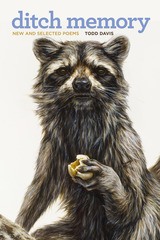 Ditch Memory: New and Selected Poems
Todd Davis
Michigan State University Press, 2024 In an age when many find themselves disconnected from the natural world, celebrated poet Todd Davis offers the possibilities of reconnection, of listening to the earth’s labored breathing, to the thoughts of other-than-human animals and the languages trees speak. In thirty new poems, and with ample selections from his previous seven books, Davis’s roots run deep in Rust-Belt Appalachia, attending to the harmed but healing landscape, the people whose lives are too often neglected, and the looming threat of climate collapse and extinction. Orion Magazine likens Davis’s work to Wendell Berry and Mary Oliver, as he continues to demonstrate what one reviewer describes as his knowledge of “Latin names, common names, habitats and habits . . . steeped in the exactness of the earth and the science that unfolds in wildness.” Known for both narrative and lyrical impulses, Davis asks readers to acknowledge their kinship with all living beings, which demands some grieving for past sins but also suggests a way toward restoration. With a Foreword by David James Duncan.
Diurne
Kristin George Bagdanov
Tupelo Press, 2019 Diurne is a procedural project, “a line each hour of waking / a poem each day of making,” that explores how poetry is durational rather than inspirational, work rather than epiphany. It is part autobiography, part journalism, part theory, and part apology for not being traditional “poetry.”
 Diva
Rafael Campo
Duke University Press, 1999 A major new work from one of America's most acclaimed younger poets, Rafael Campo's Diva appears at the intersection of confession and confinement, hyperbole and humility. In his masterful third collection, Campo explores further the epic themes of his Cuban heritage and America's newness, his work as a doctor caring for AIDS patients and his identity as a gay man. At once relishing and resisting the poetic traditions of formal English verse, Diva showcases Campo moving deftly between received forms and free verse. In each poem the sound of words is transformed into the highest of arts, the act of performance into the exercise of power, and the most profound abjection into the sweet promise of divinity. Culminating with his new and daring translations of Federico García Lorca's sonetos—the great Spanish poet's most homoerotically explicit and formally accomplished poems—Campo's music instills in the reader an exalted understanding of beauty, suffering, and, ultimately, the human capacity for empathy. From reviews of Campo's previous poetry:
“Extraordinary meditations on illness and the healing power of words.”—Lambda Literary Foundation “Read Campo to enter the bloodstream of a man who, with a haunting clarity of vision, shares his memories, his anguish, his healing love.”—Cortney Davis, Literature and Medicine “Riveting, provocative, and refreshing—[this volume] is a gift to the clinician who is trying to re-invoke in his or her students the humility, compassion, and deep caring that brought us all into medicine in the first place.”—Dr. Sandra L. Bertman, Annals of Internal Medicine “[Campo] listens to the sounds the body makes, but what he hears is poetry.”—Zoë Ingalls, Chronicle of Higher Education “Powerful and accessible.”—Jonathan Jackson, Washington Blade “Bemused, indelible, and heartbreaking.”—Marilyn Hacker, Out “[Campo’s] private corral of disparate words twist, torque, collide with gorgeous creative imperative.”—Nomi Eve, Independent Weekly
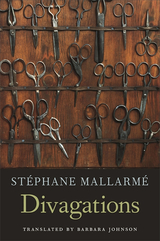 Divagations
Stéphane Mallarmé
Harvard University Press, 2009 "This is a book just the way I don't like them," the father of French Symbolism, Stéphane Mallarmé, informs the reader in his preface to Divagations: "scattered and with no architecture." On the heels of this caveat, Mallarmé's diverting, discursive, and gorgeously disordered 1897 masterpiece tumbles forth--and proves itself to be just the sort of book his readers like most.
The salmagundi of prose poems, prose-poetic musings, criticism, and reflections that is Divagations has long been considered a treasure trove by students of aesthetics and modern poetry. If Mallarmé captured the tone and very feel of fin-de-siècle Paris, he went on to captivate the minds of the greatest writers of the twentieth century--from Valéry and Eliot to Paul de Man and Jacques Derrida. This was the only book of prose he published in his lifetime and, in a new translation by Barbara Johnson, is now available for the first time in English as Mallarmé arranged it. The result is an entrancing work through which a notoriously difficult-to-translate voice shines in all of its languor and musicality.
Whether contemplating the poetry of Tennyson, the possibilities of language, a masturbating priest, or the transporting power of dance, Mallarmé remains a fascinating companion--charming, opinionated, and pedantic by turns. As an expression of the Symbolist movement and as a contribution to literary studies, Divagations is vitally important. But it is also, in Johnson's masterful translation, endlessly mesmerizing.
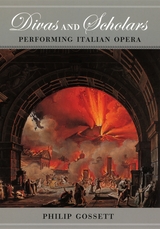 Divas and Scholars: Performing Italian Opera
Philip Gossett
University of Chicago Press, 2006 Winner of the 2007 Otto Kinkeldey Award from the American Musicological Society and the 2007 Deems Taylor Award from the American Society of Composers, Authors, and Publishers. Divas and Scholars is a dazzling and beguiling account of how opera comes to the stage, filled with Philip Gossett’s personal experiences of triumphant—and even failed—performances and suffused with his towering and tonic passion for music. Writing as a fan, a musician, and a scholar, Gossett, the world's leading authority on the performance of Italian opera, brings colorfully to life the problems, and occasionally the scandals, that attend the production of some of our most favorite operas.
Gossett begins by tracing the social history of nineteenth-century Italian theaters in order to explain the nature of the musical scores from which performers have long worked. He then illuminates the often hidden but crucial negotiations opera scholars and opera conductors and performers: What does it mean to talk about performing from a critical edition? How does one determine what music to perform when multiple versions of an opera exist? What are the implications of omitting passages from an opera in a performance? In addition to vexing questions such as these, Gossett also tackles issues of ornamentation and transposition in vocal style, the matters of translation and adaptation, and even aspects of stage direction and set design.
Throughout this extensive and passionate work, Gossett enlivens his history with reports from his own experiences with major opera companies at venues ranging from the Metropolitan and Santa Fe operas to the Rossini Opera Festival at Pesaro. The result is a book that will enthrall both aficionados of Italian opera and newcomers seeking a reliable introduction to it—in all its incomparable grandeur and timeless allure.
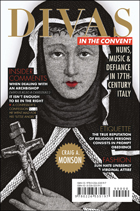 Divas in the Convent: Nuns, Music, and Defiance in Seventeenth-Century Italy
Craig A. Monson
University of Chicago Press, 2012 When eight-year-old Lucrezia Orsina Vizzana (1590–1662) entered one of the preeminent convents in Bologna in 1598, she had no idea what cloistered life had in store for her. Thanks to clandestine instruction from a local maestro di cappella—and despite the church hierarchy’s vehement opposition to all convent music—Vizzana became the star of the convent, composing works so thoroughly modern and expressive that a recent critic described them as “historical treasures.” But at the very moment when Vizzana’s works appeared in 1623—she would be the only Bolognese nun ever to publish her music—extraordinary troubles beset her and her fellow nuns, as episcopal authorities arrived to investigate anonymous allegations of sisterly improprieties with male members of their order. Craig A. Monson retells the story of Vizzana and the nuns of Santa Cristina to elucidate the role that music played in the lives of these cloistered women. Gifted singers, instrumentalists, and composers, these nuns used music not only to forge links with the community beyond convent walls, but also to challenge and circumvent ecclesiastical authority. Monson explains how the sisters of Santa Cristina—refusing to accept what the church hierarchy called God’s will and what the nuns perceived as a besmirching of their honor—fought back with words and music, and when these proved futile, with bricks, roof tiles, and stones. These women defied one Bolognese archbishop after another, cardinals in Rome, and even the pope himself, until threats of excommunication and abandonment by their families brought them to their knees twenty-five years later. By then, Santa Cristina’s imaginative but frail composer literally had been driven mad by the conflict. Monson’s fascinating narrative relies heavily on the words of its various protagonists, on both sides of the cloister wall, who emerge vividly as imaginative, independent-minded, and not always sympathetic figures. In restoring the musically gifted Lucrezia Orsina Vizzana to history, Monson introduces readers to the full range of captivating characters who played their parts in seventeenth-century convent life.
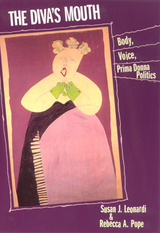 The Diva's Mouth: Body, Voice, and Prima Donna Politics
Leonardi, Susan J.
Rutgers University Press, 1996 Like the divine, divas, it seems, are omnipresent. From the sirens to Madonna, from castrati to Callas, from opera stage to drag shows to TV commercials, from George Eliot to writers of detective fiction, the diva has been worshipped, feared, maligned, parodied, and appropriated. The Diva's Mouth: Bodies, Voice, and Prima Donna Politics examines how and why, from the eighteenth century to the present, divas have been talked about with so much passion and written up, down, and over with so much ambiguity and contradiction. The book explores the myriad roles the diva plays in masculinist, feminist, and queer imaginations--in opera itself and in other fictions, films, and fantasies, including the divas' (and the authors') own. Finally, it examines how and why pop and "pomo" singers, like Madonna, Annie Lennox, and Diamanda Galas, in very explicit ways both flirt with and fling off the fantasy of the woman with a voice. In this very witty and highly readable book, the authors tell everything you always wanted to know and make you want to know even more about the diva.
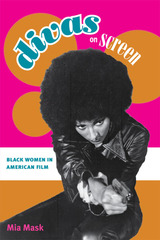 Divas on Screen: Black Women in American Film
Mia Mask
University of Illinois Press, 2008 This insightful study places African American women's stardom in historical and industrial contexts by examining the star personae of five African American women: Dorothy Dandridge, Pam Grier, Whoopi Goldberg, Oprah Winfrey, and Halle Berry. Interpreting each woman's celebrity as predicated on a brand of charismatic authority, Mia Mask shows how these female stars have ultimately complicated the conventional discursive practices through which blackness and womanhood have been represented in commercial cinema, independent film, and network television. Mask examines the function of these stars in seminal yet underanalyzed films. She considers Dandridge's status as a sexual commodity in films such as Tamango, revealing the contradictory discourses regarding race and sexuality in segregation-era American culture. Grier's feminist-camp performances in sexploitation pictures Women in Cages and The Big Doll House and her subsequent blaxploitation vehicles Coffy and Foxy Brown highlight a similar tension between representing African American women as both objectified stereotypes and powerful, self-defining icons. Mask reads Goldberg's transforming habits in Sister Act and The Associate as representative of her unruly comedic routines, while Winfrey's daily television performance as self-made, self-help guru echoes Horatio Alger narratives of success. Finally, Mask analyzes Berry's meteoric success by acknowledging the ways in which Dandridge's career made Berry's possible.
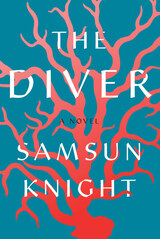 The Diver
Samsun Knight
University of Iowa Press, 2023 Marta doesn’t mean to kill her husband. In fact, she hardly believes that he’s dead. After a dramatic accident leaves him drowned at the bottom of Lake Michigan, she embarks on a grief-fueled descent into the occult, and soon pulls in everyone around her, from her mother-in-law to the private detectives parked outside her home, as she tries to undo her one deadly mistake.
Peter is a young paralegal at the firm hired to investigate Marta’s role in her husband’s death, who is grappling with the recent suicide of his brother and the subsequent distance that seems to have opened between himself and the rest of the world. After learning about Marta’s case, he finds himself haunted by her story and enthralled by her. On an outing to interview her neighbors, he instead warns her that a company of private detectives is preparing to make trouble. Marta slams the door on him, but later sets up a time to hear him out. Neither Marta nor Peter could predict the consequences of their meeting.
A genre-bending story of heartache and devotion that questions where the boundaries begin and end in our closest relationships, The Diver explores the risks and rewards of intimacy, and offers a portrait of love as a catastrophic event.
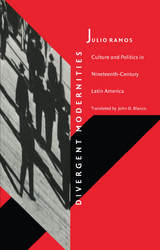 Divergent Modernities: Culture and Politics in Nineteenth-Century Latin America
Julio Ramos
Duke University Press, 2001 With a Foreword by José David Saldívar Since its first publication in Spanish nearly a decade ago, Julio Ramos’s Desenucuentros de la modernidad en America Latina por el siglo XIX has been recognized as one of the most important studies of modernity in the western hemisphere. Available for the first time in English—and now published with new material—Ramos’s study not only offers an analysis of the complex relationships between history, literature, and nation-building in the modern Latin American context but also takes crucial steps toward the development of a truly comparative inter-American cultural criticism.
With his focus on the nineteenth century, Ramos begins his genealogy of an emerging Latin Americanism with an examination of Argentinean Domingo Sarmiento and Chilean Andrés Bello, representing the “enlightened letrados” of tradition. In contrast to these “lettered men,” he turns to Cuban journalist, revolutionary, and poet José Martí, who, Ramos suggests, inaugurated a new kind of intellectual subject for the Americas. Though tracing Latin American modernity in general, it is the analysis of Martí—particularly his work in the United States—that becomes the focal point of Ramos’s study. Martí’s confrontation with the unequal modernization of the New World, the dependent status of Latin America, and the contrast between Latin America’s culture of elites and the northern mass culture of commodification are, for Ramos, key elements in understanding the complex Latin American experience of modernity.
Including two new chapters written for this edition, as well as translations of three of Martí’s most important works, Divergent Modernities will be indispensable for anyone seeking to understand development and modernity across the Americas.
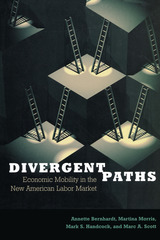 Divergent Paths: Economic Mobility in the New American Labor Market
Annette Bernhardt
Russell Sage Foundation, 2001 The promise of upward mobility—the notion that everyone has the chance to get ahead—is one of this country's most cherished ideals, a hallmark of the American Dream. But in today's volatile labor market, the tradition of upward mobility for all may be a thing of the past. In a competitive world of deregulated markets and demanding shareholders, many firms that once offered the opportunity for advancement to workers have remade themselves as leaner enterprises with more flexible work forces. Divergent Paths examines the prospects for upward mobility of workers in this changed economic landscape. Based on an innovative comparison of the fortunes of two generations of young, white men over the course of their careers, Divergent Paths documents the divide between the upwardly mobile and the growing numbers of workers caught in the low-wage trap. The first generation entered the labor market in the late 1960s, a time of prosperity and stability in the U.S. labor market, while the second generation started work in the early 1980s, just as the new labor market was being born amid recession, deregulation, and the weakening of organized labor. Tracking both sets of workers over time, the authors show that the new labor market is more volatile and less forgiving than the labor market of the 1960s and 1970s. Jobs are less stable, and the penalties for failing to find a steady employer are more severe for most workers. At the top of the job pyramid, the new nomads—highly credentialed, well-connected workers—regard each short-term project as a springboard to a better-paying position, while at the bottom, a growing number of retail workers, data entry clerks, and telemarketers, are consigned to a succession of low-paying, dead-end jobs. While many commentators dismiss public anxieties about job insecurity as overblown, Divergent Paths carefully documents hidden trends in today's job market which confirm many of the public's fears. Despite the celebrated job market of recent years, the authors show that the old labor market of the 1960s and 1970s propelled more workers up the earnings ladder than does today's labor market. Divergent Paths concludes with a discussion of policy strategies, such as regional partnerships linking corporate, union, government, and community resources, which may help repair the career paths that once made upward mobility a realistic ambition for all American workers.
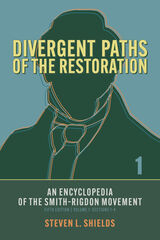 Divergent Paths of the Restoration: An Encyclopedia of the Smith–Rigdon Movement, Volume 1: Sections 1–4
Steven L. Shields
Signature Books, 2022 When Joseph Smith founded the Church of Christ in 1830, he declared it to be God’s restoration of true Christianity, the Kingdom of God on earth. Although he foresaw opposition to such bold claims, he could not fathom that time and unforeseen circumstances would help to spawn hundreds of off-shoots and competing denominations—all claiming their origins in a movement born and sustained originally by Smith and Sidney Rigdon. Many of these groups have endured and boast multiple congregations of believers in many countries; others came and went quickly and have long since been forgotten. Some have survived but have only appealed to a handful of believers. Steven L Shields has for decades chronicled the various origins and paths of all known Restoration movements. This fifth edition of his encyclopedic study, offered as an ebook, includes recent groups born as internet communities. That so many groups and individuals have been unsatisfied with the more mainstream Mormon churches, yet cling to tenets of the Smith–Rigdon movement, speaks to the strengths of the restoration concept and the naïve view that one denomination can successfully meet all the needs of believers.
 Divergent Paths of the Restoration: An Encyclopedia of the Smith–Rigdon Movement
Steven L. Shields
Signature Books, 2021 When Joseph Smith founded the Church of Christ in 1830, he declared it to be God’s restoration of true Christianity, the Kingdom of God on earth. Although he foresaw opposition to such bold claims, he could not fathom that time and unforeseen circumstances would help to spawn hundreds of off-shoots and competing denominations—all claiming their origins in a movement born and sustained originally by Smith and Sidney Rigdon. Many of these groups have endured and boast multiple congregations of believers in many countries; others came and went quickly and have long since been forgotten. Some have survived but have only appealed to a handful of believers. Steven L Shields has for decades chronicled the various origins and paths of all known Restoration movements. This fifth edition of his encyclopedic study, offered as an ebook, includes recent groups born as internet communities. That so many groups and individuals have been unsatisfied with the more mainstream Mormon churches, yet cling to tenets of the Smith–Rigdon movement, speaks to the strengths of the restoration concept and the naïve view that one denomination can successfully meet all the needs of believers.
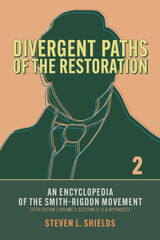 Divergent Paths of the Restoration: An Encyclopedia of the Smith–Rigdon Movement, Volume 2: Sections 5–12 & Appendices
Steven L. Shields
Signature Books, 2022 When Joseph Smith founded the Church of Christ in 1830, he declared it to be God’s restoration of true Christianity, the Kingdom of God on earth. Although he foresaw opposition to such bold claims, he could not fathom that time and unforeseen circumstances would help to spawn hundreds of off-shoots and competing denominations—all claiming their origins in a movement born and sustained originally by Smith and Sidney Rigdon. Many of these groups have endured and boast multiple congregations of believers in many countries; others came and went quickly and have long since been forgotten. Some have survived but have only appealed to a handful of believers. Steven L Shields has for decades chronicled the various origins and paths of all known Restoration movements. This fifth edition of his encyclopedic study, offered as an ebook, includes recent groups born as internet communities. That so many groups and individuals have been unsatisfied with the more mainstream Mormon churches, yet cling to tenets of the Smith–Rigdon movement, speaks to the strengths of the restoration concept and the naïve view that one denomination can successfully meet all the needs of believers.
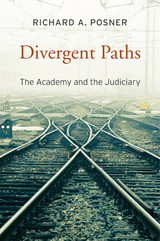 Divergent Paths: The Academy and the Judiciary
Richard A. Posner
Harvard University Press, 2016 Judges and legal scholars talk past one another, if they have any conversation at all. Academics couch their criticisms of judicial decisions in theoretical terms, which leads many judges—at the risk of intellectual stagnation—to dismiss most academic discourse as opaque and divorced from reality. In Divergent Paths, Richard Posner turns his attention to this widening gap within the legal profession, reflecting on its causes and consequences and asking what can be done to close or at least narrow it.
The shortcomings of academic legal analysis are real, but they cannot disguise the fact that the modern judiciary has several serious deficiencies that academic research and teaching could help to solve or alleviate. In U.S. federal courts, which is the focus of Posner’s analysis of the judicial path, judges confront ever more difficult cases, many involving complex and arcane scientific and technological distinctions, yet continue to be wedded to legal traditions sometimes centuries old. Posner asks how legal education can be made less theory-driven and more compatible with the present and future demands of judging and lawyering.
Law schools, he points out, have great potential to promote much-needed improvements in the judiciary, but doing so will require significant changes in curriculum, hiring policy, and methods of educating future judges. If law schools start to focus more on practical problems facing the American legal system rather than on debating its theoretical failures, the gulf separating the academy and the judiciary will narrow.
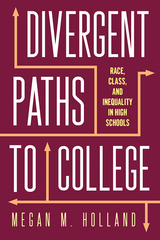 Divergent Paths to College: Race, Class, and Inequality in High Schools
Holland, Megan M
Rutgers University Press, 2019 In Divergent Paths to College, Megan M. Holland examines how high schools structure different pathways that lead students to very different college destinations based on race and class. She finds that racial and class inequalities are reproduced through unequal access to key sources of information, even among students in the same school and even in schools with well-established college-going cultures. As the college application process becomes increasingly complex and high-stakes, social capital, or relationships with people who can provide information as well as support and guidance, becomes much more critical. Although much has been written about the college-bound experience, we know less about the role that social capital plays, and specifically how high schools can serve as organizational brokers of social ties. The relationships that high schools cultivate between students and higher education institutions by inviting college admissions officers into their schools to market to students, is a particularly critical, yet unexplored source of college information.
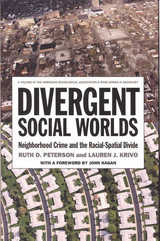 Divergent Social Worlds: Neighborhood Crime and the Racial-Spatial Divide
Ruth D. Peterson
Russell Sage Foundation, 2010 More than half a century after the first Jim Crow laws were dismantled, the majority of urban neighborhoods in the United States remain segregated by race. The degree of social and economic advantage or disadvantage that each community experiences—particularly its crime rate—is most often a reflection of which group is in the majority. As Ruth Peterson and Lauren Krivo note in Divergent Social Worlds, "Race, place, and crime are still inextricably linked in the minds of the public." This book broadens the scope of single-city, black/white studies by using national data to compare local crime patterns in five racially distinct types of neighborhoods. Peterson and Krivo meticulously demonstrate how residential segregation creates and maintains inequality in neighborhood crime rates. Based on the authors' groundbreaking National Neighborhood Crime Study (NNCS), Divergent Social Worlds provides a more complete picture of the social conditions underlying neighborhood crime patterns than has ever before been drawn. The study includes economic, social, and local investment data for nearly nine thousand neighborhoods in eighty-seven cities, and the findings reveal a pattern across neighborhoods of racialized separation among unequal groups. Residential segregation reproduces existing privilege or disadvantage in neighborhoods—such as adequate or inadequate schools, political representation, and local business—increasing the potential for crime and instability in impoverished non-white areas yet providing few opportunities for residents to improve conditions or leave. And the numbers bear this out. Among urban residents, more than two-thirds of all whites, half of all African Americans, and one-third of Latinos live in segregated local neighborhoods. More than 90 percent of white neighborhoods have low poverty, but this is only true for one quarter of black, Latino, and minority areas. Of the five types of neighborhoods studied, African American communities experience violent crime on average at a rate five times that of their white counterparts, with violence rates for Latino, minority, and integrated neighborhoods falling between the two extremes. Divergent Social Worlds lays to rest the popular misconception that persistently high crime rates in impoverished, non-white neighborhoods are merely the result of individual pathologies or, worse, inherent group criminality. Yet Peterson and Krivo also show that the reality of crime inequality in urban neighborhoods is no less alarming. Separate, the book emphasizes, is inherently unequal. Divergent Social Worlds lays the groundwork for closing the gap—and for next steps among organizers, policymakers, and future researchers. A Volume in the American Sociological Association's Rose Series in Sociology
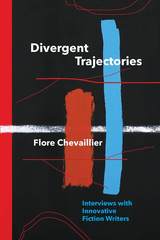 Divergent Trajectories: Interviews with Innovative Fiction Writers
Flore Chevaillier
Ohio State University Press, 2017 Divergent Trajectories: Interviews with Innovative Fiction Writers by Flore Chevaillier examines the aesthetic, political, philosophical, and cultural dimensions of contemporary fiction through a series of interviews with some of today’s most cutting-edge fiction writers. New relationships between literature, media culture, and hypertexts have added to modes of experimentation and reshaped the boundaries between literary and pop culture media; visual arts and literature; critical theory and fiction writing; and print and digital texts. This collection of interviews undertakes such experimentations through an intimate glance, allowing readers to learn about each writer’s journey, as well as their aesthetic, political, and personal choices.
Including interviews with R. M. Berry, Debra Di Blasi, Percival Everett, Thalia Field, Renee Gladman, Bhanu Kapil, Lance Olsen, Michael Martone, Carole Maso, Joseph McElroy, Christina Milletti, Alan Singer, and Steve Tomasula, Divergent Trajectories provides a framework that allows innovative authors to discuss in some depth their works, backgrounds, formal research, thematic preferences, genre treatment, aesthetic philosophies, dominant linguistic expressions, cultural trends, and the literary canon. Through an examination of these concepts, writers ask what “traditional” and “innovative” writing is, and most of all, what fiction is today.
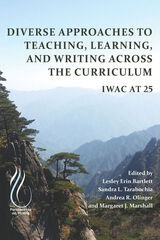 Diverse Approaches to Teaching, Learning, and Writing Across the Curriculum: IWAC at 25
Lesley Erin Bartlett
University Press of Colorado, 2020 Developed from presentations at the 2018 International Writing Across the Curriculum conference, this collection documents a key moment in the history of WAC, foregrounding connection and diversity as keys to the sustainability of the WAC movement in the face of new and long-standing challenges. Contributors reflect on the history and ongoing evolution of WAC, honoring grassroots efforts while establishing a more unified structure of collaborative leadership and mentorship. The chapters in this collection offer a rich variety of practices, pedagogies, mindsets, and methodologies for readers who are invested in using writing in a wide range of institutional and disciplinary contexts. Boldly engaging such pressing topics as translingualism, anti-racism, emotional labor, and learning analytics, the eighteen chapters collected here testify to WAC's durability, persistence, and resilience in an ever-changing educational landscape.
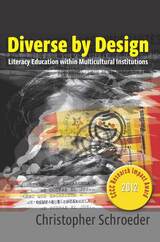 Diverse by Design: Literacy Education within Multicultural Institutions
Christopher Schroeder
Utah State University Press, 2011 Diversity, despite what we say, disturbs us. In the U.S., we debate linguistic rights, the need for an official language, and educational policies for language minority students. On the one hand, we believe in the rights of individuals, including (at least in the academy) the right to one’s own language. On the other hand, we sponsor a single common language, monolingual and standard, for full participation and communication in both the academy and in U.S. society. In Diverse by Design, Christopher Schroeder reports on an institutional case study conducted at an officially designated Hispanic-Serving Institution. He gives particular attention to a cohort of Latino students in a special admissions program, to document their experience of a program designed to help students surmount the “obstacle” that ethnolinguistic diversity is perceived to be.
Ultimately, Schroeder argues for reframing multilingualism and multiculturalism, not as obstacles, but as intellectual resources to exploit. While diversity might disturb us, we can overcome its challenges by a more expansive sense of social identity. In an increasingly globalized society, literacy ideologies are ever more critical to educational equity, and to human lives.
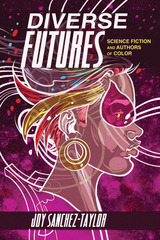 Diverse Futures: Science Fiction and Authors of Color
Joy Sanchez-Taylor
Ohio State University Press, 2021 Winner, 2021 Northeast Popular Culture Association's Peter C. Rollins Book PrizeDiverse Futures: Science Fiction and Authors of Color examines the contributions of late-twentieth- and twenty-first-century US and Canadian science fiction authors of color. By looking at the intersections among science fiction authors of multiple races and ethnicities, Joy Sanchez-Taylor seeks to explain how these authors of color are juxtaposing tropes of science fiction with specific cultural references to comment on issues of inclusiveness in Eurowestern cultures. The central argument of this work is that these authors are challenging science fiction’s history of Eurocentric representation through the depiction of communities of color in fantastic or futuristic settings, specifically by using cognitive estrangement and the inclusion of non-Eurowestern cultural beliefs and practices to comment on the alienation of racially dominated groups. By exploring science fiction tropes—such as first contact, genetic modification, post-apocalyptic landscapes, and advanced technologies in the works of Octavia E. Butler, Ted Chiang, Sabrina Vourvoulias, and many others—Sanchez-Taylor demonstrates how authors of various races and ethnicities write science fiction that pays homage to the genre while also creating a more diverse and inclusive portrait of the future.
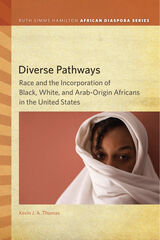 Diverse Pathways: Race and the Incorporation of Black, White, and Arab-Origin Africans in the United States
Kevin J. A. Thomas
Michigan State University Press, 2014 Africans are among the fastest-growing immigrant groups in the United States. Although they are racially and ethnically diverse, few studies have examined how these differences affect their patterns of incorporation into society. This book is the first to highlight the role of race and ethnicity, Arab ethnicity in particular, in shaping the experiences of African immigrants. It demonstrates that American conceptions of race result in significant inequalities in the ways in which African immigrants are socially integrated. Thomas argues that suggestions that Black Africans are model-minorities who have overcome the barriers of race are misleading, showing that Black and Arab-ethnicity Africans systematically experience less favorable socioeconomic outcomes than their White African counterparts. Overall, the book makes three critical arguments. First, historical and contemporary constructions of race have important implications for understanding the dynamics of African immigration and settlement in the United States. Second, there are significant racial inequalities in the social and economic incorporation of contemporary African immigrants. Finally, Arab ethnicity has additional implications for understanding intra-racial disparities in incorporation among contemporary African immigrants. In general, these arguments are foundational for understanding the diversity of African immigrant experiences.
 Diverse Voices in Modern US Moral Theology
Charles E. Curran
Georgetown University Press, 2023 In Charles E. Curran’s latest book, Diverse Voices in Modern US Moral Theology, he presents the diverse voices of US Catholic moral theologians from the mid-twentieth century to the present. The book discusses eleven key individuals in the development and evolution of moral theology as well as the New Wine, New Wineskins movement. This diversity, which differs from the monolithic understanding of moral theology that prevailed until recently, comes from the diverse historical circumstances or Sitz im Leben of the authors. Each of these theologians developed her or his approach in light of these circumstances and in response to shifts in the three audiences of moral theology—the Church, the academy, and the broader society. By exploring this diversity, Curran recognizes the deep divisions that exist within Catholic moral theology between the so-called “liberal” and “conservative” approaches and acknowledges the need for greater dialogue between them, providing a deeper understanding of the methods and approaches of these significant figures. This new book from a major figure in the field will be an important resource for students and scholars of US Catholic moral theology and for anyone seeking to understand the current state of moral theology in America today.
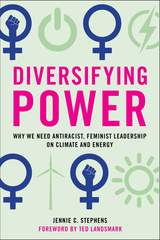 Diversifying Power: Why We Need Antiracist, Feminist Leadership on Climate and Energy
Jennie C. Stephens, foreword by Ted Landsmark
Island Press, 2020 The climate crisis is a crisis of leadership. For too long too many leaders have prioritized corporate profits over the public good, exacerbating climate vulnerabilities while reinforcing economic and racial injustice. Transformation to a just, sustainable renewable-based society requires leaders who connect social justice to climate and energy.
During the Trump era, connections among white supremacy; environmental destruction; and fossil fuel dependence have become more conspicuous. Many of the same leadership deficiencies that shaped the inadequate response in the United States to the coronavirus pandemic have also thwarted the US response to the climate crisis. The inadequate and ineffective framing of climate change as a narrow, isolated, discrete problem to be “solved” by technical solutions is failing. The dominance of technocratic, white, male perspectives on climate and energy has inhibited investments in social change and social innovations. With new leadership and diverse voices, we can strengthen climate resilience, reduce racial and economic inequities, and promote social justice.
In Diversifying Power, energy expert Jennie Stephens argues that the key to effectively addressing the climate crisis is diversifying leadership so that antiracist, feminist priorities are central. All politics is now climate politics, so all policies, from housing to health, now have to integrate climate resilience and renewable energy.
Stephens takes a closer look at climate and energy leadership related to job creation and economic justice, health and nutrition, housing and transportation. She looks at why we need to resist by investing in bold diverse leadership to curb the “the polluter elite.” We need to reclaim and restructure climate and energy systems so policies are explicitly linked to social, economic, and racial justice.
Inspirational stories of diverse leaders who integrate antiracist, feminist values to build momentum for structural transformative change are woven throughout the book, along with Stephens’ experience as a woman working on climate and energy. The shift from a divided, unequal, extractive, and oppressive society to a just, sustainable, regenerative, and healthy future has already begun.
But structural change needs more bold and ambitious leaders at all levels, like Alexandria Ocasio-Cortez with the Green New Deal, or the Secwepemc women of the Tiny House Warriors resisting the Trans Mountain pipeline.
Diversifying Power offers hope and optimism. Stephens shows how the biggest challenges facing society are linked and anyone can get involved to leverage the power of collective action. By highlighting the creative individuals and organizations making change happen, she provides inspiration and encourages transformative action on climate and energy justice.
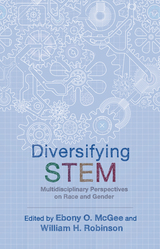 Diversifying STEM: Multidisciplinary Perspectives on Race and Gender
Ebony O. McGee
Rutgers University Press, 2020 2020 Choice Outstanding Academic Title
Research frequently neglects the important ways that race and gender intersect within the complex structural dynamics of STEM. Diversifying STEM fills this void, bringing together a wide array of perspectives and the voices of a number of multidisciplinary scholars. The essays cover three main areas: the widely-held ideology that science and mathematics are “value-free,” which promotes pedagogies of colorblindness in the classroom as well as an avoidance of discussions around using mathematics and science to promote social justice; how male and female students of color experience the intersection of racist and sexist structures that lead to general underrepresentation and marginalization; and recognizing that although there are no quick fixes, there exists evidence-based research suggesting concrete ways of doing a better job of including individuals of color in STEM. As a whole this volume will allow practitioners, teachers, students, faculty, and professionals to reimagine STEM across a variety of educational paradigms, perspectives, and disciplines, which is critical in finding solutions that broaden the participation of historically underrepresented groups within the STEM disciplines.
Diversity and Detective Fiction
Kathleen Gregory Klein
University of Wisconsin Press, 1999 The first collection to articulate the pedagogical strategies of using detective fiction to investigate the politics of difference. The volume examines the many ways in which diversity is posited by contemporary writers exploring distinctive American subcultures. The distinguishing characteristic of the book is its mix of essays focusing on teaching cultural diversity in the classroom and illustrating diversity through fiction to the general reader.
Among the issues addressed are definitions of diversity; what constitutes ethnicity or race, especially in terms of multiple subjectivities; how race, gender, and ethnicity are culturally constructed; and what part is played by identity politics.
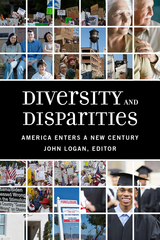 Diversity and Disparities: America Enters a New Century
John Logan is professor of sociology and director of the Research Initiative on Spatial Structures in the Social Sciences at Brown University and editor of Diversity and Disparities: America Enters a New Century.
Russell Sage Foundation, 2014 The United States is more diverse than ever before. Increased immigration has added to a vibrant cultural fabric, and women and minorities have made significant strides in overcoming overt discrimination. At the same time, economic inequality has increased significantly in recent decades, and the Great Recession substantially weakened the economic standing not only of the poor but also of the middle class. Diversity and Disparities, edited by sociologist John Logan, assembles impressive new studies that interpret the social and economic changes in the United States over the last decade. The authors, leading social scientists from many disciplines, analyze changes in the labor market, family structure, immigration, and race. They find that while America has grown more diverse, the opportunities available to disadvantaged groups have become more unequal. Drawing on detailed data from the decennial census, the American Community Survey, and other sources, the authors chart the growing diversity and the deepening disparities among different groups in the United States Harry J. Holzer and Marek Hlavac document that although the economy always rises and falls over the business cycle, the Great Recession of 2007–2009 was a catastrophic event that saw record levels of unemployment, especially among less-educated workers, young people, and minorities. Emily Rosenbaum shows how the Great Recession amplified disparities in access to home ownership, and demonstrates that young adults, especially African Americans, are falling behind previous cohorts not only in home ownership and wealth but even in starting their own families and households. Sean F. Reardon and Kendra Bischoff explore the rise of class segregation as higher-income Americans are moving away from others into separate and privileged neighborhoods and communities. Immigration has also seen class polarization, with an increase in both highly skilled workers and undocumented immigrants. As Frank D. Bean and his colleagues show, the lack of a path to legal status for undocumented immigrants inhibits the educational and economic opportunities for their children and grandchildren. Barrett Lee and colleagues demonstrate that the nation and most cities and towns are becoming more diverse by race and ethnicity. However, while black-white segregation is slowly falling, Hispanics and Asians remain as segregated today as they were in 1980. Diversity and Disparities raises concerns about the extent of socioeconomic immobility in the United States today. This volume provides valuable information for policymakers, journalists, and researchers seeking to understand the current state of the nation.
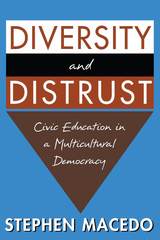 Diversity and Distrust: Civic Education in a Multicultural Democracy
Stephen Macedo
Harvard University Press, 2003 What should the aims of education policy be in the United States and other culturally diverse democracies? Should the foremost aim be to allow the flourishing of social and religious diversity? Or is it more important to foster shared political values and civic virtues?
Stephen Macedo believes that diversity should usually, but not always, be highly valued. We must remember, he insists, that many forms of social and religious diversity are at odds with basic commitments to liberty, equality, and civic flourishing. Liberalism has an important but neglected civic dimension, he argues, and liberal democrats must take care to promote not only well-ordered institutions but also well-ordered citizens. Macedo shows that this responsibility is incompatible with a neutral or hands-off stance toward diversity in general or toward the education of children in particular. Extending the ideas of John Rawls, he defends a "civic liberalism" that supports the legitimacy of reasonable efforts to inculcate shared political virtues while leaving many larger questions of meaning and value to private communities.
Macedo's tough-minded liberal agenda for civic education offers a fundamental challenge to free market libertarians, the religious right, parental rights activists, postmodernists, and many of those who call themselves multiculturalists. This book will become an important resource in the debate about the reform of public education, and in the culture war over the future of liberalism.
 Diversity and Super-Diversity: Sociocultural Linguistic Perspectives
Anna De Fina, Didem Ikizoglu, and Jeremy Wegner, Editors
Georgetown University Press, 2017 Sociocultural linguistics has long conceived of languages as well-bounded, separate codes. But the increasing diversity of languages encountered by most people in their daily lives challenges this conception. Because globalization has accelerated population flows, cities are now sites of encounter for groups that are highly diverse in terms of origins, cultural practices, and languages. Further, new media technologies invent communicative genres, foster hybrid semiotic practices, and spread diversity as they intensify contact and exchange between peoples who often are spatially removed and culturally different from each other. Diversity—even super-diversity—is now the norm. In response, recent scholarship complicates traditional associations between languages and social identities, emphasizing the connectedness of communicative events and practices at different scales and the embedding of languages within new physical landscapes and mediated practices. This volume takes stock of the increasing diversity of linguistic phenomena and faces the theoretical-methodological challenges that accounting for such phenomena pose to socio-cultural linguistics. This book stages the debate on super-diversity that will be sure to interest societal linguists and serves as an invaluable reference for academic libraries specializing in the linguistics field.
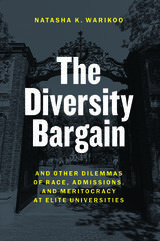 The Diversity Bargain: And Other Dilemmas of Race, Admissions, and Meritocracy at Elite Universities
Natasha Warikoo
University of Chicago Press, 2016 We’ve heard plenty from politicians and experts on affirmative action and higher education, about how universities should intervene—if at all—to ensure a diverse but deserving student population. But what about those for whom these issues matter the most? In this book, Natasha K. Warikoo deeply explores how students themselves think about merit and race at a uniquely pivotal moment: after they have just won the most competitive game of their lives and gained admittance to one of the world’s top universities.
What Warikoo uncovers—talking with both white students and students of color at Harvard, Brown, and Oxford—is absolutely illuminating; and some of it is positively shocking. As she shows, many elite white students understand the value of diversity abstractly, but they ignore the real problems that racial inequality causes and that diversity programs are meant to solve. They stand in fear of being labeled a racist, but they are quick to call foul should a diversity program appear at all to hamper their own chances for advancement. The most troubling result of this ambivalence is what she calls the “diversity bargain,” in which white students reluctantly agree with affirmative action as long as it benefits them by providing a diverse learning environment—racial diversity, in this way, is a commodity, a selling point on a brochure. And as Warikoo shows, universities play a big part in creating these situations. The way they talk about race on campus and the kinds of diversity programs they offer have a huge impact on student attitudes, shaping them either toward ambivalence or, in better cases, toward more productive and considerate understandings of racial difference.
Ultimately, this book demonstrates just how slippery the notions of race, merit, and privilege can be. In doing so, it asks important questions not just about college admissions but what the elite students who have succeeded at it—who will be the world’s future leaders—will do with the social inequalities of the wider world.
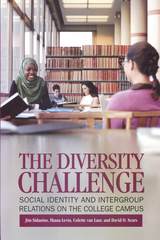 The Diversity Challenge: Social Identity and Intergroup Relations on the College Campus
James Sidanius
Russell Sage Foundation, 2008 College campuses provide ideal natural settings for studying diversity: they allow us to see what happens when students of all different backgrounds sit side by side in classrooms, live together in residence halls, and interact in one social space. By opening a window onto the experiences and evolving identities of individuals in these exceptionally diverse environments, we can gain a better understanding of the possibilities and challenges we face as a multicultural nation. The Diversity Challenge—the largest and most comprehensive study to date on college campus diversity—synthesizes over five years' worth of research by an interdisciplinary team of experts to explore how a highly diverse environment and policies that promote cultural diversity affect social relations, identity formation, and a variety of racial and political attitudes. The result is a fascinating case study of the ways in which individuals grow and groups interact in a world where ethnic and racial difference is the norm. The authors of The Diversity Challenge followed 2,000 UCLA students for five years in order to see how diversity affects identities, attitudes, and group conflicts over time. They found that racial prejudice generally decreased with exposure to the ethnically diverse college environment. Students who were randomly assigned to roommates of a different ethnicity developed more favorable attitudes toward students of different backgrounds, and the same associations held for friendship and dating patterns. By contrast, students who interacted mainly with others of similar backgrounds were more likely to exhibit bias toward others and perceive discrimination against their group. Likewise, the authors found that involvement in ethnically segregated student organizations sharpened perceptions of discrimination and aggravated conflict between groups. The Diversity Challenge also reports compelling new evidence that a strong ethnic identity can coexist with a larger community identity: students from all ethnic groups were equally likely to identify themselves as a part of the broader UCLA community. Overall, the authors note that on many measures, the racial and political attitudes of the students were remarkably consistent throughout the five year study. But the transformations that did take place provide us with a wealth of information on how diversity affects individuals, groups, and the cohesion of a community. Theoretically informed and empirically grounded, The Diversity Challenge is an illuminating and provocative portrait of one of the most diverse college campuses in the nation. The story of multicultural UCLA has significant and far-reaching implications for our nation, as we face similar challenges—and opportunities—on a much larger scale.
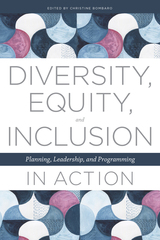 Diversity, Equity, and Inclusion in Action: Planning, Leadership, and Programming
Christine Bombaro
American Library Association, 2020 All too often, in a hurried attempt to “catch up,” diversity training can create division among staff or place undue burdens on a handful of employees. Instead, academic libraries need approaches to diversity, equity, and inclusion (DEI) that position these priorities as ongoing institutional and professional goals. This book’s model programs will help academic libraries do exactly that, sharing a variety of initiatives that possess clear goals, demonstrable outcomes, and reproducible strategies. Librarians, administrators, and directors will all benefit from the programs detailed inside, which include such topics as - a university library’s community of practice for interactions and learning around DEI;
- cultural competency training to create more welcoming instruction spaces;
- student workshops on literature searches that mitigate bias;
- overcoming the historic tendency to marginalize LGBTQ+ representation in archives;
- a curriculum and design workshop that moved from discussing social values to embedding them in actions;
- the founding of a library-led LGBT club for students at a rural community college;
- a liberal arts college’s retention-boosting program for first-generation students;
- tailoring a collection and library services to the unique needs of student veterans; and
- a framework for moving from diversity to equity and inclusion, toward a goal of social justice.
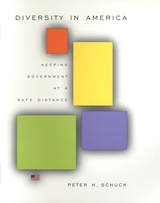 Diversity in America: Keeping Government at a Safe Distance
Peter H. Schuck
Harvard University Press, 2003 America is the first society in history to make ethno-racial diversity an affirmative social ideal rather than viewing it as a fearful menace, as almost all other societies still do. Since the 1960s, America has pursued this ideal in many forms—not only to remedy past discrimination against minorities but also to increase diversity for its own sake.
It is high time for an accounting. How diverse are we now and what can we expect in the future? Why do we, unlike the rest of the world, think that diversity is desirable and that more of it is better? What risks does diversity pose? What are the roles of law, politics, and informal social controls in promoting diversity? How can we manage diversity better?
In this magisterial book, Peter H. Schuck explains how Americans have understood diversity, how we came to embrace it, how the government regulates it now, and how we can do better. He mobilizes a wealth of conceptual, historical, legal, political, and sociological analysis to argue that diversity is best managed not by the government but by families, ethnic groups, religious communities, employers, voluntary organizations, and other civil society institutions. Analyzing some of the most controversial policy arenas where politics and diversity intersect—immigration, multiculturalism, language, affirmative action, residential neighborhoods, religious practices, faith-based social services, and school choice—Schuck reveals the conflicts, trade-offs, and ironies entailed by our commitment to the diversity ideal. He concludes with recommendations to help us manage the challenge of diversity in the future.
Diversity in Family Life: Gender, Relationships and Social Change
Elisabetta Ruspini
Bristol University Press, 2014 As the variety and number of nontraditional families grow, so does the need for new models of family and parenthood. Diversity in Family Life discusses the relationship between shifting gender identities and the processes of family formation, examining non-traditional family structures, including asexual couples, child-free couples, living-apart-together couples, single parents, and homosexual and transsexual parents. Calling for bold reformulations, it argues that it is possible to live, love, and form a family in an astounding variety of ways.
Diversity in Language: Perspectives and Implications
Edited by Yoshiko Matsumoto, David Oshima, Orrin Robinson, and Peter Sells
CSLI, 2007 What does linguistic diversity tell us about the human mind? In the comprehensive volume Diversity in Language, a renowned team of contributorsassess the intricacies of linguistic variation. From historical perspectives on Indonesian to apparent time change in Smith Island verbs, from unplanned spoken Russian to argument structure in the Pacific Northwest, these essays render the full spectrum of linguistic possibility.
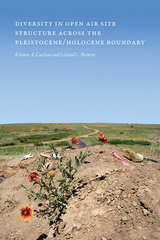 Diversity in Open-Air Site Structure across the Pleistocene/Holocene Boundary
Kristen A. Carlson
University Press of Colorado, 2021 Archaeological research on the late Pleistocene and early Holocene periods has tended to focus on rock shelters, caves, large game kills, and occasionally butchery sites. Diversity in Open-Air Site Structure across the Pleistocene/Holocene Boundary examines a diverse range of open-air sites—bounded both naturally and culturally—in Siberia and Germany and throughout North America.
Open-air sites are difficult for researchers to locate and, because of depositional processes, often more difficult to interpret; they contain many superimposed events but often show evidence of only the most recent. Working to overcome the limitations of data and poor preservation, using decades of prior research and new analytical tools, and diverging from a one-size-fits-all mode of interpretation, the contributors to this volume offer fresh insight into the formation and taphonomy of open-air sites.
Contributors: Douglas B. Bamforth, Ian Buvit, Brian J. Carter, Robin Cordero, Robert Dello-Russo, George C. Frison, Kelly E. Graf, Bruce B. Huckell, Michael A. Jochim, Joshua D. Kapp, Robert L. Kelly, Aleksander V. Konstantinov, Banks Leonard, Madeline E. Mackie, Christopher W. Merriman, Matthew J. O’Brien, Spencer Pelton, Neil N. Puckett, Beth Shapiro, Todd A. Surovell, Karisa Terry, Steve Teteak, Robert Yohe
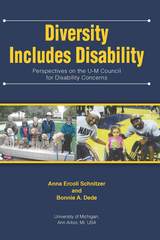 Diversity Includes Disability: Perspectives on the U-M Council for Disability Concerns
Anna Ercoli Schnitzer and Bonnie A. Dede
Michigan Publishing, 2018 The U-M Council for Disability Concerns, established by then-UM President Harold Shapiro in 1983, has never had an official institutional history. In this Maize Book, the authors present perspectives on the Council from its inception to date. Rather than merely listing dates and facts, the work focuses on selected representative dynamic individuals who provide vibrant descriptions of different aspects of the Council. The intent of including these personal narratives is to portray the inspirational culture and atmosphere that have imbued and grown the Council throughout its existence.
The Council has changed and enlarged its membership from its origins as a small, low-key group consisting primarily of faculty and staff engaged in the disability arena, to an organization that encompasses a diverse, cross-campus and local community membership, with an extensive mailing list, as well. The achievements of the Council over the years and the goals that it envisions for the future, we hope, will serve as a template for other institutions.
Diversity Leadership in the U.S. Department of Defense: Analysis of the Key Roles, Responsibilities, and Attributes of Diversity Leaders
Maria C. Lytell
RAND Corporation, 2016 This study identifies the knowledge, skills, abilities, and other personal characteristics needed in individuals who will be responsible for implementing strategic diversity plans in the Department of Defense (DoD). The authors interviewed more than 60 diversity leaders in industry, the public sector (including DoD), and academia and reviewed relevant scientific literature, education programs, and advertised job requirements.
 The Diversity of Life
Edward O. Wilson
Harvard University Press, 1992 View a collection of videos on Professor Wilson entitled "On the Relation of Science and the Humanities"
"In the Amazon Basin the greatest violence sometimes begins as a flicker of light beyond the horizon. There in the perfect bowl of the night sky, untouched by light from any human source, a thunderstorm sends its premonitory signal and begins a slow journey to the observer, who thinks: the world is about to change." Watching from the edge of the Brazilian rain forest, witness to the sort of violence nature visits upon its creatures, Edward O. Wilson reflects on the crucible of evolution, and so begins his remarkable account of how the living world became diverse and how humans are destroying that diversity.
Wilson, internationally regarded as the dean of biodiversity studies, conducts us on a tour through time, traces the processes that create new species in bursts of adaptive radiation, and points out the cataclysmic events that have disrupted evolution and diminished global diversity over the past 600 million years. The five enormous natural blows to the planet (such as meteorite strikes and climatic changes) required 10 to 100 million years of evolutionary repair. The sixth great spasm of extinction on earth--caused this time entirely by humans--may be the one that breaks the crucible of life. Wilson identifies this crisis in countless ecosystems around the globe: coral reefs, grasslands, rain forests, and other natural habitats. Drawing on a variety of examples such as the decline of bird populations in the United States, the extinction of many species of freshwater fish in Africa and Asia, and the rapid disappearance of flora and fauna as the rain forests are cut down, he poignantly describes the death throes of the living world's diversity--projected to decline as much as 20 percent by the year 2020.
All evidence marshaled here resonates through Wilson's tightly reasoned call for a spirit of stewardship over the world's biological wealth. He makes a plea for specific actions that will enhance rather than diminish not just diversity but the quality of life on earth. Cutting through the tangle of environmental issues that often obscure the real concern, Wilson maintains that the era of confrontation between forces for the preservation of nature and those for economic development is over; he convincingly drives home the point that both aims can, and must, be integrated. Unparalleled in its range and depth, Wilson's masterwork is essential reading for those who care about preserving the world biological variety and ensuring our planet's health.
 The Diversity of Life: With a New Preface
Edward O. Wilson
Harvard University Press, 2010 “In the Amazon Basin the greatest violence sometimes begins as a flicker of light beyond the horizon. There in the perfect bowl of the night sky, untouched by light from any human source, a thunderstorm sends its premonitory signal and begins a slow journey to the observer, who thinks: the world is about to change.” Watching from the edge of the Brazilian rain forest, witness to the sort of violence nature visits upon its creatures, Edward O. Wilson reflects on the crucible of evolution, and so begins his remarkable account of how the living world became diverse and how humans are destroying that diversity.
Wilson, internationally regarded as the dean of biodiversity studies, conducts us on a tour through time, traces the processes that create new species in bursts of adaptive radiation, and points out the cataclysmic events that have disrupted evolution and diminished global diversity over the past 600 million years. The five enormous natural blows to the planet (such as meteorite strikes and climatic changes) required 10 to 100 million years of evolutionary repair. The sixth great spasm of extinction on earth—caused this time entirely by humans—may be the one that breaks the crucible of life. Wilson identifies this crisis in countless ecosystems around the globe: coral reefs, grasslands, rain forests, and other natural habitats. Drawing on a variety of examples such as the decline of bird populations in the United States, the extinction of many species of freshwater fish in Africa and Asia, and the rapid disappearance of flora and fauna as the rain forests are cut down, he poignantly describes the death throes of the living world’s diversity—projected to decline as much as 20 percent by the year 2020.
All evidence marshaled here resonates through Wilson’s tightly reasoned call for a spirit of stewardship over the world’s biological wealth. He makes a plea for specific actions that will enhance rather than diminish not just diversity but the quality of life on earth. Cutting through the tangle of environmental issues that often obscure the real concern, Wilson maintains that the era of confrontation between forces for the preservation of nature and those for economic development is over; he convincingly drives home the point that both aims can, and must, be integrated. Unparalleled in its range and depth, Wilson’s masterwork is essential reading for those who care about preserving the world biological variety and ensuring our planet’s health.
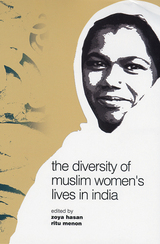 The Diversity of Muslim Women's Lives in India
Hasan, Zoya
Rutgers University Press, 2005 To what extent does Muslim personal law, such as polygamy and triple talaq (the allowance for men to instantly divorce their wives), affect the lives of Muslim women? Are these factors more or less important than other lifestyle issues such as socioeconomic status? Over the past several decades, the most influential approaches to the study of Muslim women and nearly all the significant campaigns for their rights have focused on religious practices and the urgency to reform Islamic laws. Such focused views, however, give the false sense that religion is the main, if not the only, aspect of Muslim women’s lives.
In order to broaden the lens through which this demographic is typically seen, a group of researchers in India carried out a large and unprecedented study of one of the most disadvantaged sections of Indian society. The editors of The Diversity of Muslim Women’s Lives in India bring together this research in a comprehensive collection of informative and revealing case studies. The essays examine Muslim identity, not only in terms of religious doctrine, but as a heterogeneous set of characteristics produced at the intersections of class, religion, and gender.
Addressing issues of law, politics, education, race, and other neglected secular subjects, this volume is essential reading for policy-makers, social activists, and scholars.
The Diversity of Religions: A Christian Perspective
J. A. DiNoia, O.P.
Catholic University of America Press, 1992 DiNoia approaches the debate in the theology of religions with a fresh, lucid, critical and informed mind. . . . This book is timely, provocative and explores new territories and recasts old debates in a fresh and intelligent manner. It will appeal to philosophers, theologians, indologists and those concerned with the meeting of Christianity and the world religions.--Gavin D'Costa, University of Bristol
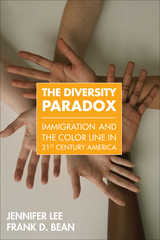 The Diversity Paradox: Immigration and the Color Line in Twenty-First Century America
Jennifer Lee
Russell Sage Foundation, 2010 African Americans grappled with Jim Crow segregation until it was legally overturned in the 1960s. In subsequent decades, the country witnessed a new wave of immigration from Asia and Latin America—forever changing the face of American society and making it more racially diverse than ever before. In The Diversity Paradox, authors Jennifer Lee and Frank Bean take these two poles of American collective identity—the legacy of slavery and immigration—and ask if today's immigrants are destined to become racialized minorities akin to African Americans or if their incorporation into U.S. society will more closely resemble that of their European predecessors. They also tackle the vexing question of whether America's new racial diversity is helping to erode the tenacious black/white color line. The Diversity Paradox uses population-based analyses and in-depth interviews to examine patterns of intermarriage and multiracial identification among Asians, Latinos, and African Americans. Lee and Bean analyze where the color line—and the economic and social advantage it demarcates—is drawn today and on what side these new arrivals fall. They show that Asians and Latinos with mixed ancestry are not constrained by strict racial categories. Racial status often shifts according to situation. Individuals can choose to identify along ethnic lines or as white, and their decisions are rarely questioned by outsiders or institutions. These groups also intermarry at higher rates, which is viewed as part of the process of becoming "American" and a form of upward social mobility. African Americans, in contrast, intermarry at significantly lower rates than Asians and Latinos. Further, multiracial blacks often choose not to identify as such and are typically perceived as being black only—underscoring the stigma attached to being African American and the entrenchment of the "one-drop" rule. Asians and Latinos are successfully disengaging their national origins from the concept of race—like European immigrants before them—and these patterns are most evident in racially diverse parts of the country. For the first time in 2000, the U.S. Census enabled multiracial Americans to identify themselves as belonging to more than one race. Eight years later, multiracial Barack Obama was elected as the 44th President of the United States. For many, these events give credibility to the claim that the death knell has been sounded for institutionalized racial exclusion. The Diversity Paradox is an extensive and eloquent examination of how contemporary immigration and the country's new diversity are redefining the boundaries of race. The book also lays bare the powerful reality that as the old black/white color line fades a new one may well be emerging—with many African Americans still on the other side.
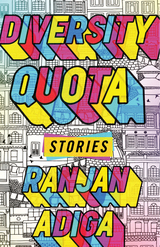 Diversity Quota
Ranjan Adiga
University of Wisconsin Press, 2024 Complicating the idea of a single immigrant narrative, the stories in Diversity Quota move from the US to Nepal and back again, showing how displacement can lead to suffering or hope—sometimes simultaneously. In Kathmandu, Nepalis are frequently caught up in battles between tradition and progress; in the United States, their cultural dislocation is often emblematic of the larger predicaments immigrants face. Ranjan Adiga navigates these larger problems of racism, inequity, and gender roles, while simultaneously centering the humanity of his characters, flaws and all.
In these stories, the lines between “winners” and “losers” in a rapidly globalizing world become frayed and warped. A Nepali migrant’s worst fears materialize in “Leech.” A couple in “Denver” tries to acclimate to a new social class. A middle-aged man is attracted to his barber in “Haircut and Massage.” A Nepali professor is captivated by a white American student in “The Diversity Committee.” In often unexpected ways, Adiga captures moments of survival amid worlds colored by precarity.
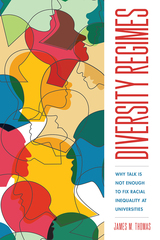 Diversity Regimes: Why Talk Is Not Enough to Fix Racial Inequality at Universities
James M. Thomas
Rutgers University Press, 2020 2021 Choice Outstanding Academic Title
As a major, public flagship university in the American South, so-called “Diversity University” has struggled to define its commitments to diversity and inclusion, and to put those commitments into practice. In Diversity Regimes, sociologist James M. Thomas draws on more than two years of ethnographic fieldwork at DU to illustrate the conflicts and contingencies between a core set of actors at DU over what diversity is and how it should be accomplished. Thomas’s analysis of this dynamic process uncovers what he calls “diversity regimes”: a complex combination of meanings, practices, and actions that work to institutionalize commitments to diversity, but in doing so obscure, entrench, and even magnify existing racial inequalities. Thomas’s concept of diversity regimes, and his focus on how they are organized and unfold in real time, provides new insights into the social organization of multicultural principles and practices.
Diversity Research and Policy: A Multidisciplinary Exploration
Edited by Steven Knotter, Rob de Lobel, Lena Tsipouri, and Vanja Stenius
Amsterdam University Press, 2011
This volume emerged from a collaborative Network of Excellence project funded by the European Commission. The Network, which comprises thirty-two institutes from Europe and beyond, integrates European research capabilities across disciplines and countries to provide the society and the state with tools for managing cultural diversity as a key element of sustainable development. The work presented here describes the emergence and increasing importance of diversity within academic research and practice and offers valuable insights on diversity management and policy implementation.
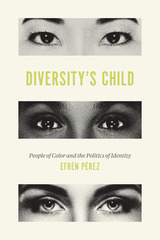 Diversity's Child: People of Color and the Politics of Identity
Efrén O. Pérez
University of Chicago Press, 2021 An incisive look at how America’s continued demographic explosion has spurred the development of a new identity as people of color.
For decades now, pundits and political scientists have been pointing to a major demographic change that’s underway in the United States. Demographers project that whites will become a minority of the US population and that minority groups will jointly comprise a majority before 2050.
Diversity’s Child appraises the political ramifications of this change. Efrén O. Pérez deftly argues that America’s changing demographics are forging a new identity for many as people of color—that unifies the political outlook of assorted minority groups. Drawing on opinion surveys of multiple minority groups, social science experiments with minority adults, content analyses of newspapers and congressional archives, and in-depth interviews with minority individuals, Pérez makes two key points. First, a person of color's identity does exist, and we can reliably measure it, as well as distinguish it from other identities that minorities hold. Second, across a wide swath of circumstances, identifying as a person of color profoundly shapes how minorities view themselves and their political system. Diversity’s Child is a vital and engaging look at America’s identity politics as well as at how people of color think about racial disparities and how politics can best solve them.
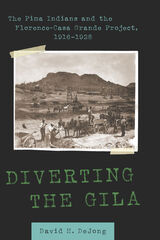 Diverting the Gila: The Pima Indians and the Florence-Casa Grande Project, 1916–1928
David H. DeJong
University of Arizona Press, 2021 In the late nineteenth and early twentieth centuries, Americans assumed the land and water resources of the West were endless. Water was as vital to newcomers to Arizona’s Florence and Casa Grande valleys as it had always been to the Pima Indians, who had been successfully growing crops along the Gila River for generations when the white settlers moved in.
Diverting the Gila explores the complex web of tension, distrust, and political maneuvering to divide and divert the scarce waters of the Gila River. Residents of Florence, Casa Grande, and the Pima Reservation fought for vital access to water rights. Into this political foray stepped Arizona’s freshman congressman Carl Hayden, who not only united the farming communities but also used Pima water deprivation to the advantage of Florence-Casa Grande and Upper Gila Valley growers. The result was the federal Florence-Casa Grande Project that, as legislated, was intended to benefit Pima growers on the Gila River Indian Reservation first and foremost. As was often the case in the West, well-heeled, nontribal political interests manipulated the laws at the expense of the Indigenous community.
Diverting the Gila is the sequel to David H. DeJong’s 2009 Stealing the Gila, and it continues to tell the story of the forerunner to the San Carlos Irrigation Project and the Gila River Indian Community’s struggle to regain access to their water.
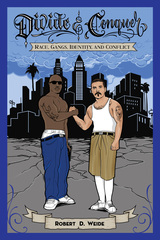 Divide & Conquer: Race, Gangs, Identity, and Conflict
Robert D. Weide
Temple University Press, 2022 Hyper-criminalization and the normalization of violence was an integral aspect of Robert Weide’s formative years growing up in Los Angeles in the 1980s and 1990s, where Sureño, Crip, and Blood gangs maintained a precarious coexistence, often punctuated by racialized gang violence. His insider status informs Divide & Conquer, which considers how the capitalist economy, the race concept, and nationalist ideology have made gang members the instruments of their own oppression, resulting in racialized sectarian conflicts spanning generations between African American and Latino gangs in Los Angeles and California’s prisons. While gang members may fail to appreciate the deeper historical and conceptual foundations of these conflicts, they rarely credit naked bigotry as the root cause. As Weide asserts, they divide themselves according to inherited groupist identities, thereby turning them against one another in protracted blood feuds across gang lines and racial lines. Weide explores both the historical foundations and the conceptual and cultural boundaries and biases that divide gang members across racial lines, detailing case studies of specific racialized gang conflicts between Sureño, Crip, and Blood gangs. Weide employs mixed-methods research, having spent nearly a decade on ethnographic fieldwork and conducted over one hundred formal interviews with gang members and gang enforcement officers concerning taboo subjects like prison and gang politics, and transracial gang membership. Divide & Conquer concludes with encouraging developments in recent years, as gang members themselves, on their own volition, have intervened to build solidarity and bring racialized gang conflicts between them to an end.
 Divide and Pacify: Strategic Social Policies and Political Protests in Post-Communist Democracies
Pieter Vanhuysse
Central European University Press, 2006 Despite dramatic increases in poverty, unemployment, and social inequalities, the Central and Eastern European transitions from communism to market democracy in the 1990s have been remarkably peaceful. This book proposes a new explanation for this unexpected political quiescence. It shows how reforming governments in Poland, Hungary and the Czech Republic have been able to prevent massive waves of strikes and protests by the strategic use of welfare state programs such as pensions and unemployment benefits. Divide and Pacify explains how social policies were used to prevent massive job losses with softening labor market policies, or to split up highly aggrieved groups of workers in precarious jobs by sending some of them onto unemployment benefits and many others onto early retirement and disability pensions. From a narrow economic viewpoint, these policies often appeared to be immensely costly or irresponsibly populist. Yet a more inclusive social-scientific perspective can shed new light on these seemingly irrational policies by pointing to deeper political motives and wider sociological consequences.
Divide, Provide and Rule: An Integrative History of Poverty Policy, Social Reform, and Social Policy in Hungary under the Habsburg Monarchy
Susan Zimmermann
Central European University Press, 2011 A concise and comprehensive account of the transformation of social policy from traditional poor relief towards social insurance systems in a European state before World War One. Brings together the analysis of older, mostly local welfare policies with the history of social policy developed by the state and operated at a national level. Explores also the interaction of various layers of and actors in welfare policy, i.e. of poor relief, social reform policies and the unfolding welfare state over time, including often neglected elements of these policies such as e.g. protective policies at the work place, housing policy, child protection, and prostitution policies.
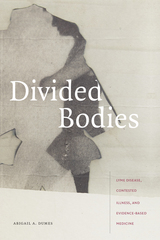 Divided Bodies: Lyme Disease, Contested Illness, and Evidence-Based Medicine
Abigail A. Dumes
Duke University Press, 2020 While many doctors claim that Lyme disease—a tick-borne bacterial infection—is easily diagnosed and treated, other doctors and the patients they care for argue that it can persist beyond standard antibiotic treatment in the form of chronic Lyme disease. In Divided Bodies, Abigail A. Dumes offers an ethnographic exploration of the Lyme disease controversy that sheds light on the relationship between contested illness and evidence-based medicine in the United States. Drawing on fieldwork among Lyme patients, doctors, and scientists, Dumes formulates the notion of divided bodies: she argues that contested illnesses are disorders characterized by the division of bodies of thought in which the patient's experience is often in conflict with how it is perceived. Dumes also shows how evidence-based medicine has paradoxically amplified differences in practice and opinion by providing a platform of legitimacy on which interested parties—patients, doctors, scientists, politicians—can make claims to medical truth.
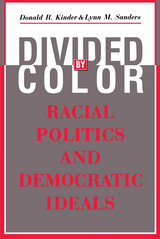 Divided by Color: Racial Politics and Democratic Ideals
Donald R. Kinder and Lynn M. Sanders
University of Chicago Press, 1996 When news of the O. J. Simpson verdict swept across the United States, a nation stood divided as blacks and whites reacted differently to the decision. Seldom has the racial division that permeates our society come so clearly and prominently into view.
Divided by Color supplies the reasons for this division, asserting that racial resentment continues to exist. Despite a parade of recent books optimistically touting the demise of racial hostility in the United States, the authors marshal a wealth of the most current and comprehensive evidence available to prove their case. Kinder and Sanders reveal that racial resentment remains the most powerful determinant of white opinion on such racially charged issues as welfare, affirmative action, school desegregation, and the plight of the inner city.
But more than a comprehensive description of American views on race, Divided by Color seeks to explain just why black and white Americans believe what they do. Kinder and Sanders analyze the critical factors that shape people's opinion on race-related issues, uncovering the relative importance of self-interest, group identity, ideological principles, as well as racial animosity. Finally, the authors explore how the racial divide has insinuated itself into the presidential election process and examine the role of political elites in framing racial issues for ordinary citizens.
The most accurate and thorough analysis of American attitudes toward race and racial policies undertaken in decades, Divided by Color is destined to become a landmark work on race in America.
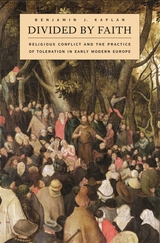 Divided by Faith: Religious Conflict and the Practice of Toleration in Early Modern Europe
Benjamin J. Kaplan
Harvard University Press, 2010 As religious violence flares around the world, we are confronted with an acute dilemma: Can people coexist in peace when their basic beliefs are irreconcilable? Benjamin Kaplan responds by taking us back to early modern Europe, when the issue of religious toleration was no less pressing than it is today.
Divided by Faith begins in the wake of the Protestant Reformation, when the unity of western Christendom was shattered, and takes us on a panoramic tour of Europe's religious landscape--and its deep fault lines--over the next three centuries. Kaplan's grand canvas reveals the patterns of conflict and toleration among Christians, Jews, and Muslims across the continent, from the British Isles to Poland. It lays bare the complex realities of day-to-day interactions and calls into question the received wisdom that toleration underwent an evolutionary rise as Europe grew more "enlightened." We are given vivid examples of the improvised arrangements that made peaceful coexistence possible, and shown how common folk contributed to toleration as significantly as did intellectuals and rulers. Bloodshed was prevented not by the high ideals of tolerance and individual rights upheld today, but by the pragmatism, charity, and social ties that continued to bind people divided by faith.
Divided by Faith is both history from the bottom up and a much-needed challenge to our belief in the triumph of reason over faith. This compelling story reveals that toleration has taken many guises in the past and suggests that it may well do the same in the future.
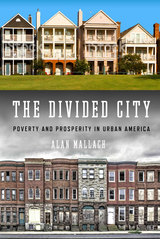 The Divided City: Poverty and Prosperity in Urban America
Alan Mallach
Island Press, 2018 Who really benefits from urban revival? Cities, from trendy coastal areas to the nation’s heartland, are seeing levels of growth beyond the wildest visions of only a few decades ago. But vast areas in the same cities house thousands of people living in poverty who see little or no new hope or opportunity. Even as cities revive, they are becoming more unequal and more segregated. What does this mean for these cities—and the people who live in them?
In The Divided City, urban practitioner and scholar Alan Mallach shows us what has happened over the past 15 to 20 years in industrial cities like Pittsburgh, Detroit, Cleveland, and Baltimore, as they have undergone unprecedented, unexpected revival. He draws from his decades of experience working in America’s cities, and pulls in insightful research and data, to spotlight these changes while placing them in their larger economic, social, and political context. Mallach explores the pervasive significance of race in American cities and looks closely at the successes and failures of city governments, nonprofit entities, and citizens as they have tried to address the challenges of change.
The Divided City offers strategies to foster greater equality and opportunity. Mallach makes a compelling case that these strategies must be local in addition to being concrete and focusing on people’s needs—education, jobs, housing and quality of life. Change, he argues, will come city by city, not through national plans or utopian schemes.
This is the first book to provide a comprehensive, grounded picture of the transformation of America’s older industrial cities. It is neither a dystopian narrative nor a one-sided "the cities are back" story, but a balanced picture rooted in the nitty-gritty reality of these cities. The Divided City is imperative for anyone who cares about cities and who wants to understand how to make today’s urban revival work for everyone.
 Divided Conversations: Identities, Leadership, and Change in Public Higher Education
Kristin G. Esterberg
Vanderbilt University Press, 2013 Through their interviews with faculty and administrators (from department chairs and deans to provosts and presidents) from a sample of eight public universities in the Northeast and their own experiences in both worlds, the authors provide a unique window into the life experiences and identities of those who struggle to make universities work. The book examines the culture of academic institutions and attempts to understand why change in public higher education is so difficult to accomplish.
Many faculty believe that one of their own who becomes an administrator has gone over to "the dark side." One provost recalled going for a beer with a faculty colleague and hearing the colleague complain about the latest memo "from the administration." He had to remind his friend of many years that he was the author of the offending document. Now he was "the administration." He realized that former colleagues now appeared in his office wearing suits and ties and referring to him by his title rather than his first name.
The disciplines serve as the tribes into which individual scholars are organized; the discipline is where a faculty member finds his community and identity. Administrators, on the other hand, identify with each other in trying to get the tribes to work together. Though most administrators came from the faculty ranks, their career paths take a different shape, especially in terms of mobility to another institution. It's not surprising that the two groups talk past each other.
A chapter is devoted to chairs of departments, who occupy an interesting middle ground. To their faculty, they can come across as a nurturing parent or a petty bureaucrat. The authors recommend training for chairs and administrative internships offered by the American Council on Education and other organizations.
The men and women on the campuses of the public universities described in the book make clear the challenges that universities face in terms of budgets, legislative politics, collective bargaining, rankings, and control of academic programs. If public institutions are truly to serve a public purpose, faculty and administrators must find ways to engage each other in shared conversation and management and find ways of engaging the university with the community.
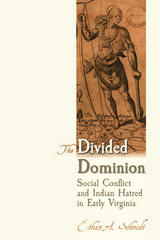 The Divided Dominion: Social Conflict and Indian Hatred in Early Virginia
Ethan A. Schmidt
University Press of Colorado, 2014 In The Divided Dominion, Ethan A. Schmidt examines the social struggle that created Bacon's Rebellion, focusing on the role of class antagonism in fostering violence toward native people in seventeenth-century Virginia. This provocative volume places a dispute among Virginians over the permissibility of eradicating Native Americans for land at the forefront in understanding this pivotal event. Myriad internal and external factors drove Virginians to interpret their disputes with one another increasingly along class lines. The decades-long tripartite struggle among elite whites, non-elite whites, and Native Americans resulted in the development of mutually beneficial economic and political relationships between elites and Native Americans. When these relationships culminated in the granting of rights—equal to those of non-elite white colonists—to Native Americans, the elites crossed a line and non-elite anger boiled over. A call for the annihilation of all Indians in Virginia united different non-elite white factions and molded them in widespread social rebellion. The Divided Dominion places Indian policy at the heart of Bacon's Rebellion, revealing the complex mix of social, cultural, and racial forces that collided in Virginia in 1676. This new analysis will interest students and scholars of colonial and Native American history.
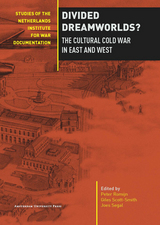 Divided Dreamworlds?: The Cultural Cold War in East and West
Edited by Peter Romijn, Giles Scott-Smith, and Joes Segal
Amsterdam University Press, 2012 While the divide between capitalism and communism, embodied in the image of the Iron Curtain, seemed to be as wide and definitive as any cultural rift, Giles Scott-Smith, Joes Segal, and Peter Romijn have compiled a selection of essays on how culture contributed to the blurring of ideological boundaries between the East and the West. This important and diverse volume presents fascinating insights into the tensions, rivalries, and occasional cooperation between the two blocs, with essays that represent the cutting edge of Cold War Studies and analyze aesthetic preferences and cultural phenomena as various as interior design in East and West Germany; the Soviet stance on genetics; US cultural diplomacy during and after the Cold War; and the role of popular music as the universal cultural ambassador.
An illuminating and wide-ranging survey of interrelated collective dreams from both sides of the Iron Curtain, Divided Dreamworlds? has a place on the bookshelf of any modern historian.
Divided Families: What Happens to Children When Parents Part
Frank F. Furstenberg, Jr. and Andrew J. Cherlin
Harvard University Press, 1991 In spite of the upset children experience after parental separation, Furstenberg and Cherlin find that most children adapt successfully as long as their mother does reasonably well financially and psychologically, and as long as conflict between parents is low. The casualty of divorce is usually the declining relationship between fathers and their children.
Divided Friends
William L. Portier
Catholic University of America Press, 2013 In two sets of intertwined biographical portraits, spanning two generations, Divided Friends dramatizes the theological issues of the modernist crisis, highlighting their personal dimensions and extensively reinterpreting their long-range effects. The four protagonists are Bishop Denis J. O?Connell, Josephite founder John R. Slattery, together with the Paulists William L. Sullivan and Joseph McSorley. Their lives span the decades from the Americanist crisis of the 1890s right up to the eve of Vatican II. In each set, one leaves the church and one stays. The two who leave come to see their former companions as fundamentally dishonest. Divided Friends entails a reinterpretation of the intellectual fallout from the modernist crisis and a reframing of the 20th century debate about Catholic intellectual life.
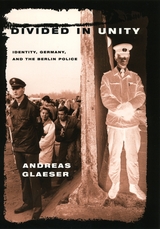 Divided in Unity: Identity, Germany, and the Berlin Police
Andreas Glaeser
University of Chicago Press, 1999 More than a decade after unification, Germany remains deeply divided. Following East and West German police officers on their patrols through the newly-united city of Berlin and observing how they make sense of one another in a fast-changing environment, Andreas Glaeser explains how East-West boundaries have been maintained by the interactions of institutions, practices, and cultural forms-including diverging patterns of understanding rooted in vastly different social systems, readily revived Cold War images, the continuing search for an adequate response to Germany's Nazi past, and the politics and organization of unification, which impose highly asymmetrical burdens on east and west. Glaeser also leverages his ethnography to develop an innovative approach to studying identity formation processes. Central to his theory is an emphasis on the exchange of identifications and the particular ways in which they are deployed and recognized in interpretations, narratives, and performances as parts of face-to-face encounters, political discourses, and organizational practices.
 Divided Island: Faction and Unity on Saint Pierre
William A. Christian, Jr.
Harvard University Press A small group of islands off the coast of Newfoundland—Saint Pierre, Île aux Marins, and Miquelon-Langlade—comprises France’s last territorial possession in North America. Most of the population lives on the island of Saint Pierre in the town of the same name, which is the archipelago’s only real harbor. During the last two centuries, various issues have placed the inhabitants of Saint Pierre in opposing groups, but no question divided them so precisely along latent social and economic lines as did the choice required of them in 1940–1941. The nature of the Free French–Vichy confrontation touched Saint Pierre society at its most vulnerable point.
Students of France will find that the story of Saint Pierre is in many ways the story of twentieth-century France in microcosm. But this fascinating account also provides a case study in the ideological repercussions of social and economic change. Using a combination of anthropological fieldwork and historical research, William Christian examines the social ideas, social conflicts, and economy of the island from 1900 to the present. He shows that the Pétainist–Gaullist division was a culminating step in a trend that had been going on since the beginning of the century, the direct result of economic decline, rising aspirations, and the substitution of government welfare for a system of private aid and credit. The division is analyzed in terms of social structure in conjunction with essential differences in the world views of the two parties. The author illustrates the stages in the evolution of personal and group quarrels and develops the concept of an “information set,” a social unit defined by the communication and sharing of private information.
In the conclusion of this lively social history, Christian discusses the role of the idea of the “community as a family” and its decline in Saint Pierre during the last sixty years.
Divided Korea: The Politics of Development, 1945–1972
Joungwon Alexander Kim
Harvard University Press, 1975 Divided Korea is a comparative study of development in North and South Korea, beginning at the time of Korea’s independence from Japan in 1945 and ending in 1972. Looking at events in the two areas of Korea from the perspective of those who seek to create a configuration of power through which to govern and promote the development of Korea, the author draws interesting parallels between the challenges affecting the Southern and Northern efforts at consolidation.
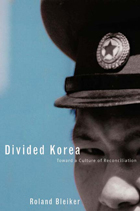 Divided Korea: Toward a Culture of Reconciliation
Roland Bleiker
University of Minnesota Press, 2005 In 2002, North Korea precipitated a major international crisis when it revealed the existence of a secret nuclear weapons program and announced its withdrawal from the Nuclear Nonproliferation Treaty. Earlier in the year, George W. Bush had declared North Korea part of the “axis of evil,” and soon afterward his administration listed the country as a potential target of a preemptive nuclear strike. Pyongyang’s angry reaction ensured the complete deterioration of relations on the Korean peninsula, where only two years before the leaders of North and South Korea had come together in a historic summit meeting. Few international conflicts are as volatile, protracted, or seemingly insoluble as the one in Korea, where mutual mistrust, hostile Cold War attitudes, and the possibility of a North Korean economic collapse threaten the security of the entire region. For Roland Bleiker, this persistently recurring pattern suggests profound structural problems within and between the two Koreas that have not been acknowledged until now. Expanding the discussion beyond geopolitics and ideology, Bleiker places peninsular tensions in the context of an ongoing struggle over competing forms of Korean identity. Divided Korea examines both domestic and international attitudes toward Korean identity, the legacy of war, and the possibilities for-and anxieties about-unification. Divided Korea challenges the prevailing logic of confrontation and deterrence, embarking on a fundamental reassessment of both the roots of the conflict and the means to achieve a more stable political environment and, ultimately, peace. In order to realize a lasting solution, Bleiker concludes, the two Koreas and the international community must first show a willingness to accept difference and contemplate forgiveness as part of a broader reconciliation process.
Roland Bleiker is professor of international relations at the University of Queensland. From 1986 to 1988 he served as chief of office for the Swiss delegation to the Neutral Nations Supervisory Commission in Panmunjom.
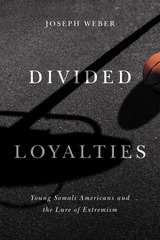 Divided Loyalties: Young Somali Americans and the Lure of Extremism
Joseph Weber
Michigan State University Press, 2020 Why do people join violent extremist movements? What attracts so many to fight for terrorist groups like al-Shabab, al-Qaida, and the Islamic State? Journalism professor Joseph Weber answers these questions by examining the case of the more than fifty Somali Americans, mostly young men from Minnesota, who made their way to Somalia or Syria, attempted to get to those countries, aided people who did, or financially backed terrorist groups there. Often defying parents who had fled to the United States seeking safety and prosperity for their children, many of these youths ended up dead, missing, or imprisoned. But for every person who went on or attempted this journey believing they were rising to the defense of Islam, more rejected the temptations of terrorism. What made the difference? The book takes a close look at one man from Minneapolis, the American-born son of a couple who had fled Somalia, who came dangerously close to answering the ISIS call. Abdirahman Abdirashid Bashir’s cousins and friends had taken up arms for the group and reached out to him to join them. From 2014 to 2016 he and a dozen friends—some still in their teens—schemed to find ways to get to Syria. Some succeeded. In the end, Bashir made a different choice. Not only did he reject ISIS’s call, he decided to work with the FBI to spy on his friends and ultimately to testify against them in court. Drawing on extensive interviews, Weber explains why.
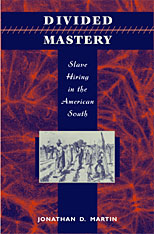 Divided Mastery: Slave Hiring in the American South
Jonathan D. Martin
Harvard University Press, 2004 Divided Mastery explores a curiously neglected aspect of the history of American slavery: the rental of slaves. Though few slaves escaped being rented out at some point in their lives, this is the first book to describe the practice, and its effects on both slaves and the peculiar institution.
Martin reveals how the unique triangularity of slave hiring created slaves with two masters, thus transforming the customary polarity of master-slave relationships. Drawing upon slaveholders' letters, slave narratives, interviews with former slaves, legislative petitions, and court records, Divided Mastery ultimately reveals that slave hiring's significance was paradoxical.
The practice bolstered the system of slavery by facilitating its spread into the western territories, by democratizing access to slave labor, and by promoting both production and speculation with slave capital. But at the same time, slaves used hiring to their advantage, finding in it crucial opportunities to shape their work and family lives, to bring owners and hirers into conflict with each other, and to destabilize the system of bondage. Martin illuminates the importance of the capitalist market as a tool for analyzing slavery and its extended relationships. Through its fresh and complex perspective, Divided Mastery demonstrates that slave hiring is critical to understanding the fundamental nature of American slavery, and its social, political, and economic place in the Old South.
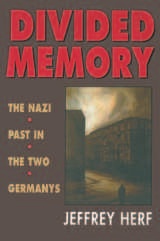 Divided Memory: The Nazi Past in the Two Germanys
Jeffrey Herf
Harvard University Press, 1997 What has Germany made of its Nazi past?
A significant new look at the legacy of the Nazi regime, this book exposes the workings of past beliefs and political interests on how—and how differently—the two Germanys have recalled the crimes of Nazism, from the anti-Nazi emigration of the 1930s through the establishment of a day of remembrance for the victims of National Socialism in 1996.
Why, Jeffrey Herf asks, would German politicians raise the specter of the Holocaust at all, in view of the considerable depth and breadth of support its authors and their agenda had found in Nazi Germany? Why did the public memory of Nazi anti-Jewish persecution and the Holocaust emerge, if selectively, in West Germany, yet was repressed and marginalized in “anti-fascist” East Germany? And how do the politics of left and right come into play in this divided memory? The answers reveal the surprising relationship between how the crimes of Nazism were publicly recalled and how East and West Germany separately evolved a Communist dictatorship and a liberal democracy. This book, for the first time, points to the impact of the Cold War confrontation in both West and East Germany on the public memory of anti-Jewish persecution and the Holocaust.
Konrad Adenauer, Theodor Heuss, Kurt Schumacher, Willy Brandt, Richard von Weizsacker, and Helmut Kohl in the West and Walter Ulbricht, Wilhelm Pieck, Otto Grotewohl, Paul Merker, and Erich Honnecker in the East are among the many national figures whose private and public papers and statements Herf examines. His work makes the German memory of Nazism—suppressed on the one hand and selective on the other, from Nuremberg to Bitburg—comprehensible within the historical context of the ideologies and experiences of pre-1945 German and European history as well as within the international context of shifting alliances from World War II to the Cold War. Drawing on West German and recently opened East German archives, this book is a significant contribution to the history of belief that shaped public memory of Germany’s recent past.
The Divided Mind of Protestant America, 1880-1930
Ferenc M. Szasz
University of Alabama Press, 1982 The Divided Mind of Protestant America is a documented overview of American Protestantism in American culture from beginning to end. It discusses liberal-fundamentalist tensions in America and the role of mainline Protestantism, evangelicalism, and fundamentalism in American culture.
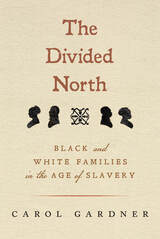 The Divided North: Black and White Families in the Age of Slavery
Carol Gardner
University of Massachusetts Press, 2025 Reuben Ruby and Nathaniel Gordon II were born eleven months apart in 1798 and 1799 and spent much of their boyhoods roaming the noisy, bustling waterfront of Portland, Maine. They lived just blocks from one another, attended school together, and went to the same church with their families. But they were worlds apart, separated by family, culture, and race. Reuben Ruby was Black and Nathaniel Gordon was White.
The Rubys became prominent antislavery activists, equal rights advocates, and operatives on the Underground Railroad. Their neighbors, the Gordons, became well-to-do ship masters, owners, and merchants: among them, the most notorious American slave ship captain of the century, Nathaniel Gordon III. As activists, sea captains, businessmen, prospectors, and politicians, members of these two families traveled to New York, California, Texas, Louisiana, Africa, Haiti, and Brazil, where their experiences were shaped by their racial identities. At home in the “Free North,” they faced social and political divisions nearly as sharp as those they encountered elsewhere.
To understand the issues that divided nineteenth-century America—and, in many ways, still divide the nation—few have looked to the far North. In this compelling narrative history and intimate dual-family biography, Carol Gardner traces the Rubys and Gordons as they navigate the turbulent 1800s. As families and individuals, they demonstrate that the North was a critical proving ground for American notions of freedom and equality, as telling as any town, plantation, or battlefield in the South. Their experiences help reveal what it meant to live in a free state during the age of slavery, with all the promise, disappointment, irony, and hope that the notion entailed.
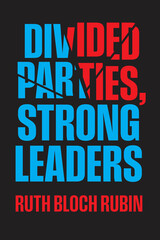 Divided Parties, Strong Leaders
Ruth Bloch Rubin
University of Chicago Press, 2025 Drawing on nearly a century of legislative history, this careful account invites readers to think anew about when, why, and how leaders of divided parties wield power in Congress. For decades, legislative scholars have viewed party divisions as critical constraints on congressional leadership. The more a party’s rank and file disagree with one another, the weaker their leaders are predicted to be; as member preferences converge, leader power is thought to increase. In a powerful corrective to this prevailing view, Ruth Bloch Rubin argues that party divisions are not inherently limiting. Divided Parties, Strong Leaders highlights and examines variation in how members of party factions choose to work together. She shows that leaders of divided parties are well positioned to overcome, and even draw strength from, their divided ranks when the collaborative efforts of their coalitions’ competing factions are evenly matched. By contrast, their capacity to get what they want is more limited when one faction has out-collaborated its competition. Presenting detailed case studies of some of the most storied leaders of the postwar Congress, including Speakers Sam Rayburn and Nancy Pelosi, Bloch Rubin analyzes the factional configuration each leader encountered and explains why it mattered for their exercise of power.
|
|

